- More More
- Blog
- Inspire me
- Groups
- Offers More
- Dive Courses More
- Liveaboards
More

Liveaboard Trips
On-board accommodation offering the opportunity to live right over the dive sites and to experience secluded dives...
Diving regions...
- LATEST AVAILABILITY BY REGION
- Red Sea availability
- Maldives availability
- Indonesian availability
- Socorro Mexico availability
- Galapagos availability
- ALL LIVEABOARD DIVING REGIONS
- Bahamas
- Bikini Atoll
- Caribbean
- Cocos Island
- Destinations
MoreDIVING REGIONS...
Our Top destinations....Why not try....
Find a trip
- Resort
- Liveaboard
Top 10 Places to Learn to Dive
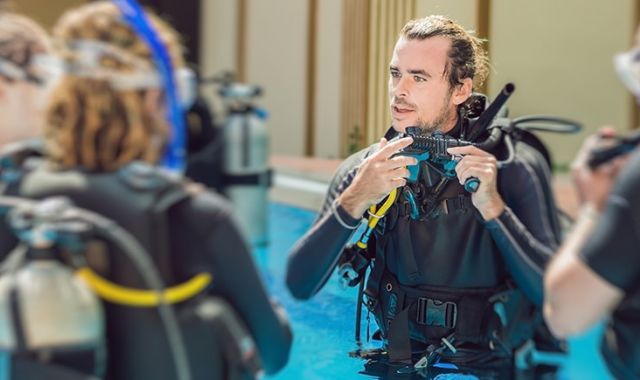
2 Jun 2025
Choosing the right destination to learn to dive is crucial and there are many factors to consider. The professionalism of the dive centre, safety, access to suitable dive sites for student divers and consistent underwater conditions are just some of the factors to consider.
Here, we give our tips on the top ten diving destinations for beginners.
Sharm el Sheikh, Red Sea
Sharm el Sheikh has all the ingredients for the perfect learn to dive holiday. Just 5 hours from the UK and Europe this area boasts a range of sites that are perfect for beginner divers with safe, shallow coral reefs on which to get comfortable with being underwater. Add in professional dive centres, year round sunshine and great marine life and it is not hard to see why Sharm kicks off our list.
Learn more about our 8-day Learn to Dive Sharm el Sheikh holiday.
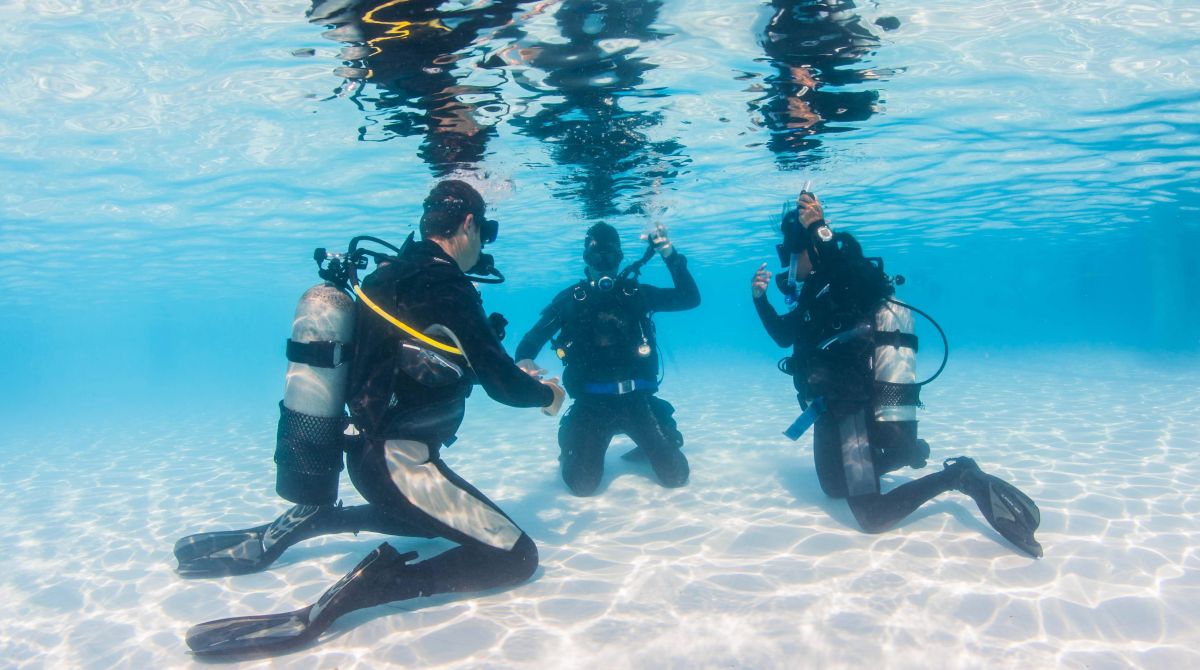
Malta & Gozo
Possibly Europe's premier dive destination, the Mediterranean islands of Malta & Gozo feature excellent dive centres and a range of shore diving sites well suited to those looking to learn to scuba dive. Spend your time on one island only, or extend your holiday to combine both. A great choice for those on a tighter budget.
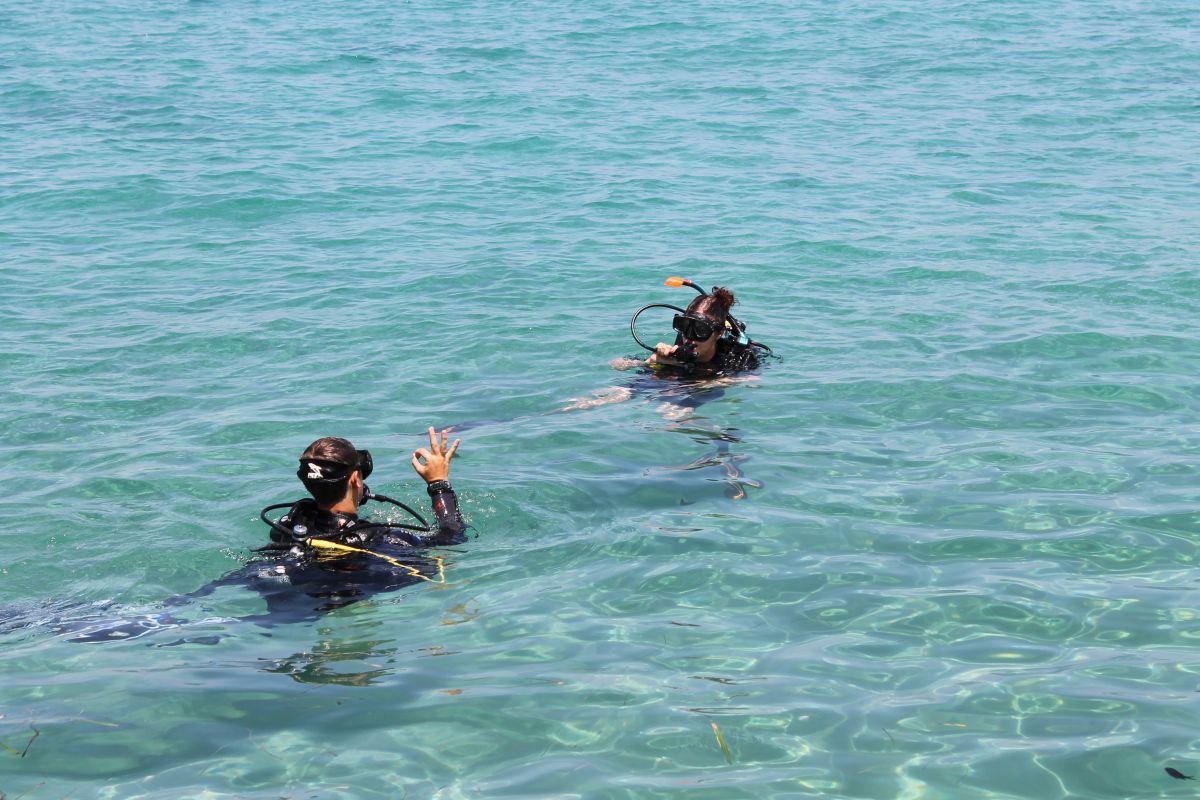
Soma Bay, Red Sea
Conveniently located less than an hour south of Hurghada and with a range of convenient and cost effective flight options, Soma Bay is another winning option. Boasting an award winning dive resort and excellent facilities, the house reef provides ideal conditions for training dives. As your get your confidence, a range of suitable dive sites are also available a short boat ride away.
Find out more about our 8-day holiday to Learn to Dive in Soma Bay.
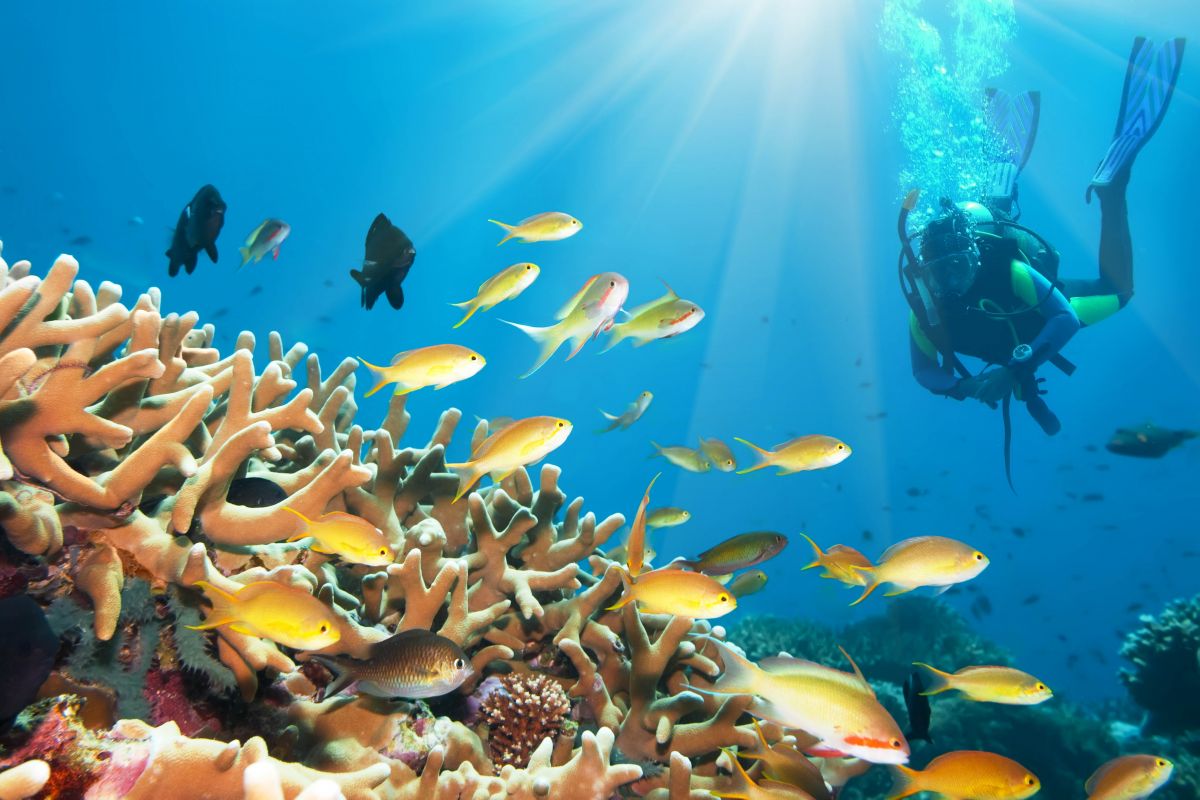
Lanzarote
Another excellent value option with many direct flights, Lanzarote arguably offers the best diving in the Canary Islands and is well suited to those looking to take their Open Water course. Based on a family friendly sandy beach, our award-winning partner dive centre is blessed with suitable dive sites starting right from the shore.
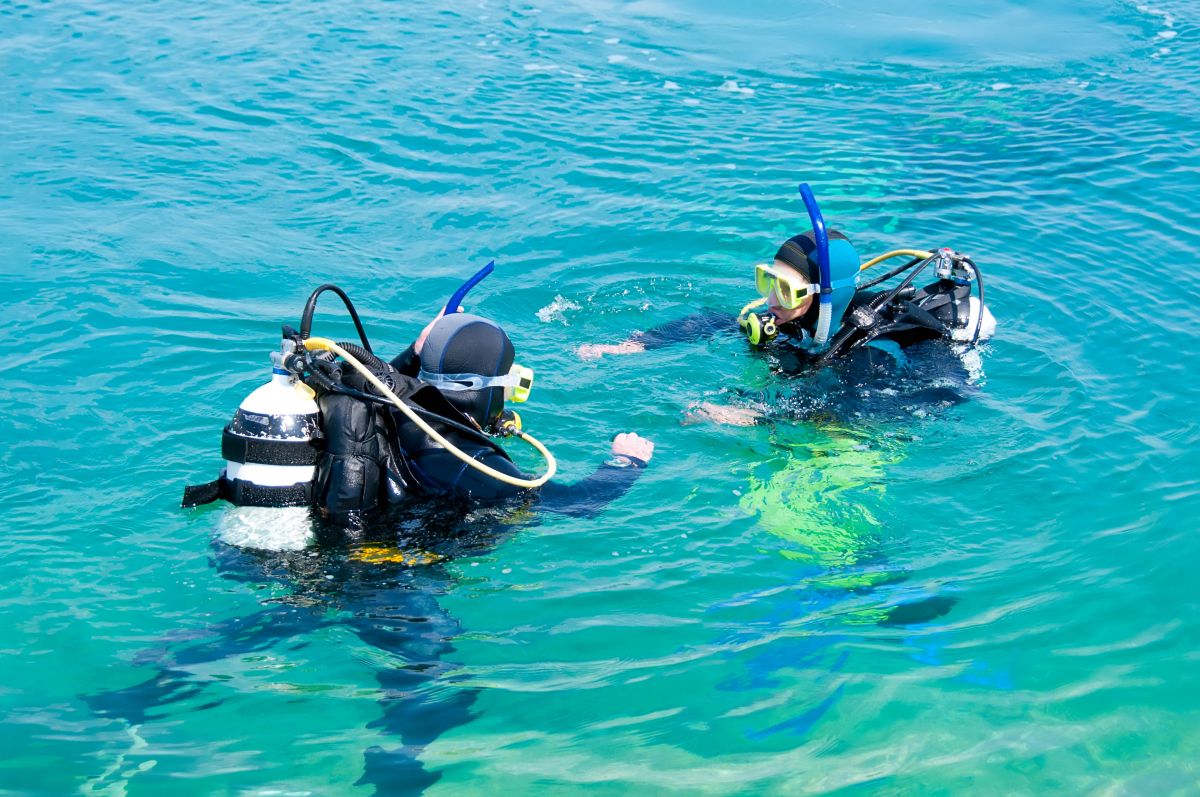
Grenada
Dubbed the Spice Island of the Caribbean, Grenada is blessed with year-round sunshine and ideal conditions for learning to dive. Oozing charm, Grenada has extremely professional dive centres and plenty of dive sites suitable for the beginner. More adventurous souls should stay longer to check out Grenada's lesser known twin Carriacou, known as the land of reefs.
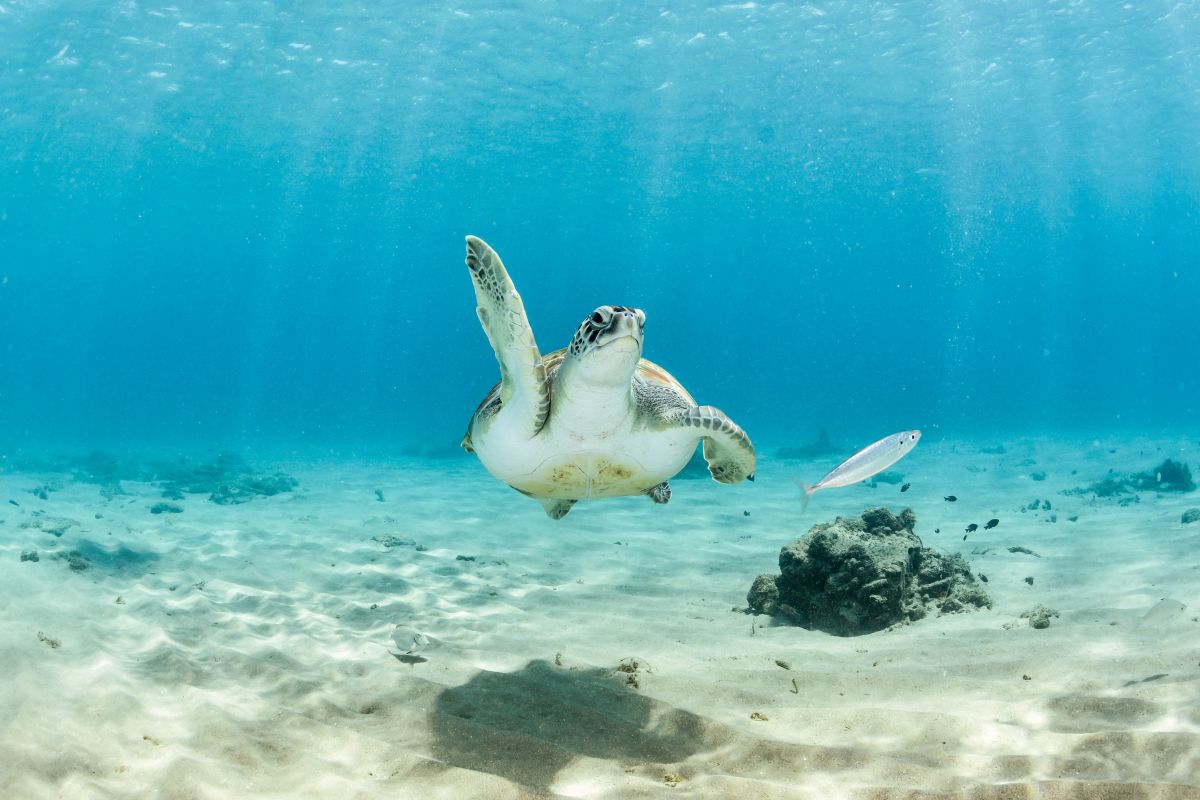
North & South Malé Atolls, Maldives
World-famous for its picture perfect atolls and azure blue waters, the Maldives has been a diving mecca for years. Learning to dive here is more expensive than other destinations, but the rewards are plentiful. Well established, professional dive centres offer very high levels of tuition, with excellent shore diving available from the best dive resorts. Providing diving opportunities on a par with many more remote spots in the Maldives, we recommend using the North or South Malé atolls as a base to learn, leaving some of the outer atolls to explore once you are qualified divers.
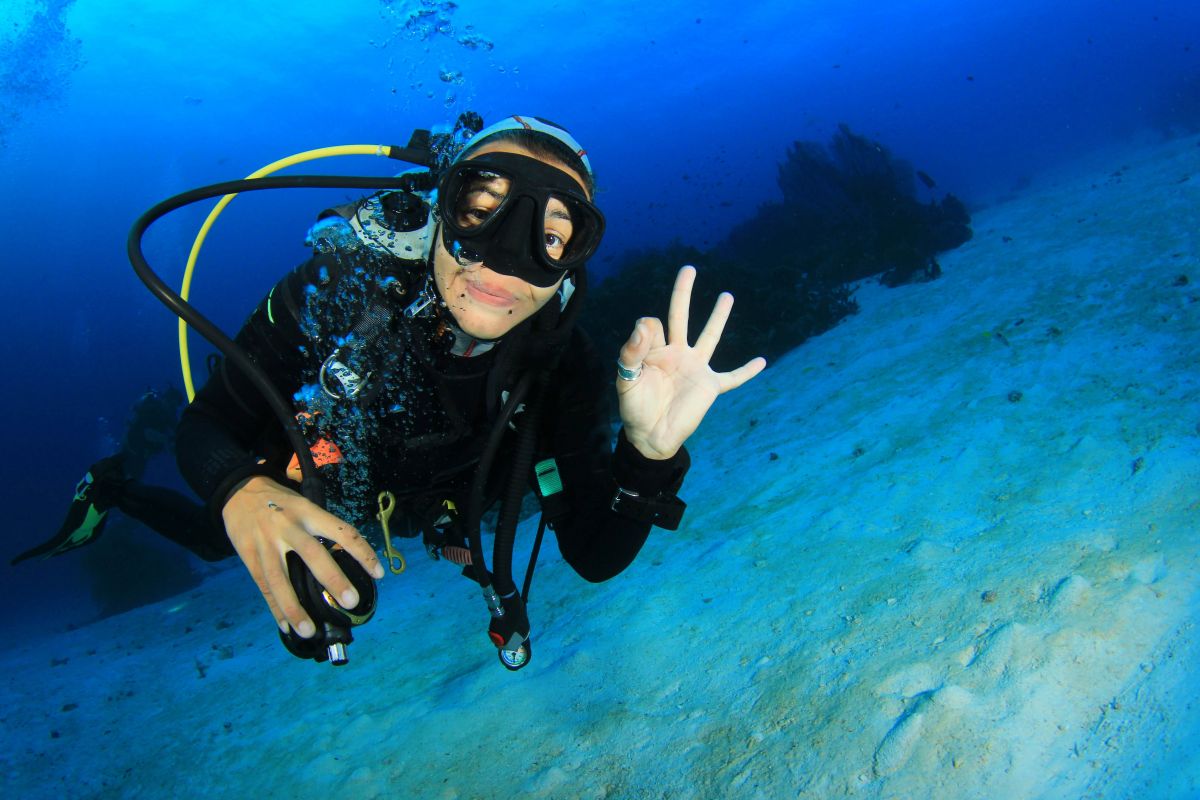
Jebel Sifah, Oman
Possibly less well known for its diving than some of the other destinations on this list, Oman never-the-less has much to shout about. Year-round sunshine and good flight options combine with excellent diving just a short distance from the country's capital, Muscat. European dive centres provide a high standard of tuition, with a good choice of dive sites available to suit those new to the sport.
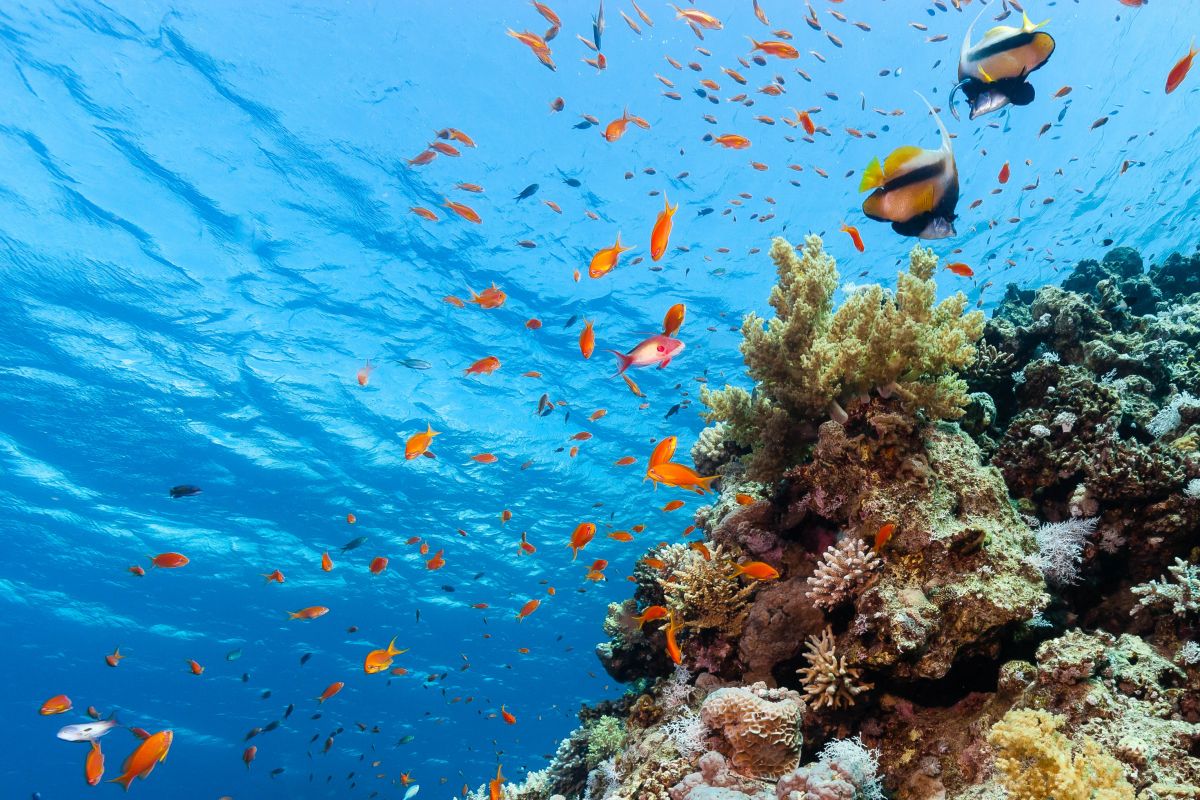
The Visayas Islands, Philippines
This group of islands in the central Philippines offers a range of great options, many of which can be combined to make a longer holiday. One could head to the vibrant reefs of Bohol to learn to dive with highly professional European-run dive centres, before exploring the delights of Moalboal, Malapascua or beyond. The choice is yours! Warm, tropical waters, wonderful marine life and a friendly welcome add to the appeal for new divers.
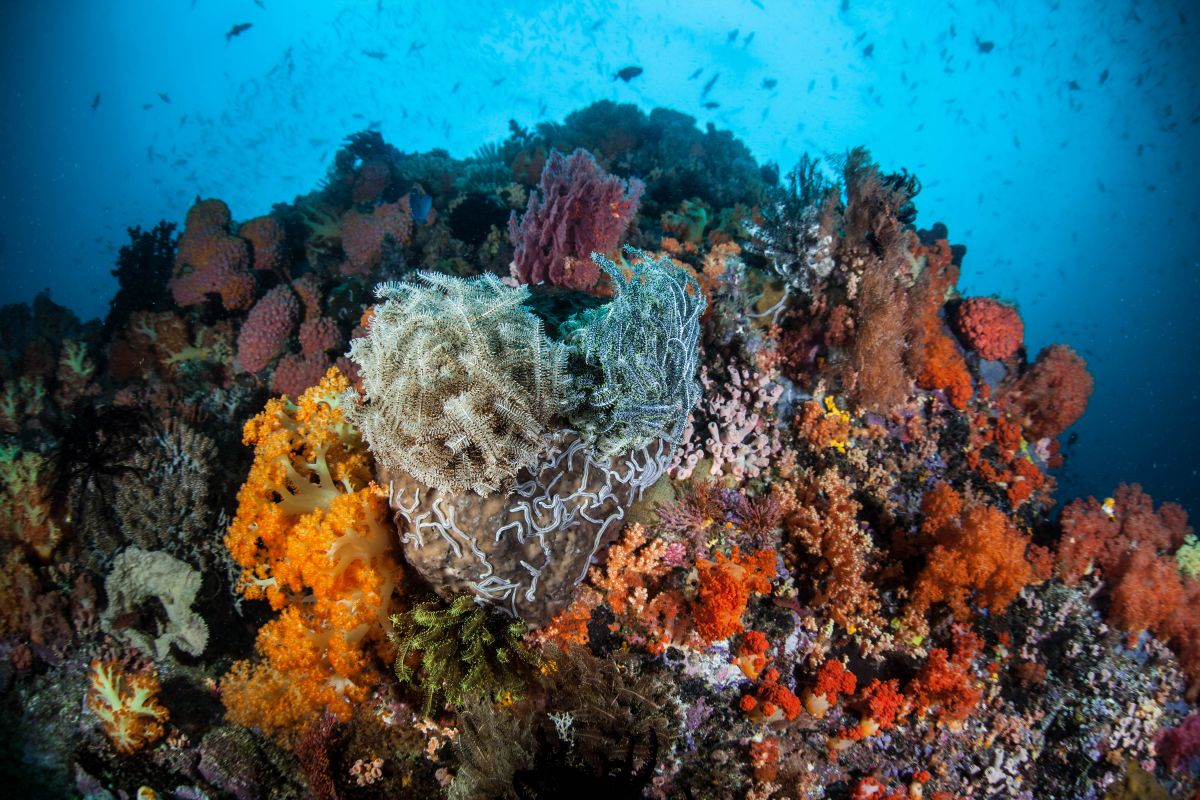
Yucatan Peninsula, Mexico
With outstanding Caribbean beaches and fascinating archaeological sites, Mexico's Yucatan Peninsula has plenty to enjoy and inspire topside, but that's not where the appeal ends. The coastline around Puerto Aventuras and the island of Cozumel offer wonderful reefs and great conditions for beginners. You'll be looked after every step of the way by an experienced, professional dive team to get your diving odyssey off to a flying start.
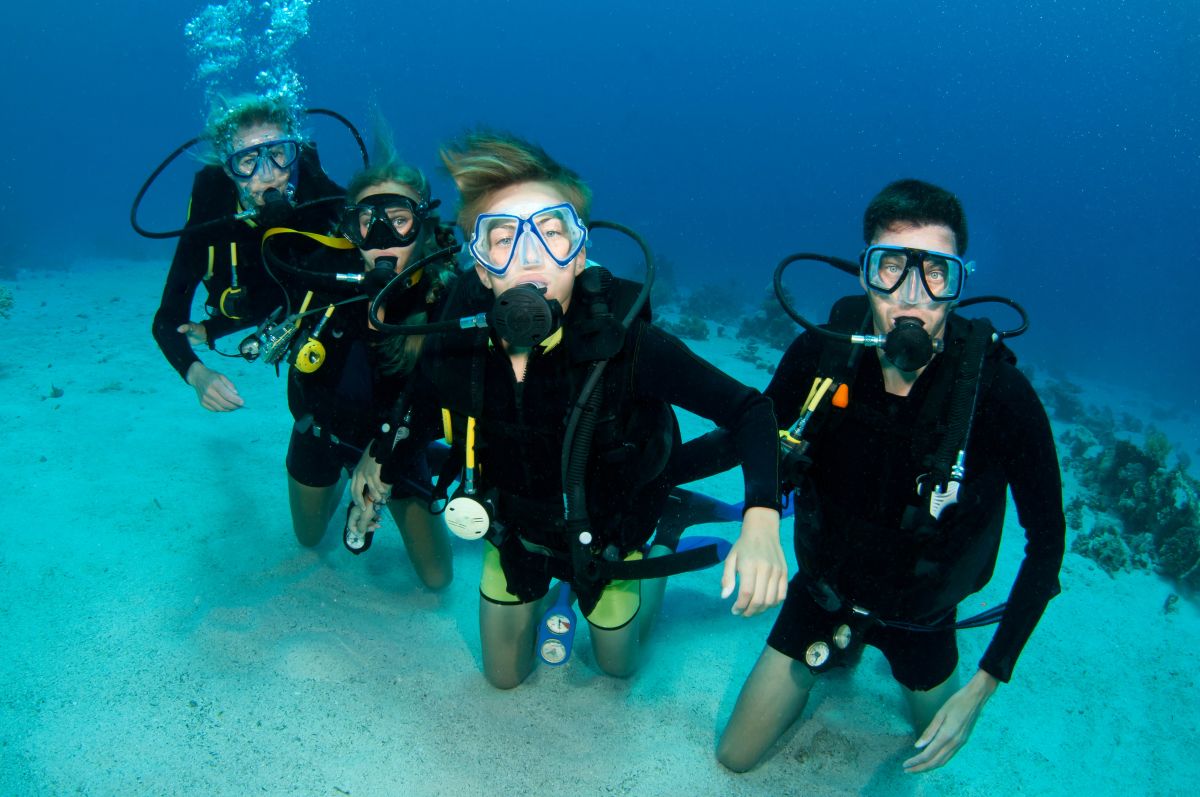
Bunaken National Marine Park, Indonesia
Located just off the coast from Manado and easily reached from the UK and Europe, Bunaken National Marine Park offers everything a beginner diver could possibly wish for. This region boasts a wonderful climate, while the warm tropical waters are famed for their colourful coral corals and marine life. One of Indonesia's most famous diving areas, Bunaken has a range of outstanding dive resorts offering professional instruction and excellent facilities. Oh, and don’t forget to look out for turtles!
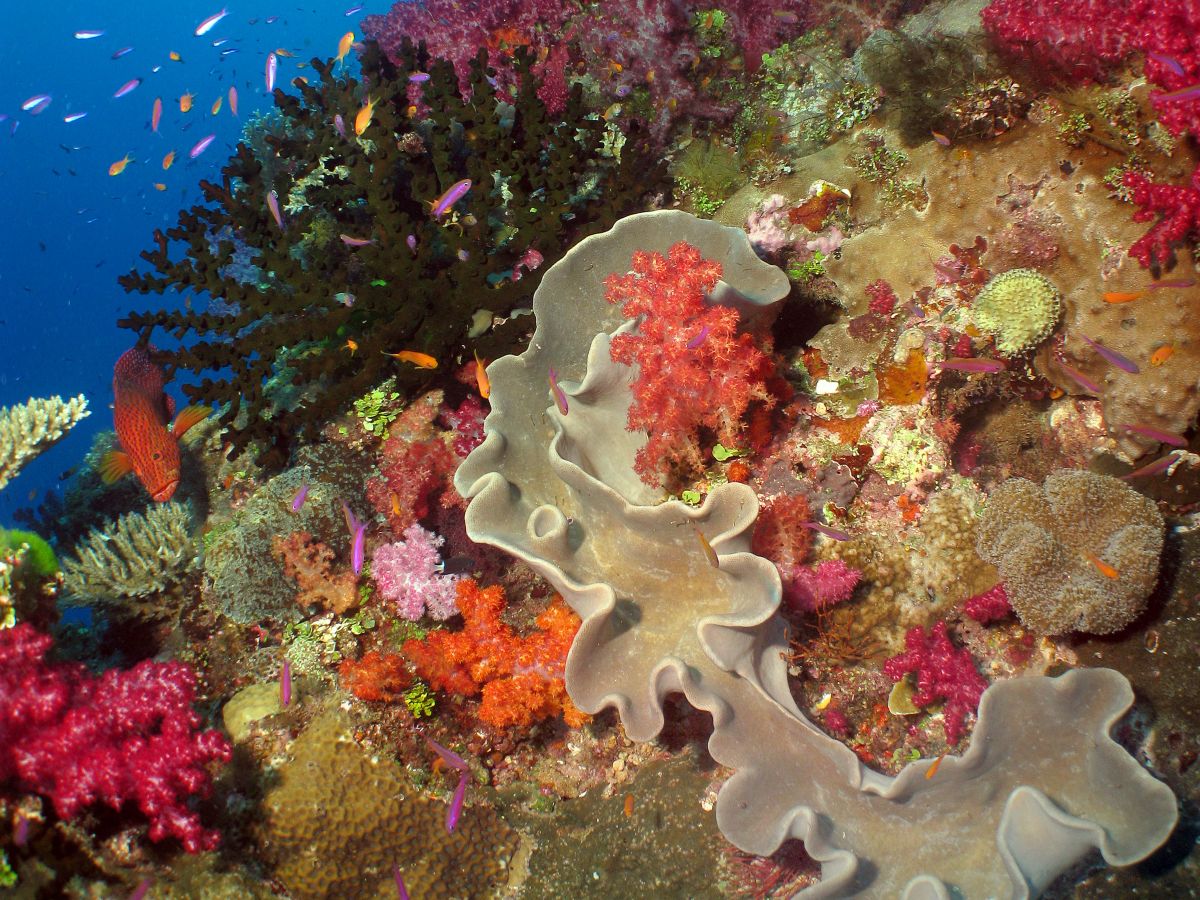
If you are considering learning to dive, get in touch with our friendly team of dive professionals today on 01353 659999. We'll be happy to answer any questions you may have and advise on the best options for you.
With over 30 years' experience, we tailor our holidays to suit your precise needs. Our small, dedicated team offer a personal and attentive service to ensure every detail of your holiday is covered.
Find a trip
- Resort
- Liveaboard
Best Places to Dive with Manta Rays
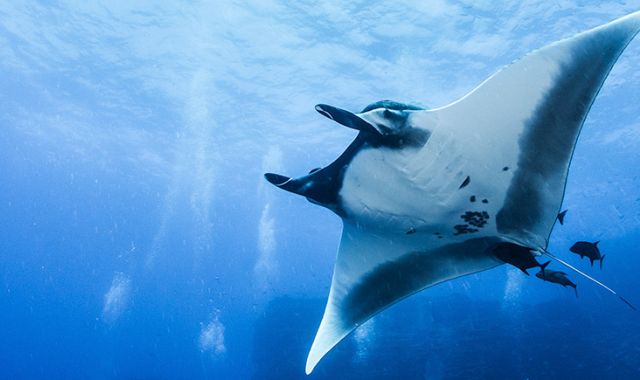
26 Jan 2025
Maldives
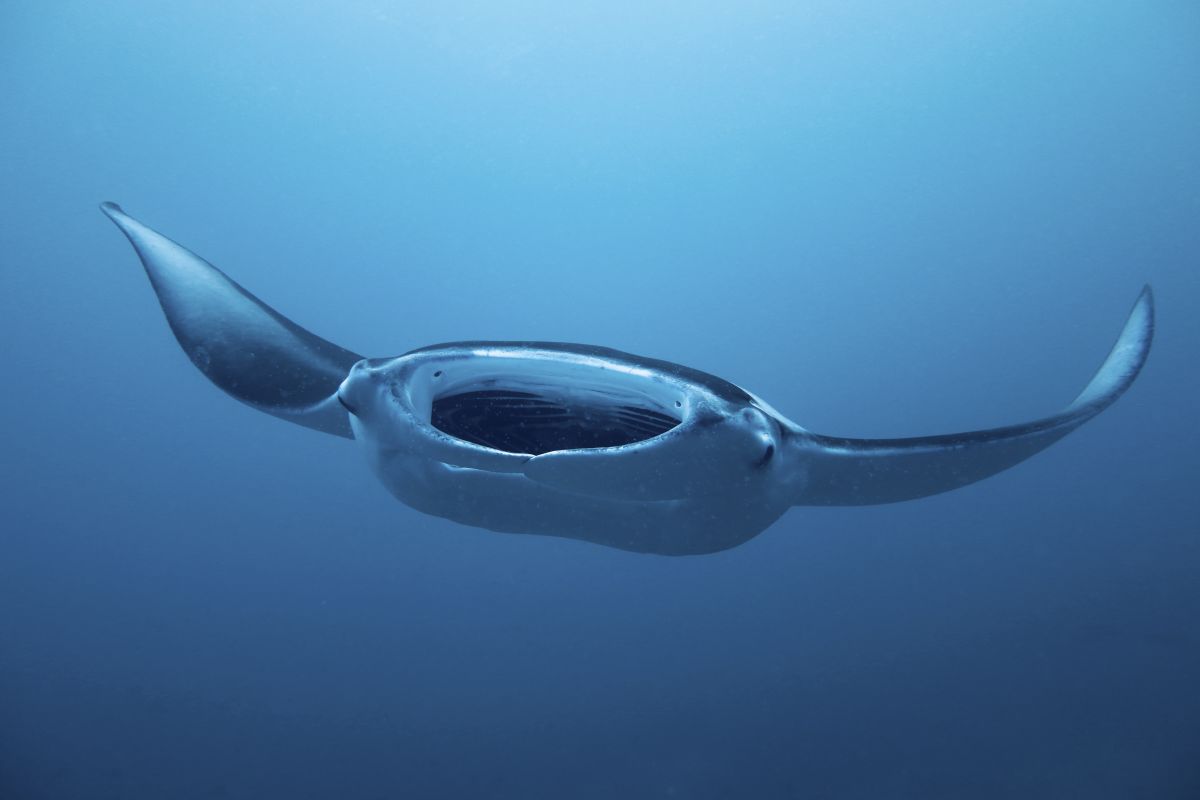
A renowned romantic getaway for some but a sensational scuba diving destination for us.
From 5-star luxury resorts and an increasing number of affordable options we’re confident we have a diving holiday to the Maldives that suits your budget. Manta ray encounters are common throughout the year, but there are certain areas which offer more reliable sightings especially when more plankton is present in the waters. One such area is the southern Ari Atoll. Vilamendhoo Island Resort has been a firm favourite over the years with its spectacular house reef just a few fin kicks away from the sun kissed beaches. In the later half of the year, mantas are often seen nearby. Built by divers, for divers, Boutique Beach offers an incredible diving experience for all. Mantas are regularly seen feeling in the lagoon and at the cleaning station at Rangali in the first few months of the year.
Perhaps you’d like to escape dry land altogether in which case you could hop on a liveaboard. We feature a selection of boats operating interesting itineraries throughout the Maldives visiting the best sites in season. Look out for itineraries such as ‘Pelagic Magic’ and Hanifaru & North’ where manta ray encounters are high on the agenda. Along with whale sharks, majestic mantas aggregate in Hanifaru Bay for the annual feeding frenzy (July to October). Encounters here are snorkelling only, but there are multiple cleaning stations nearby, so divers get the best of both! Learn more about our Maldives liveaboards and their itineraries here.
No matter how you choose to visit the Maldives, we’re confident that it provides one of the best opportunities to see mantas (particularly reef mantas) in the world.
Socorro
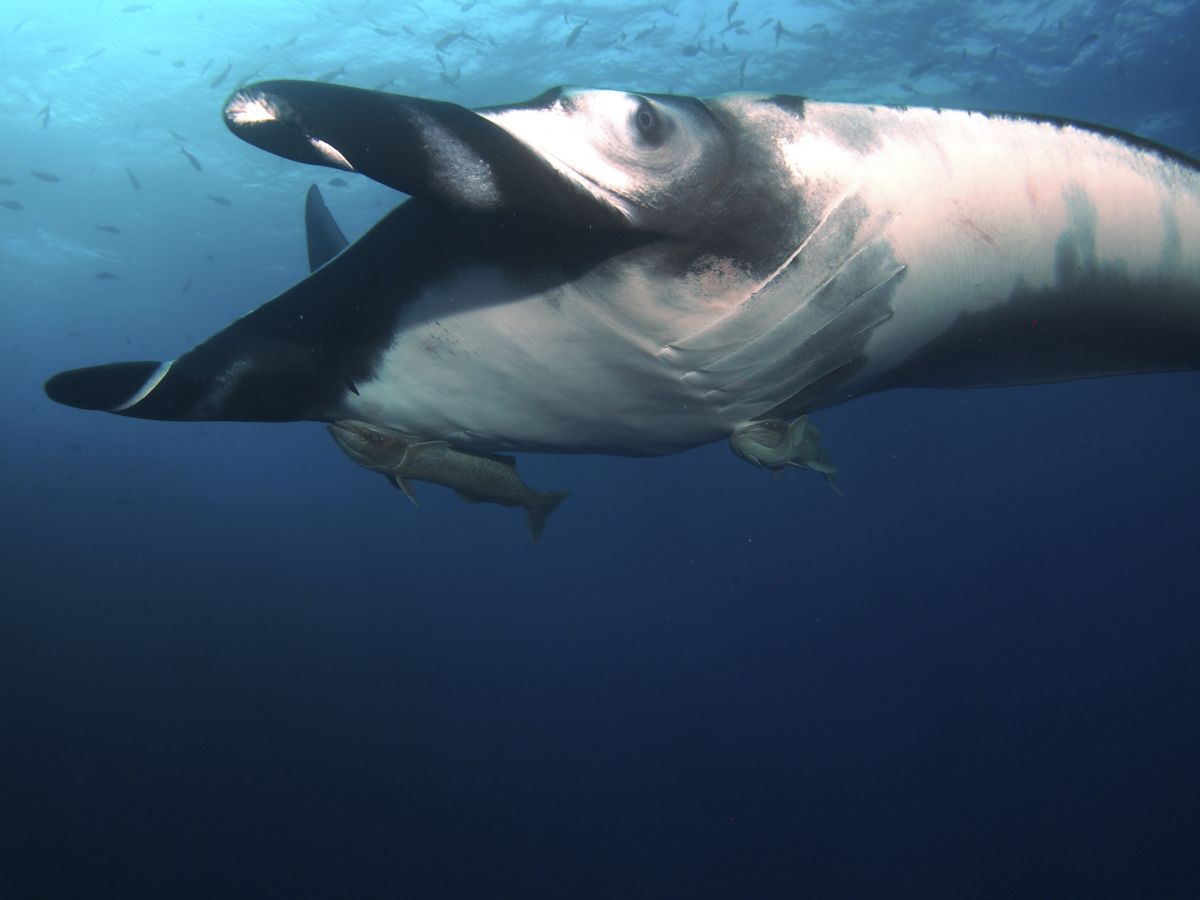
Image by Mat Howell
As diving destinations go, they don’t get much more remote than this! As long as you can stomach the 36-hour sea crossing, mantas (very big oceanic ones!) are as good as guaranteed in the waters around the islands that have become dubbed the ‘Galapagos of Mexico’.
Not only are the encounters almost guaranteed, from personal experience we can tell you that the giant Pacific mantas seem to enjoy interacting with divers at Socorro. I’d be very surprised if you did not come home telling stories of how one flew just inches over your head…again…and again!
Liveaboard diving only is the order of the day at Socorro and due to the potentially challenging conditions it’s recommended for advanced divers. We feature the two most reputable operators in the region; The Nautilus Fleet and the Pacific Fleet (Solmar V).
More than mantas, you can expect to see up to 10 different species of sharks and at the right time of year and if you’re very lucky indeed - even humpback whales! Socorro remains one of the best diving trips I’ve had the pleasure of taking and I’m sure you wouldn’t be disappointed either.
Find out more about diving in Socorro.
Galapagos
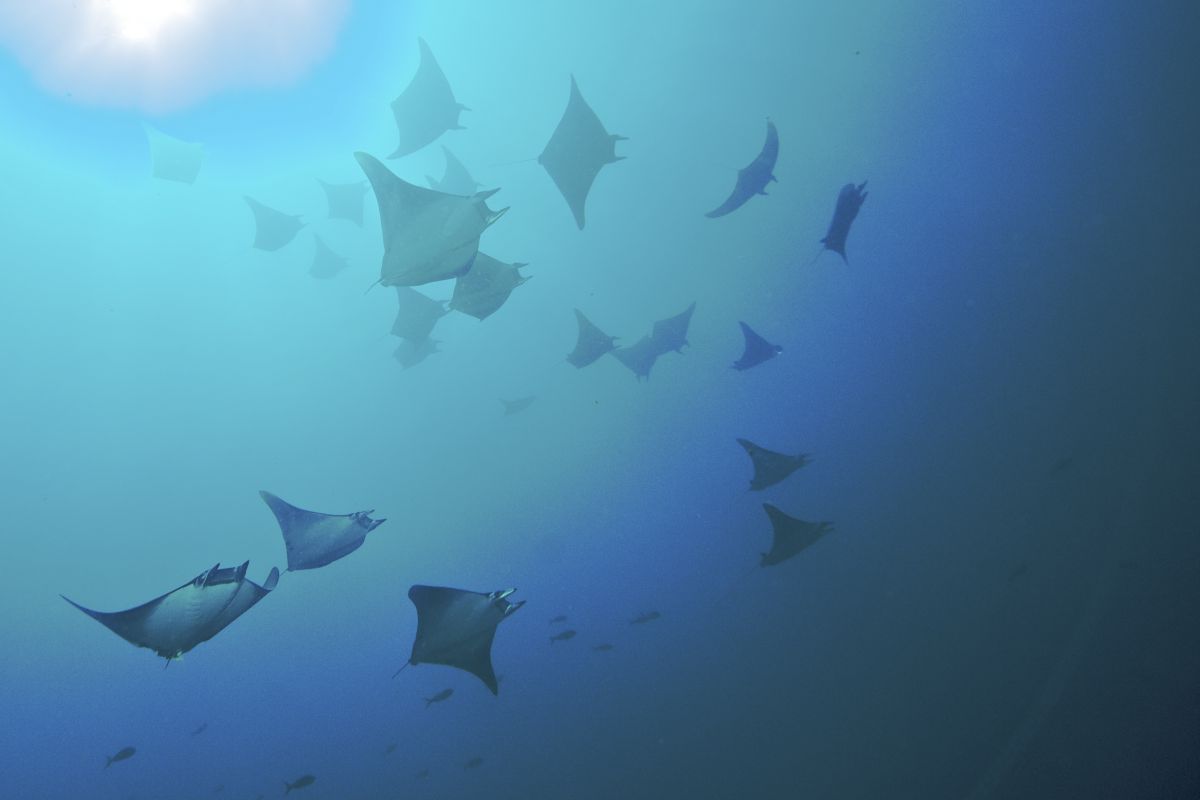
Image by Humboldt Explorer
The destination itself is synonymous with the expression ‘bucket list’. We don’t think we've ever met a single diver who does not dream of visiting the Galapagos someday; an undeniable mecca when it comes to pelagic encounters and much like Socorro, you can be almost guaranteed sightings of manta rays especially from December to May, in season.
Also, like Socorro, it’s more than ‘just’ mantas on the menu when you take to the water during this warmer season. Walls of scalloped hammerhead sharks are often sighted in their hundreds and several species of rays and sharks are seen around the islands. The marine life here is incredible and often unique. Spotting penguins and marine iguanas is also possible. We can’t leave without mentioning the other ‘gentle giants’ of our oceans. Some of the largest recorded whale sharks are seen up at Wolf and Darwin from June to November.
For divers, the best way to experience the Galapagos Islands is by liveaboard. The Humboldt Explorer spends four days at Wolf and Darwin and a dive at Cousins Rock, where mantas and devil rays are regularly seen. We feature five liveaboards in the Galapagos, all offering their own unique and memorable diving itinerary to suit a range of budgets. If you can stay longer, there's opportunity to extend your stay in resort to experience the topside wildlife too.
View all our Galapagos liveaboards.
Indonesia
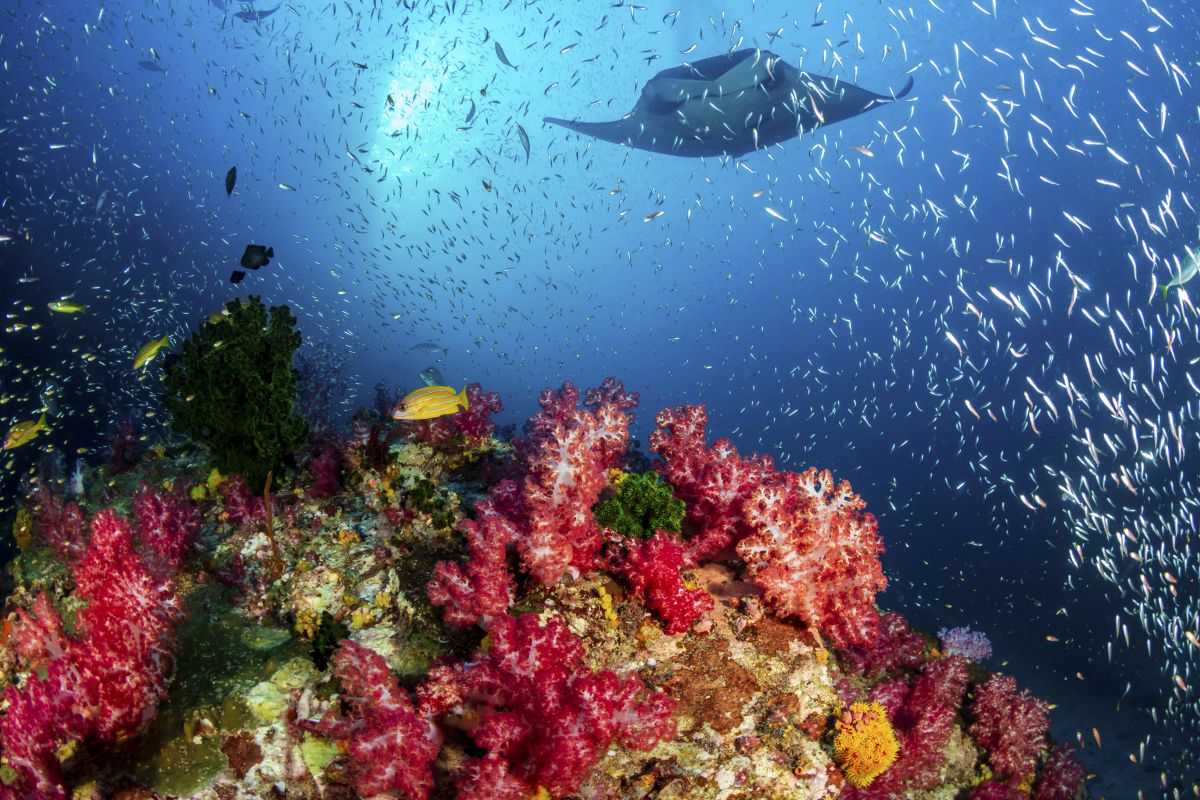
Diving opportunities with manta rays amongst the tropical islands of Indonesia are numerous. Lying at the heart of the Coral Triangle, the marine biodiversity is second to none. This makes it one of the most popular destinations for divers to visit, time and time again. The upwelling of nutrient rich water provides perfect feeding grounds and it’s at the cleaning stations nearby where divers have the best encounters. Both reef and oceanic manta rays are seen throughout the vast archipelago, but never together.
The most popular manta encounters in Raja Ampat are best visited by liveaboard during the months from November to March, but there are several areas nearby to resorts too. Oceanic mantas are regularly seen at ‘Blue Magic’ and 'Magic Mountain’ during these months. Both species can be seen throughout the year in Komodo National Park with numbers increasing with the plankton blooms. The most iconic site being ‘Manta Alley’, but there are others too. The region is best explored by liveaboard or from the comfort of a resort such as the spacious seafront Komodo Resort or Kalimaya Dive Resort. Click here to find out more about liveaboards in Indonesia.
There are other locations in Indonesia where you can encounter these enigmatic creatures. For those who like to get away from the world and seek big fish encounters, head to Derawan off the east coast of Kalimantan. The sites of Sangalaki Island are synonymous for manta ray encounters and there are plenty of other sites where pelagic encounters are commonplace. In addition, there are two sites off the coast of Bali where divers can observe mantas, namely at ‘Manta Point’ off Nusa Penida where a black manta is often seen at the cleaning station.
Find out more about diving locations throughout Indonesia .
Azores
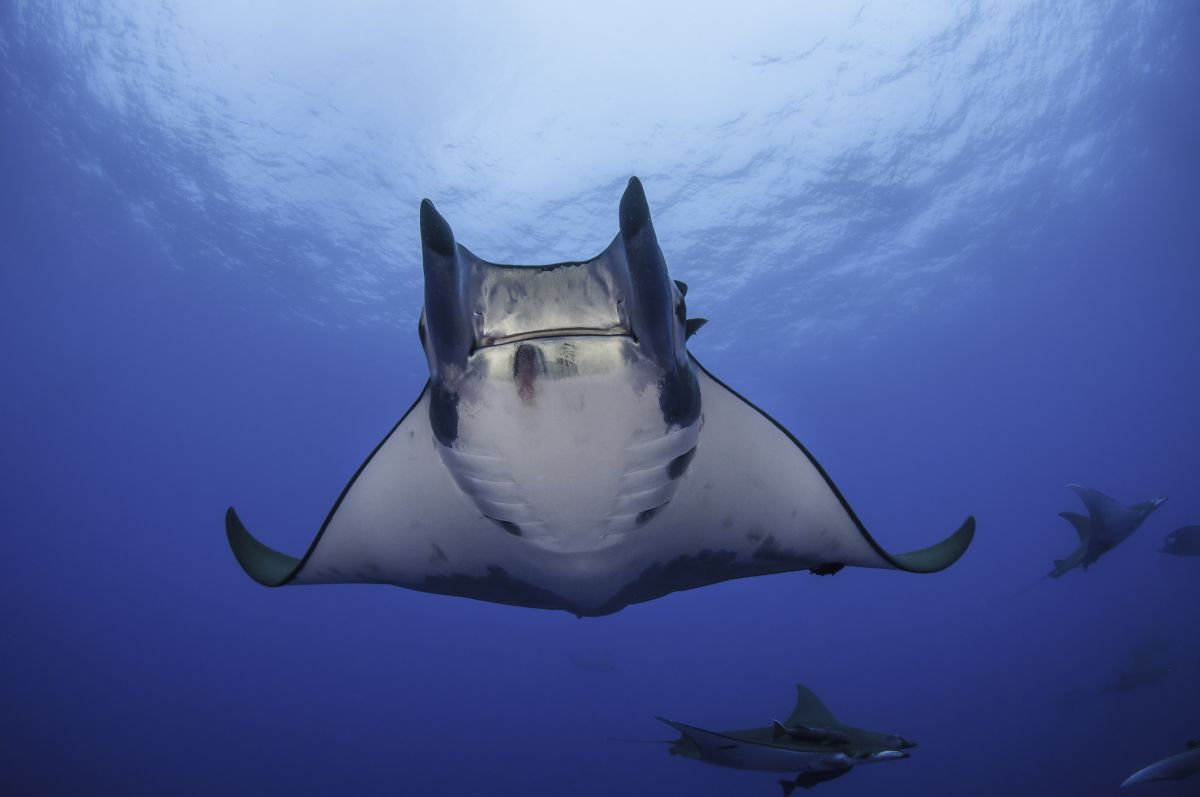
A little closer to home, the islands of the Azores are renowned for their seasonal pelagic encounters. The seamounts and dive sites such as Ambrosio (from Santa Maria island) attract devil rays in large numbers as they come to feed from June to October. Little is known about these shy and elusive creatures, but sicklefin and spinetail devil rays are often seen, as well as oceanic mantas; all members of the mobulid family.
Diving experiences in the Azores are suited to all. The volcanic topography provides homes for sub-tropical fish species and dramatic photographic shots. The seamounts provide a resting place for a variety of pelagic species and several species of whale can be seen on organised excursions (rare to see them underwater). In addition, each island has its own topside characteristics, making the Azores a great twin centre / island hopping destination.
Find out more about diving and topside adventures in the Azores.
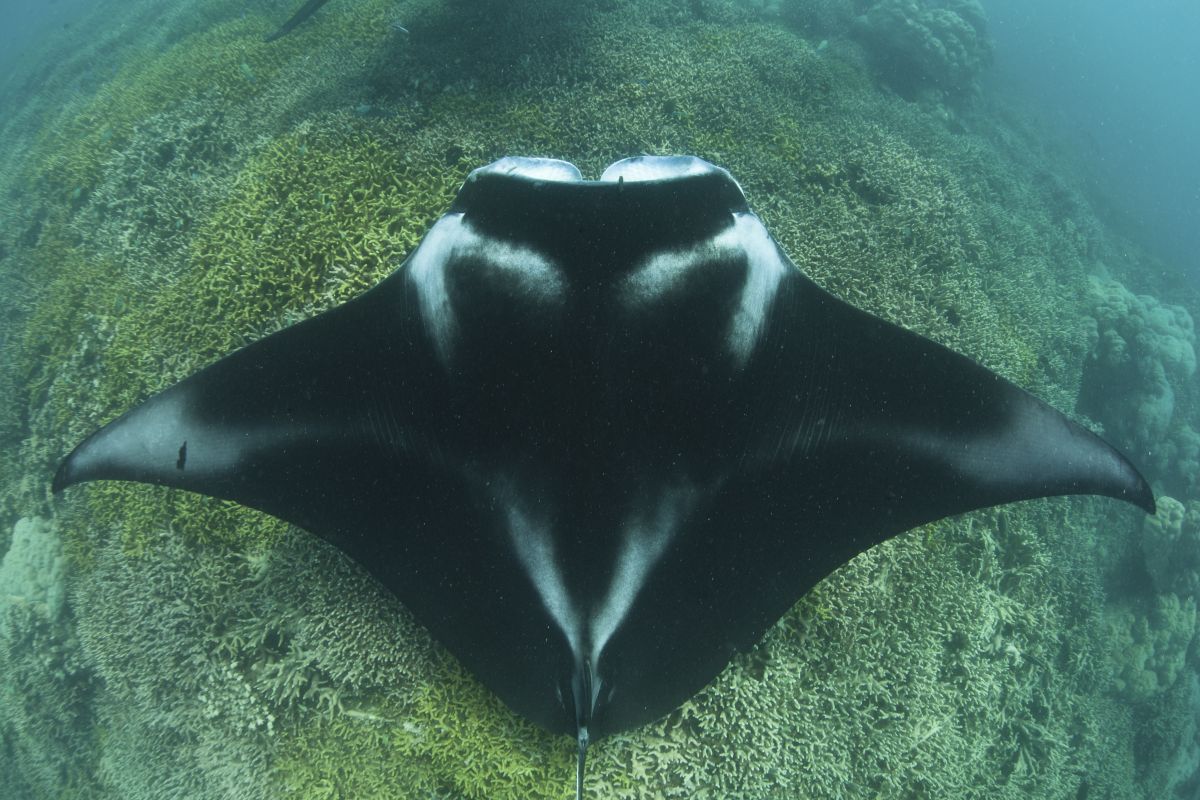
These are just five of the top destinations in the world for mobulid (manta and devil rays) encounters for divers, but there are of course many more places for you to consider. Some of these destinations attract fewer people, in some part due to the difficulty, time and/or cost to reach but they should not be ruled out. Yap in Micronesia is one such example, the Yasawa Islands of Fiji another. Recent legislation has provided protection for the reef and oceanic mantas in Mozambique. There’s a small population being researched near Alphonse Island in the Seychelles, and of course don't forget the famous night dive off Big Island in Hawaii.
If you’ve yet to share the water with the majesty that is a manta or devil ray, or if you’ve seen them dozens upon dozens of times, we believe you’ll never grow tired of such an incredible and memorable experience. Have a chat with our experienced team to discuss your options. Let’s get you back in the water for a mobulid encounter or two!
For those who are interested in learning more...
The Manta Trust plays a significant role in research and conservation as well as protecting rays throughout the world. They have projects in several destinations featured by Regaldive. Learn more about the mobulid family and the fantastic work of the Manta Trust.
Find a trip
- Resort
- Liveaboard
Diving as a Group with Mixed Experience

28 Oct 2024
Planning a diving holiday with others can be overwhelming – trying to find something to suit varying levels of dive experience - for apprehensive beginners to confident pro’s, and perhaps even some non-divers thrown into the mix too!
Whether you’re a newly certified diver wanting to build confidence, an intermediate diver wanting to gain experience in different types of diving, or an advanced diver wanting a challenge – there are resorts that can offer it all!
The team of experts at Regaldive has put together a list of resorts which offer great quality diving for all levels of experience. So now, all you need to think about is when you want to travel, what standard of accommodation you desire and what else you want from the resort in terms of entertainment and facilities for when you’re not diving …
Camel Dive Hotel
This small, award-winning divers’ hotel is conveniently located at the centre of Naama Bay in Egypt's popular Sharm El Sheikh. The lively Camel Bar, one of the most popular in town, has a rooftop area overlooking Naama Bay.
The Camel Dive Club offers free transfers to the main Naama Bay jetty with daily boat trips to the 30+ dive sites in the region, including the Straits of Tiran and Ras Mohammed National Park. The sheer number of sites means that there's something for all divers.

Wadi Sabarah
This idyllic retreat at Marsa Alam, Egypt offers a unique blend of tranquillity and adventure. Guests can unwind in the infinity pool, indulge at the Tamarisk restaurant, enjoy a drink at the beach bar or simply enjoy 400 metres of natural beach.
Emperor Divers on-site provides a wide range of diving experiences starting from the extensive house reef. With shore-based dives accessed by road jeep and boat trips to the outer sites, visitors have access to superb diving, including the Elphinstone Reef.
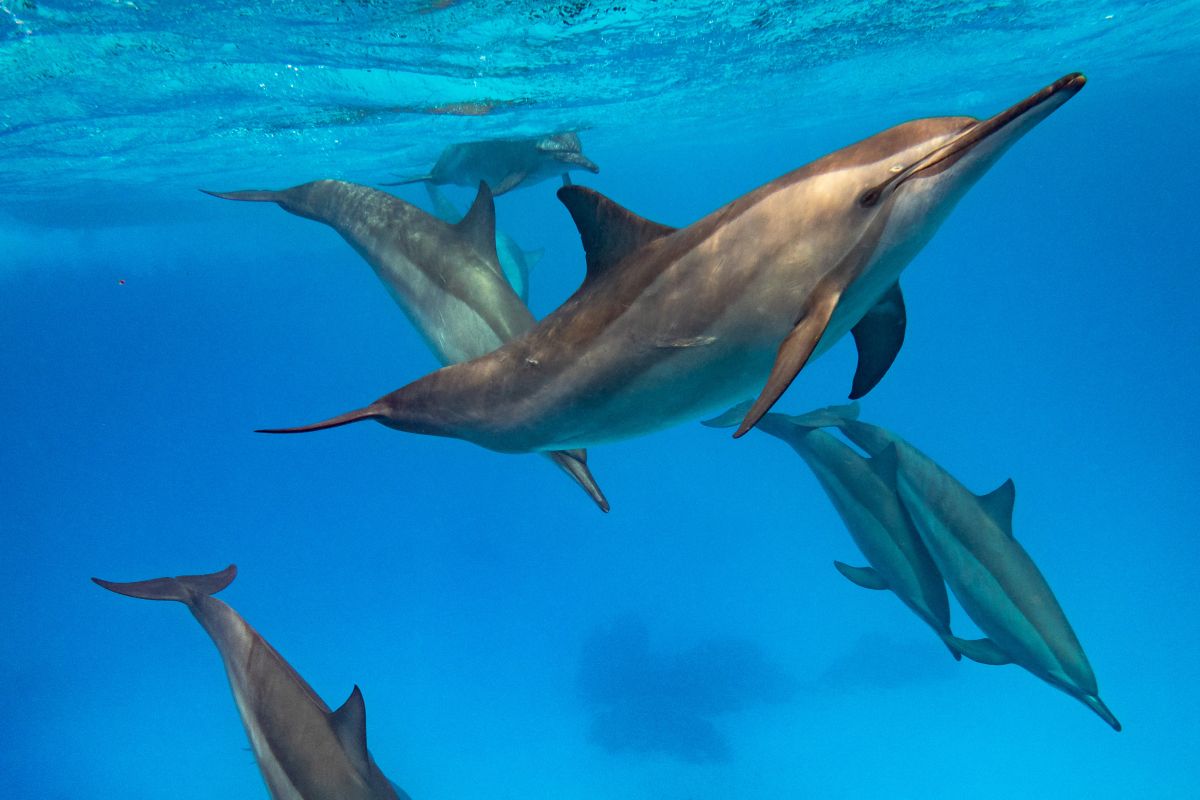
Siladen Resort & Spa
This small resort, accessed by boat from the mainland, occupies a secluded location on a stunning tropical island in the heart of Indonesia's Bunaken National Marine Park. Facilities include a spa, saltwater swimming pool, volleyball, billiards and a library.
The on-site PADI 5-star dive centre offers daily diving and snorkelling for all abilities in the Bunaken National Marine Park. The diving is operated from four traditional Indonesian style vessels, with a maximum of eight to 12 guests per boat.

Magic Island Resort
Nestled in the coastal town of Moalboal, Philippines, this resort beckons scuba diving enthusiasts with its prime location and exceptional diving experiences. The resort has just 10 well-appointed rooms, each with a private verandah.
This PADI 5-star resort caters for beginners to seasoned enthusiasts with at least 25 dive sites, most within five - 25 minutes’ boat ride. Enjoy wall dives or gentle drift dives and witness passing turtles, reef sharks, and even the occasional sardine bait ball.
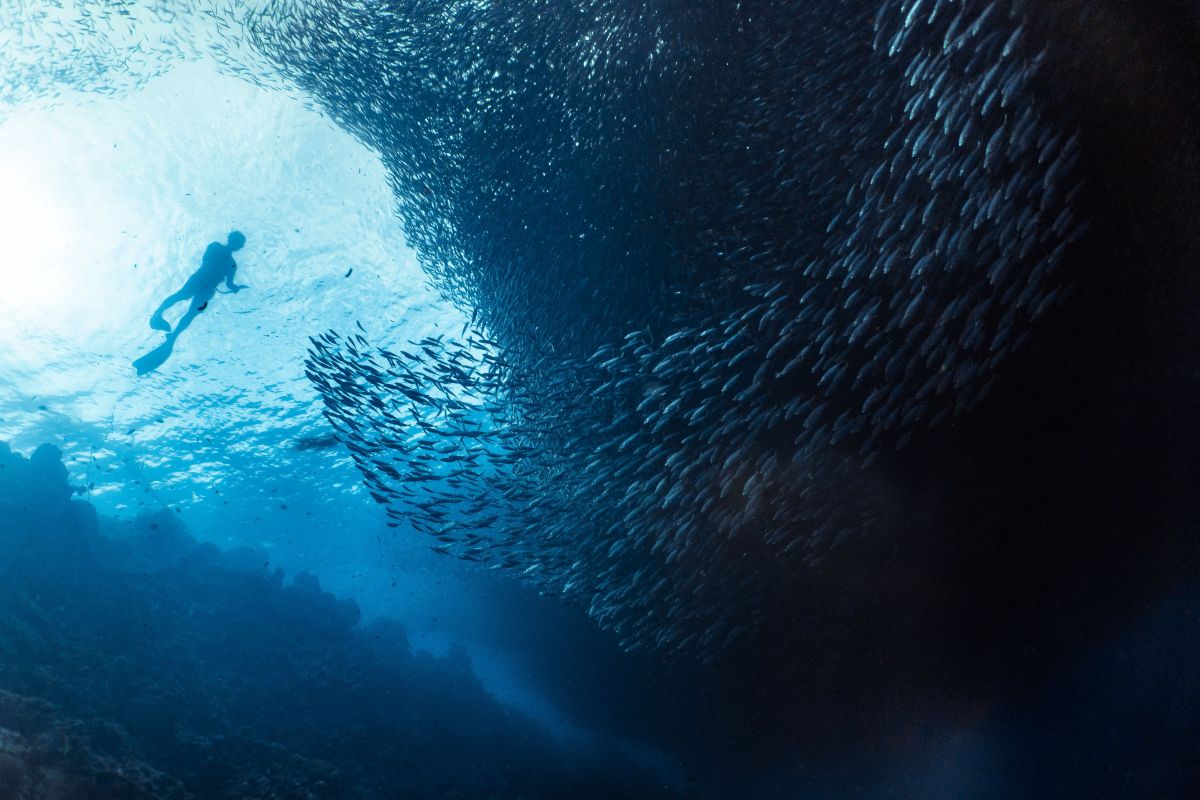
Doubletree by Hilton Malta
Ideal for a short break from the UK, this hotel sits on the water’s edge at Qawra in St. Paul’s Bay and features five swimming pools, many restaurants and bars, a spa and the Oracle Casino. Plus, there's a fitness centre, sauna and excellent facilities for children.
The Maltaqua Dive Centre offers diving to suit all levels and abilities, including guided and unguided diving. Malta is famous for its numerous wrecks and exceptionally clear water.
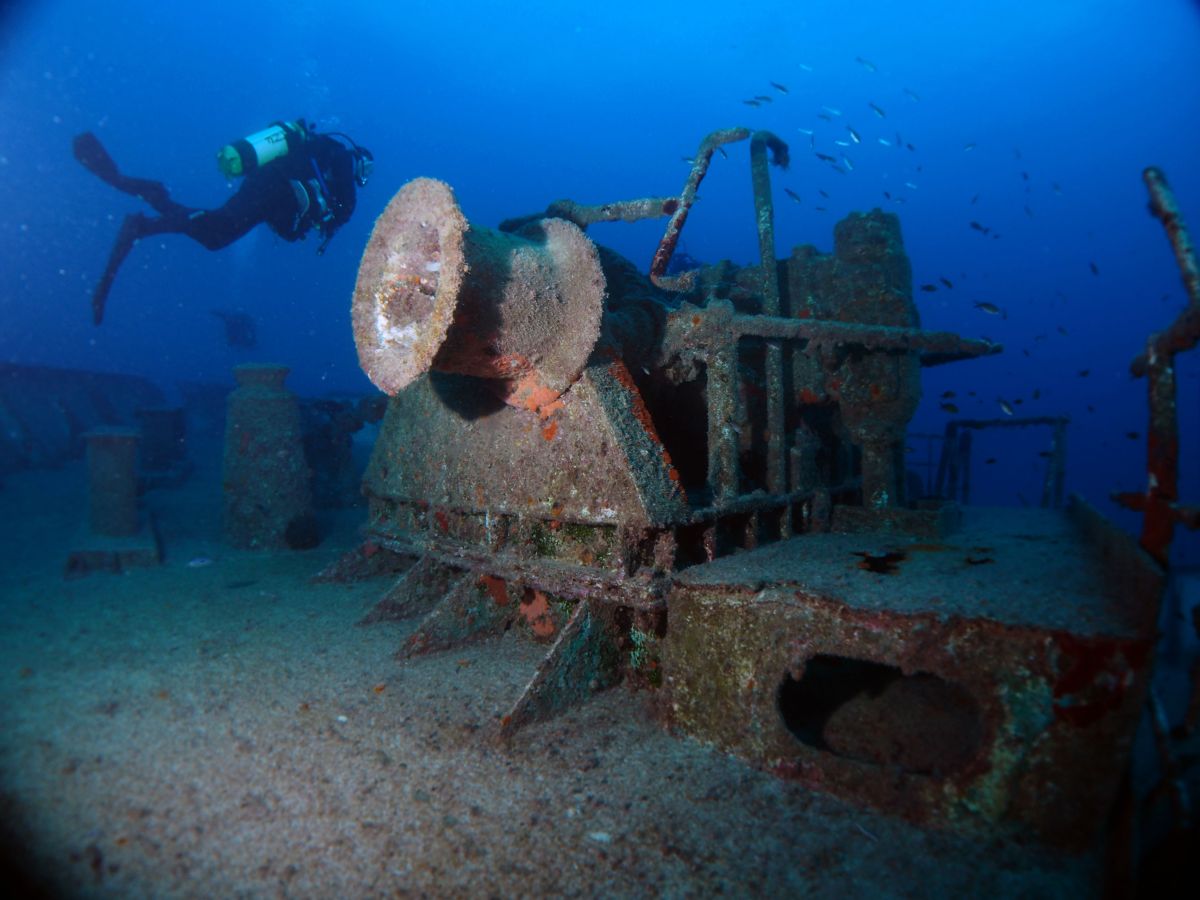
Golden Rock Dive & Nature Resort
Located on the Caribbean island of St Eustatius (also known as Statia), this resort offers a blend of value and luxury. Facilities include a large pool area, a beautiful botanical garden for relaxation and a well-equipped fitness and wellness centre.
Statia Divers, located at the resort, has an experienced team offering diving tailored to your experience. With over 30 dive sites to explore in the marine park, you can expect vibrant marine life including sharks, turtles, and rays.
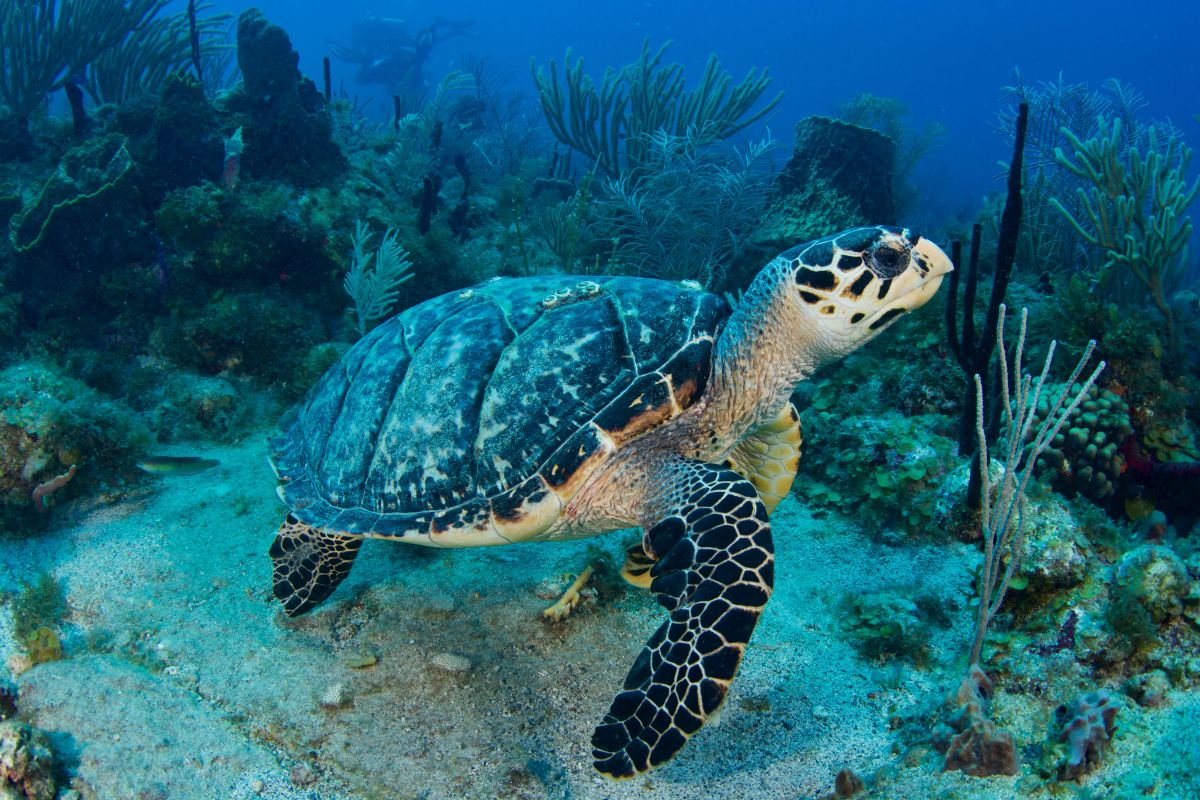
To find out more about any of our diving holidays, contact our expert team today. Alternatively, read more about our dive courses, including options to advance your training further.
Find a trip
- Resort
- Liveaboard
Diving Destinations within a 10-hour Flight of the UK

1 May 2024
Sardinia
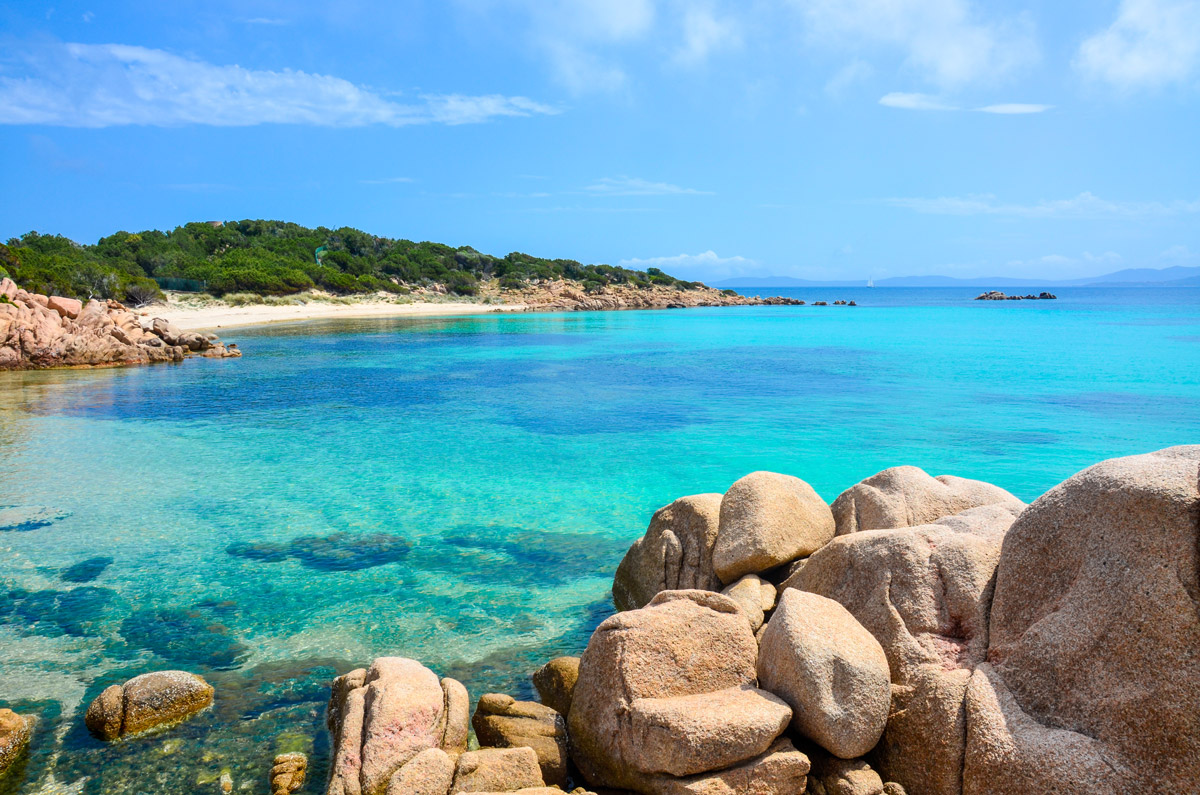
The shortest journey on our list; divers from the UK can reach the beautiful Italian island of Sardinia in just over 2 hours. The north-eastern shores offer exceptional scuba diving, but La Maddalena archipelago is the jewel in Sardinia’s crown with 60 islands and islets to discover. Explore stunning underwater scenery with rugged caves, overhangs, swim-throughs and abundant marine life. Sardinia is also a favourite with wreck divers who are attracted by the 102-metre cargo ship Angelika and the sunken remains of a World War II bomber plane.
Diving here is suitable for all abilities, with around 40 diverse dive sites to choose from. We recommend you stay on the Emerald Coast at the Hotel Piccada or La Vecchia Fonte.
Malta & Gozo
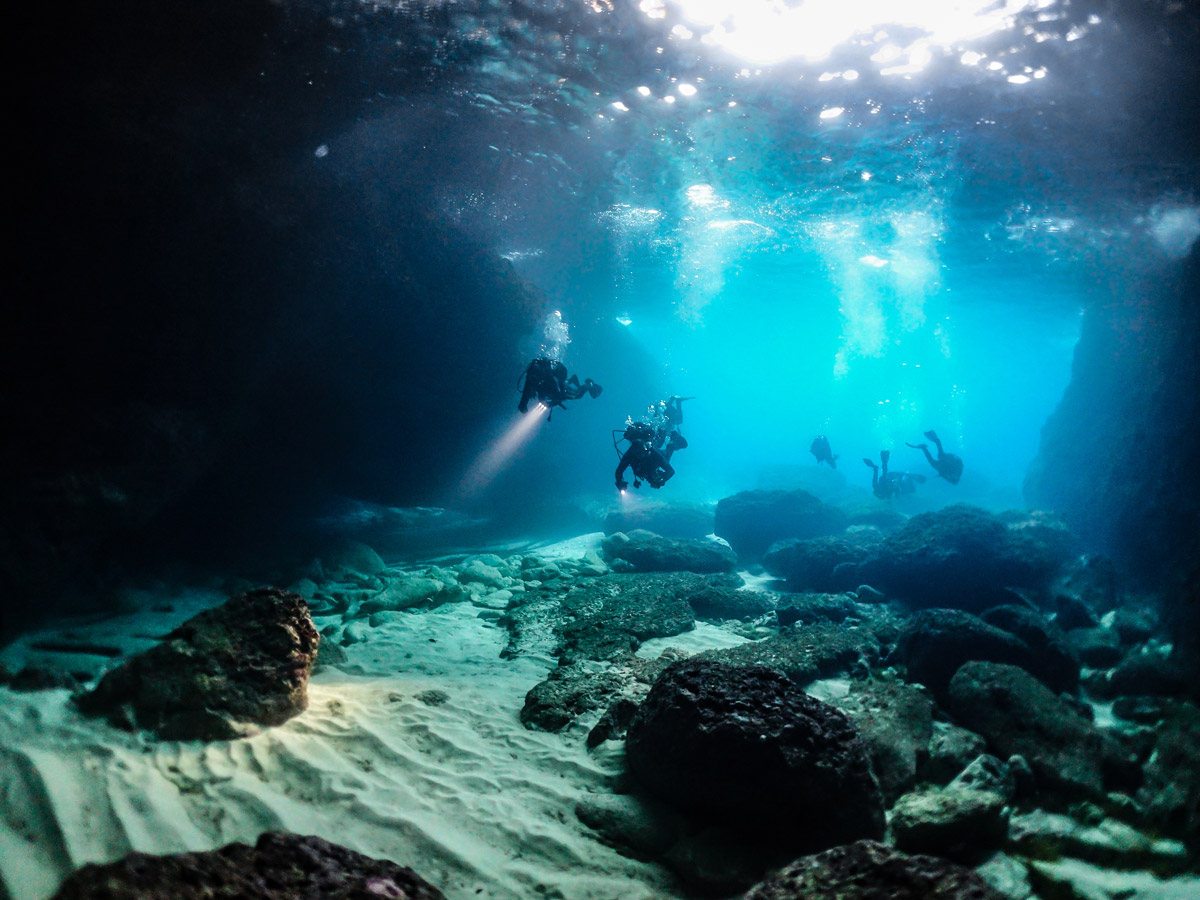
A 3-hour nonstop flight will transport you to the spectacular Maltese archipelago. Malta is one of the best diving destinations in Europe with a wide variety of diving experiences - from wrecks, reefs and caves to the famous Blue Hole.
Malta is the perfect place to develop your diving skills, as the dive sites range from beginner-friendly shallow shore dives to challenging technical wreck dives. You can also take a taxi and a ferry from Malta International Airport to Gozo, where intriguing caves, arches and tunnels are just waiting to be explored. We offer two types of accommodation in Malta & Gozo - choose between comfortable self-catering apartments and beautiful beachfront hotels.
Azores
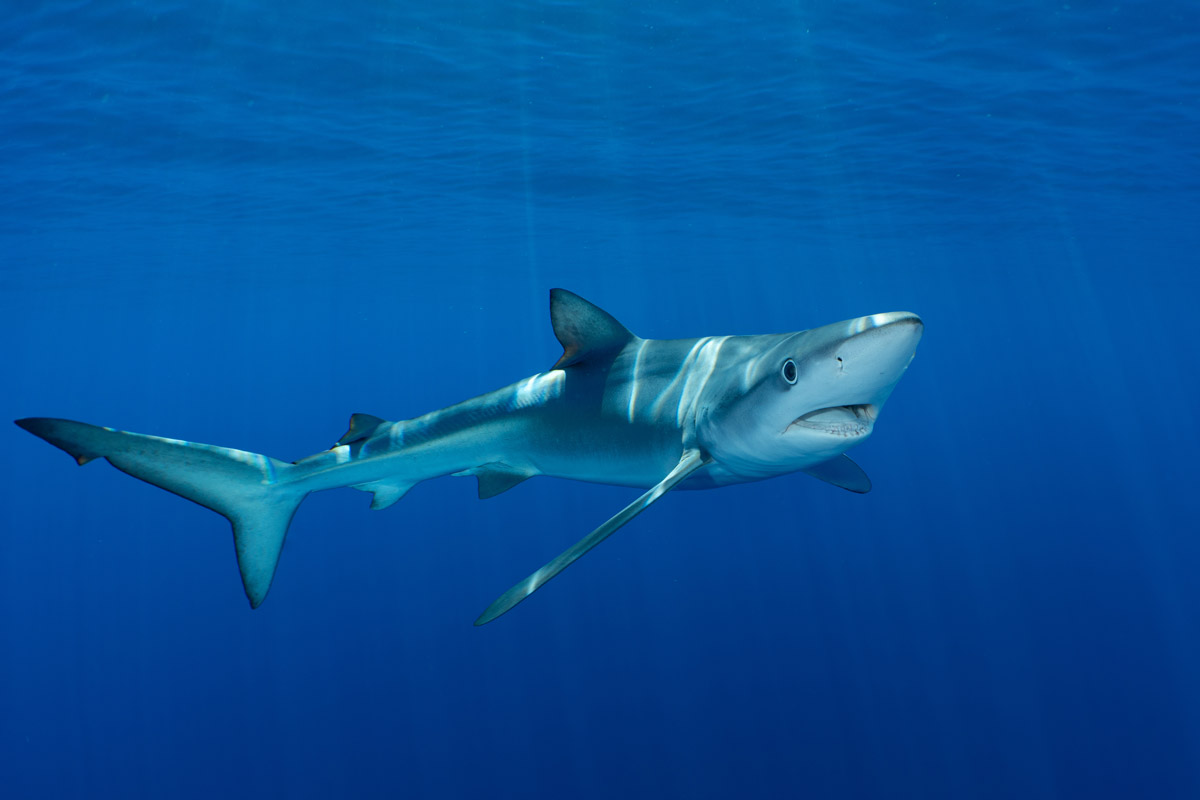
Divers are drawn to this remote archipelago in the North Atlantic Ocean by the dramatic volcanic topography and potential for encounters with the world’s largest marine species. You can fly from the UK to Ponta Delgada on São Miguel Island in approximately 4 hours. Flights often touch down in Lisbon, making it possible to explore the Portuguese capital as part of your trip.
Diving highlights in the Azores include the Dollabarat Banks, the steep slopes of Pico and the chance to explore canyons, tunnels and underwater arches for octopus, subtropical fish and other marine species. Even more thrilling, you can sometimes hear dolphins and whales while diving!
Lanzarote
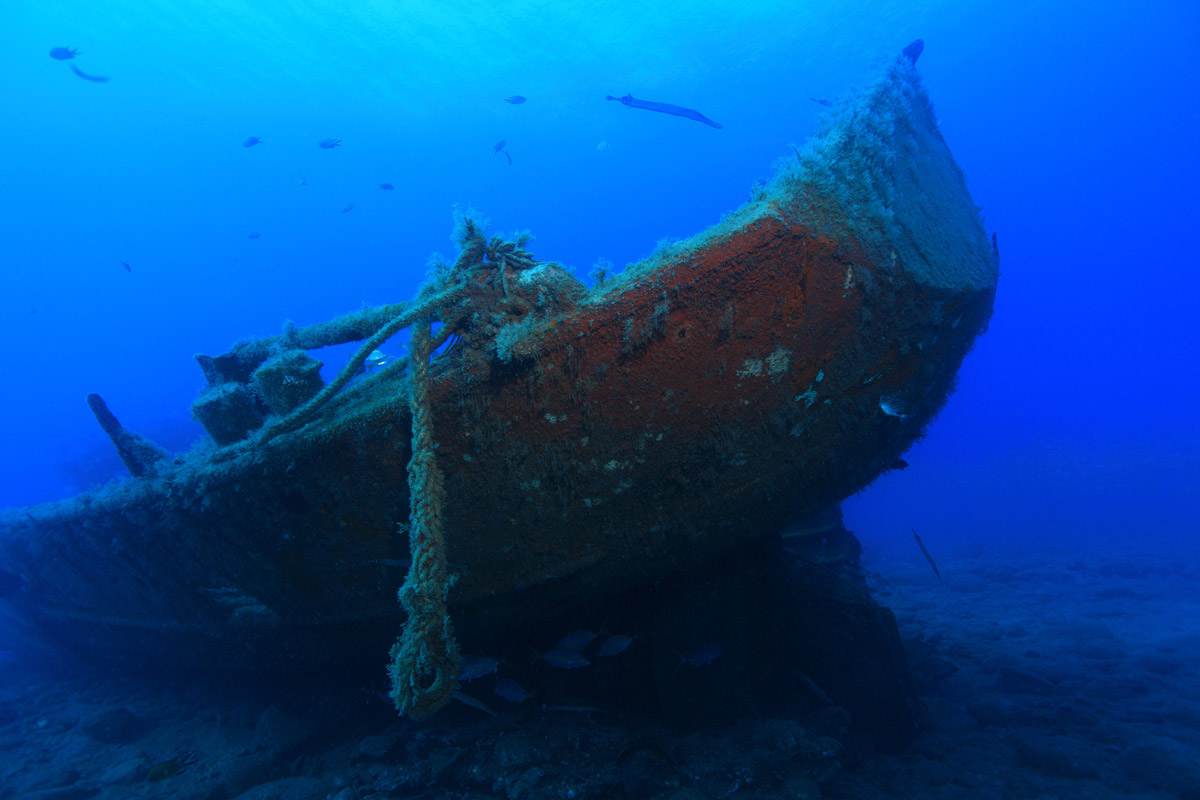
Take a 4-hour direct flight to Lanzarote in the Canary Islands. It’s an ideal destination for diving, beautiful beaches and winter sun! Lanzarote delivers delightful diving experiences thanks to year-round warm water temperatures, great visibility and breathtaking underwater landscapes. The volcanic formations include fascinating lava tubes and caves, while the sponges, anemones and corals are thriving with octopuses, rays, seahorses and various fish.
Stay in bright apartment complexes or bungalows just a stone’s throw from the popular Safari dive centre at Playa Chica.
Madeira
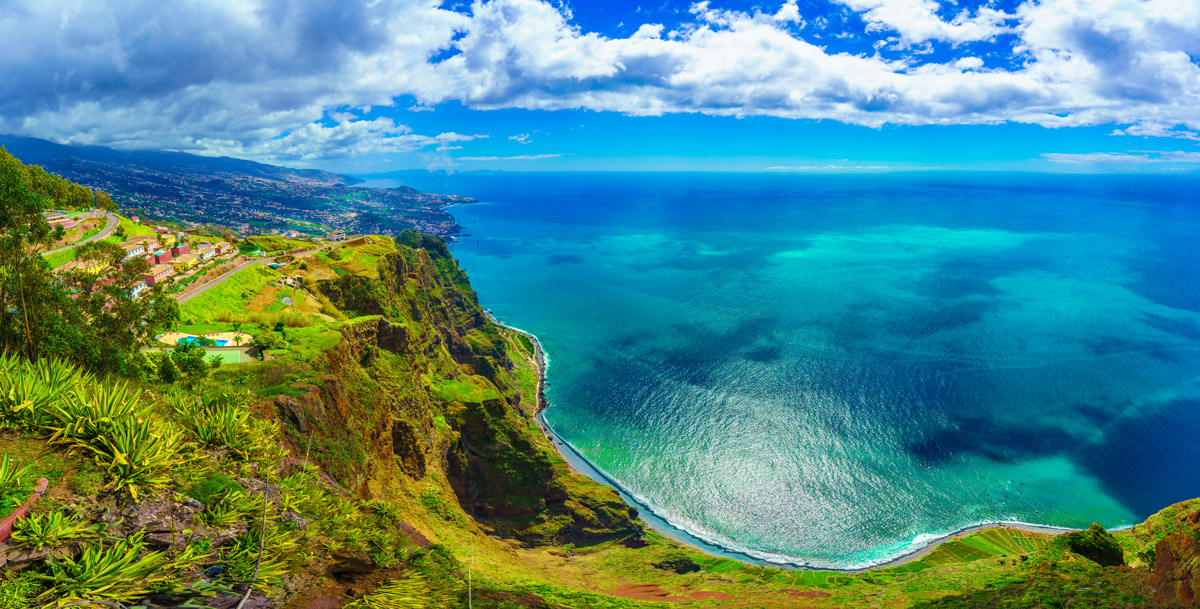
Enjoy lush landscapes and beautiful diving on the subtropical island of Madeira, off the north coast of Africa. Garajau Marine Park is very popular with divers who enjoy the park’s volcanic topography, impressive drop-offs and bountiful marine life. Barracuda, dolphin, moray eel, shrimp, octopus, damsel fish, wrasse and friendly dusky groupers are frequently seen here, but lucky divers may also encounter butterfly rays, manta rays or endangered monk seals.
A flight from the UK to Funchal (Madeira’s capital) is around 4 hours. Madeira offers something for everyone, with wrecks to explore, excellent snorkelling opportunities and plenty of topside adventures. We recommend the 4-star Dom Pedro Madeira, a tranquil beachfront hotel with magnificent sea views.
Egypt (Red Sea)
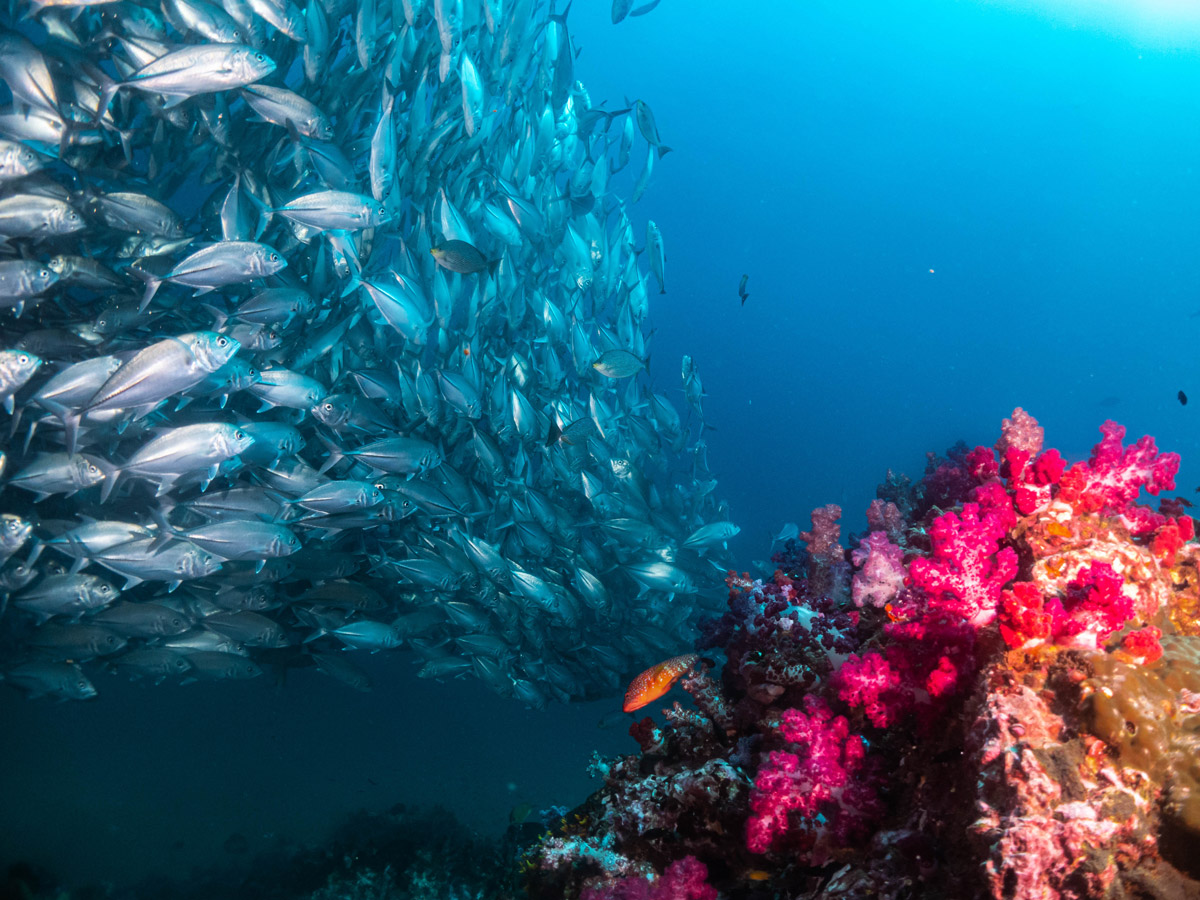
Regular direct flights from the UK to the popular diving hubs Hurghada and Sharm el-Sheikh take less than 5 hours, while seasonal direct flights to Marsa Alam (November to April) open up the lesser-visited delights of the Southern Red Sea. A wide range of budget-friendly and luxury resorts are available, or you could join a liveaboard to access the more remote sites.
The Red Sea has it all: beautiful coral reefs, historic wrecks, perfect diving conditions, breathtaking wall dives, big fish action and a dazzling variety of fish. Explore world-famous dive sites while experiencing crystal-clear visibility for up to 50 metres - ideal for underwater photography. Ras Mohamed, the Brothers, Dolphin House and Elphinstone Reef are must-sees that regularly top best dive site lists.
Oman
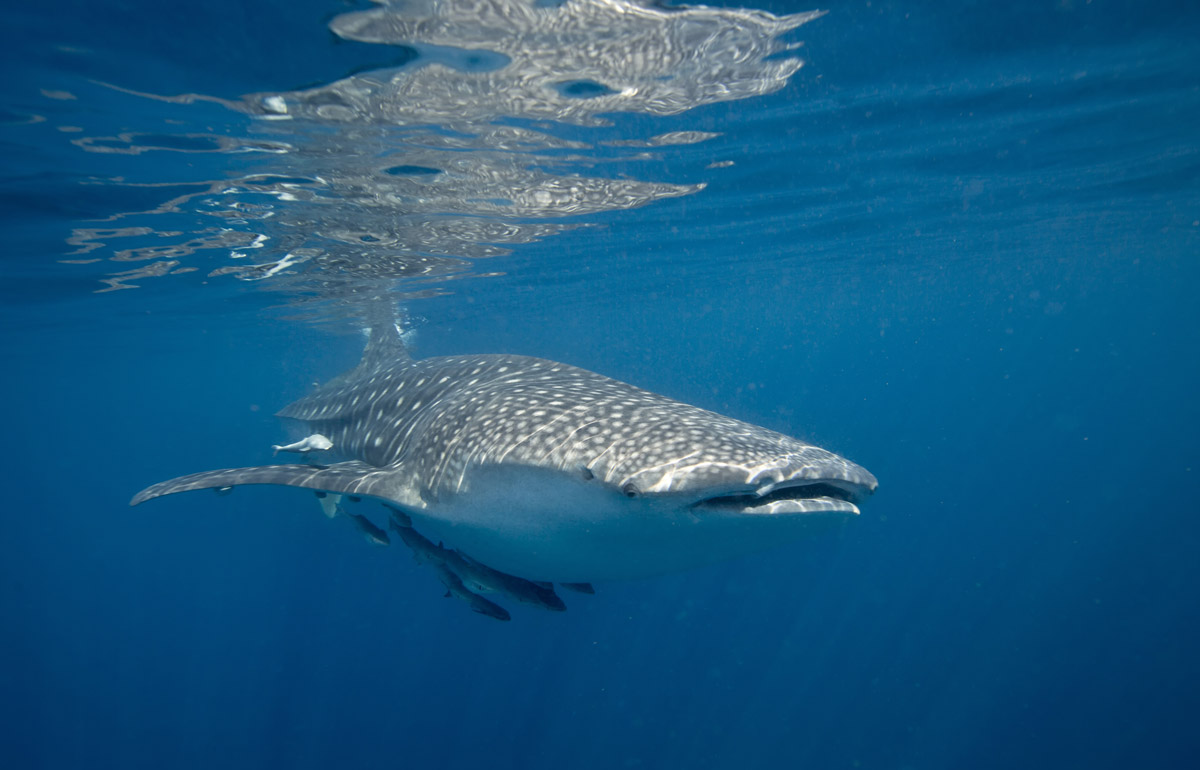
Direct flights from the UK to Oman’s capital Muscat take approximately 7 hours. From there, you can access an Arabian wonderland featuring dramatic underwater caves, rocky outcrops and drop-offs, the fascinating Al Munassir wreck and the famed Daymaniyat Islands (a 45-minute boat ride away).
The Daymaniyat Islands are renowned for having the best diving opportunities in the Middle East, with clear turquoise waters, virtually untouched coral reefs and exciting marine life that includes tropical fish, eagle rays, sea turtles, reef sharks, various cetaceans and migratory whale sharks (July to September). Choose from luxurious hotels or embark on a liveaboard adventure on the spacious Oman Explorer.
Just over 10 hours …
The Caribbean
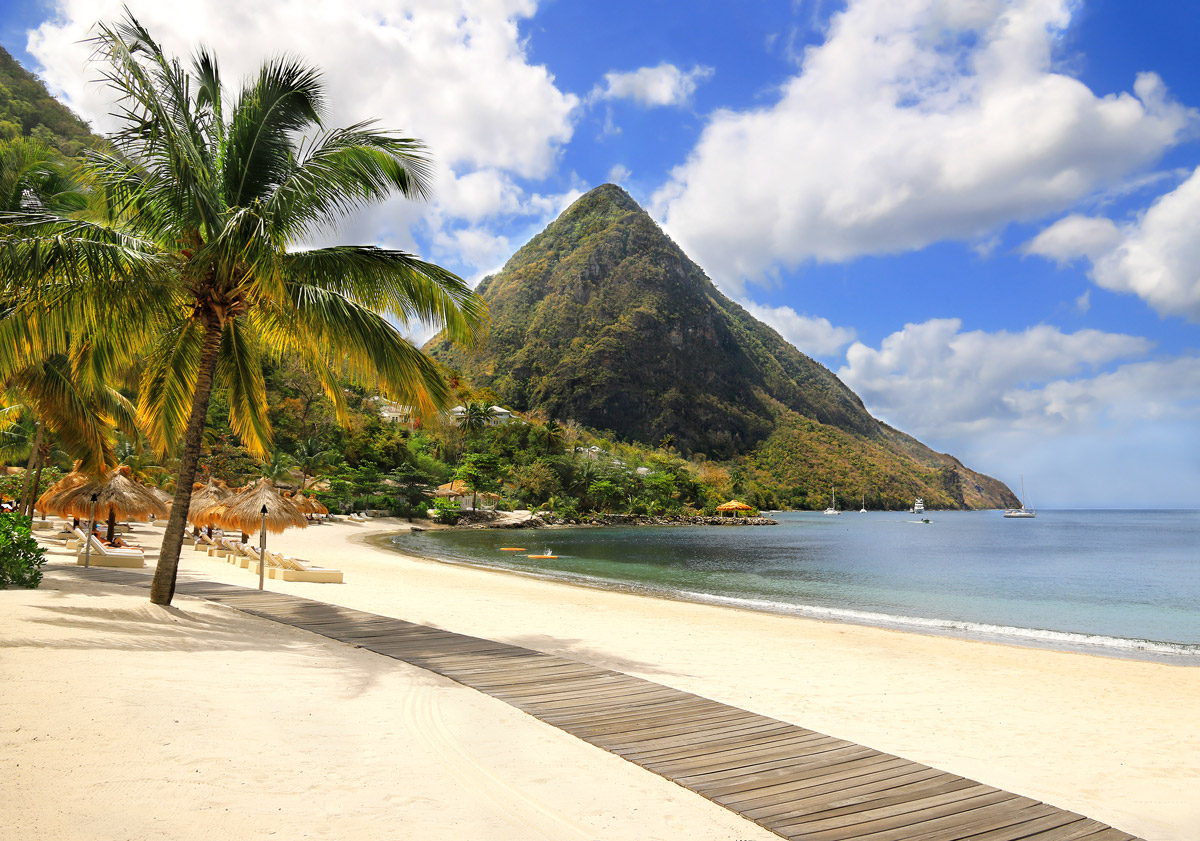
The Caribbean is perfect for a laid-back holiday with spectacular diving. The flight times are a little longer (around 9 to 11 hours) but it's well worth it. St Kitts, Saba or Statia are excellent choices with wrecks, thriving marine parks and deep sea mounts to explore. As flights often touchdown in Antigua or St Lucia, you could also opt to combine Caribbean islands for a longer holiday.
Mexico
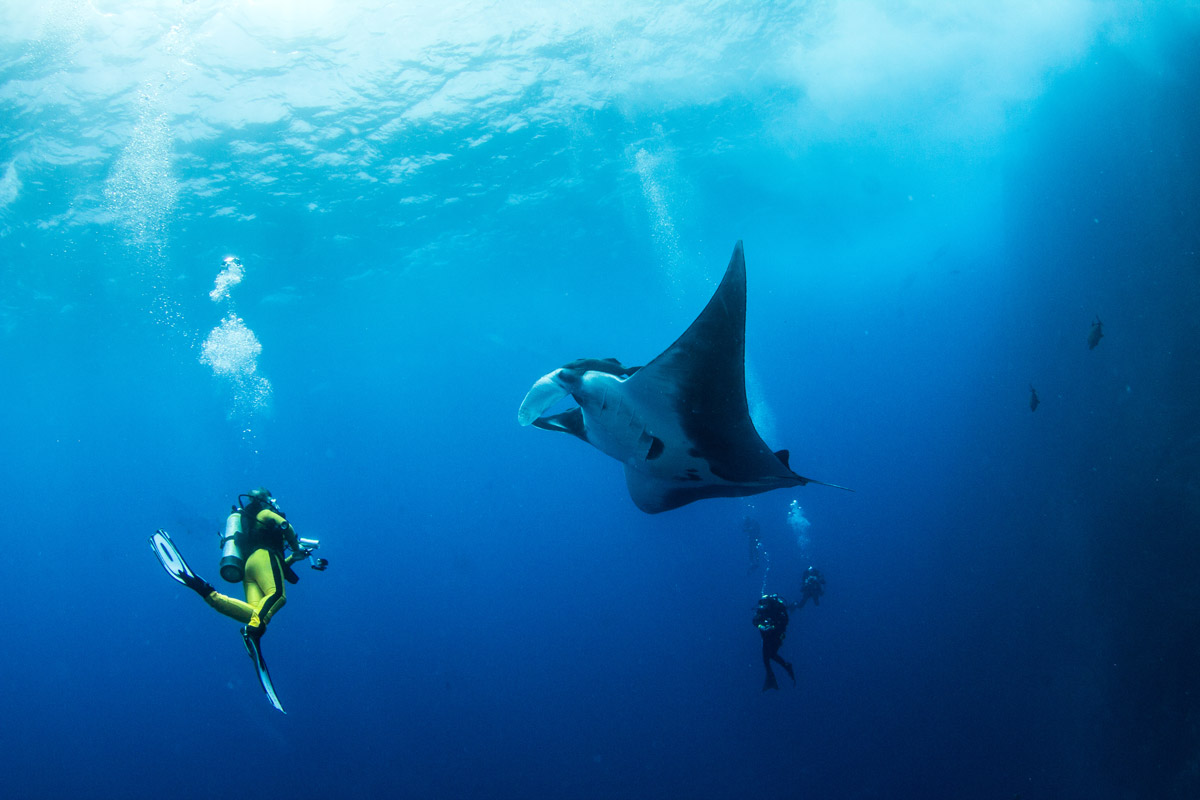
Take a 10-hour direct flight to Cancún on Mexico’s Caribbean coast. Mexico offers unique diving experiences, particularly the chance to explore freshwater underwater limestone caverns, known as Cenotes, and the Planacar Reef protected marine park. Experience exciting drift dives and turtle encounters, or explore a range of awe-inspiring dive sites around Cozumel, the Socorro Islands and Riviera Maya. A Mexico diving holiday also pairs well with stays in the Caribbean. View a range of accommodation and liveaboard options.
These destinations are ideal for a convenient diving break. Speak to our dive team for more information, or read our blog on the top 10 diving destinations with direct flights from the UK.
Find a trip
- Resort
- Liveaboard
Top Diving Destinations for 2024
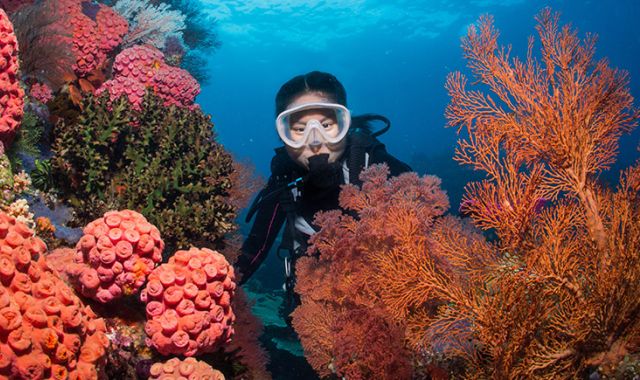
11 Dec 2023
January: Experience Maldives Magic
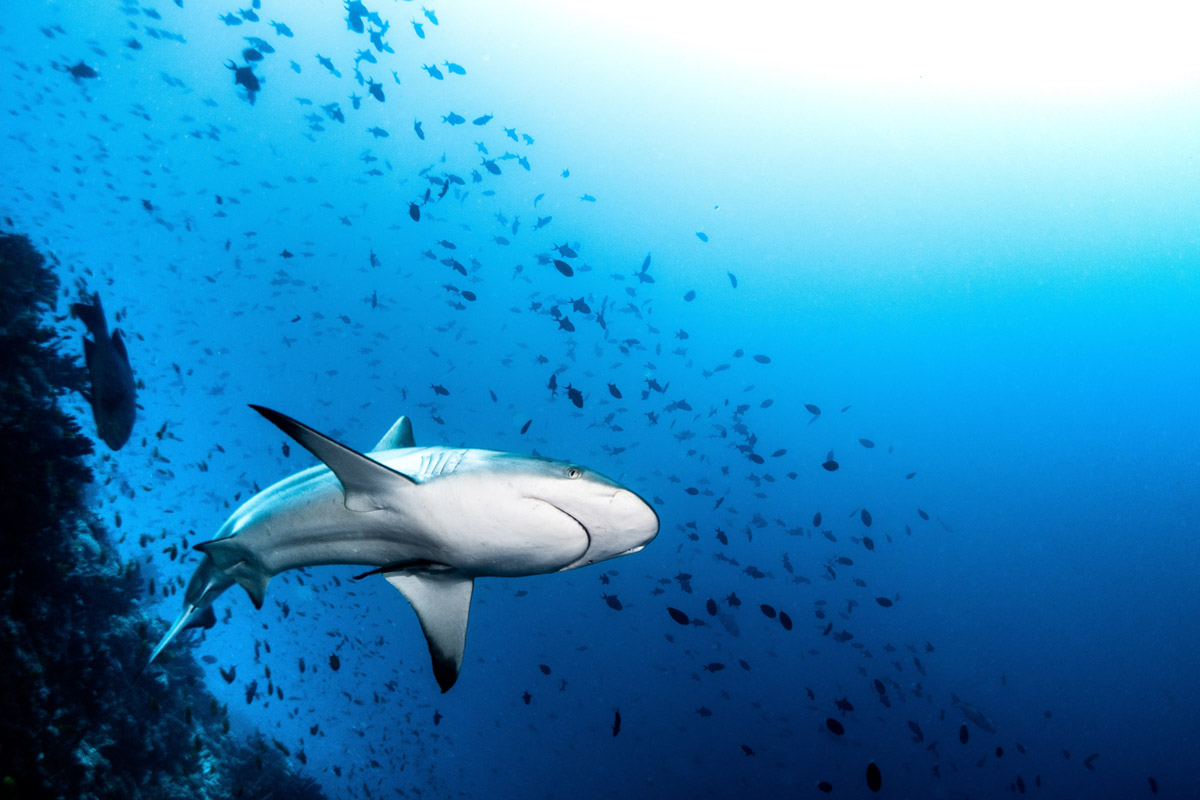
The Maldives is excellent all year round, but January sees the start of the best diving months. Liveaboards are regularly heading out towards sensational sites in the Southern atolls, including Manta Point, Cocoa Thila, The Victory Wreck and Banana Reef. On these action-packed itineraries, you have the chance to see impressive pelagic fauna, such as grey and whitetip reef sharks, turtles, eagle and manta rays, and whale sharks.
You also get the best diving conditions in the Central Maldives, with water temperatures in the high 20s centigrade and clear views of the fantastic marine life, rock pinnacles, caves, canyons and thriving coral reefs.
The flat sea in January makes whale sharks easier to spot from a boat when they're swimming near the surface, maximising your opportunities for diving or snorkelling encounters. In the South Ari Atoll, Vilamendhoo Island Resort & Spa and Boutique Beach are excellent resorts offering amazing dive safaris and boat diving trips to the famous thilas.
February: Bucket-list Diving at Raja Ampat
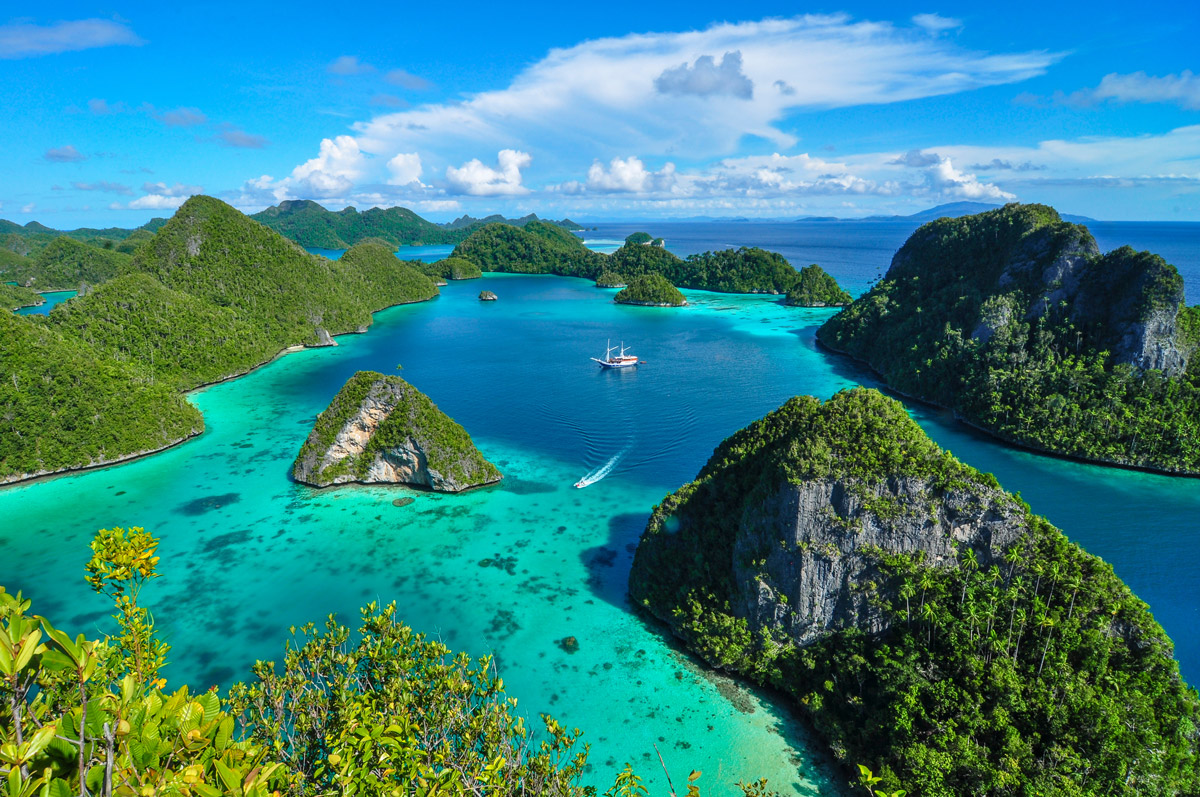
If you’re keen to visit the world-famous Raja Ampat, then February is an excellent time to go. The archipelago’s 200 dive sites are best explored by liveaboard and February is right in the middle of the peak liveaboard season (December to April). Raja Ampat’s stunning seascapes are teeming with marine life, from healthy coral reefs to colourful critters and large pelagics.
In February the weather is usually favourable, with low rainfall and warm sea and air temperatures. This makes liveaboard journeys more comfortable, as seas are calmer, and good underwater visibility lets you enjoy the spectacular marine biodiversity, colourful corals and sea fans, and volcanic underwater landscapes to the full.
March: Wrecks at Chuuk Lagoon in the Central Pacific
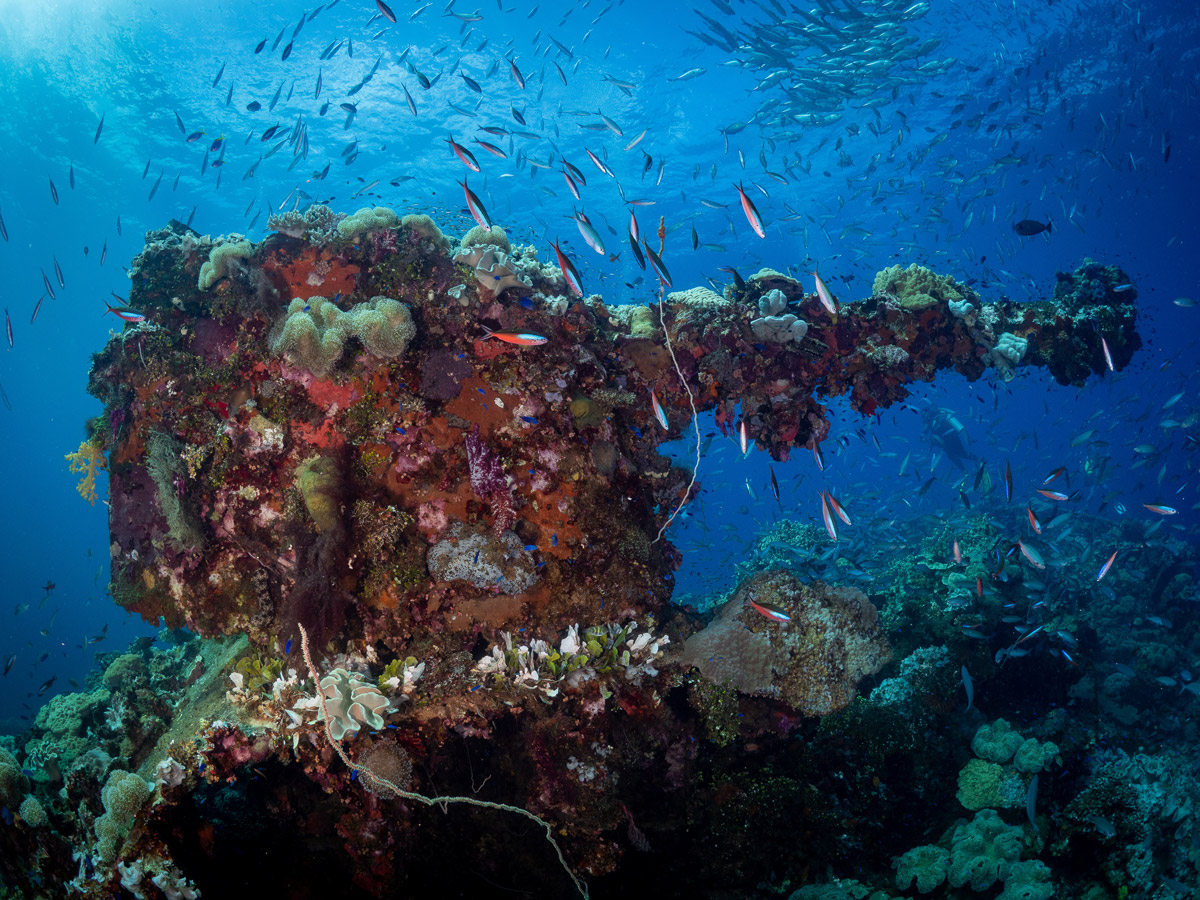
Known as ‘Truk Lagoon’ in the diving community, this is arguably the best wreck diving destination in the world with over 60 sunken WWII Japanese ships to discover. Although you can dive here any month of the year, the best diving conditions occur in the dry season (November to April), when on a rainless day visibility in the lagoon can reach up to 40 metres.
March is a good choice because the favourable conditions tend to provide the most rewarding and enjoyable wreck diving experience.
April: Big Fish in the Southern Red Sea
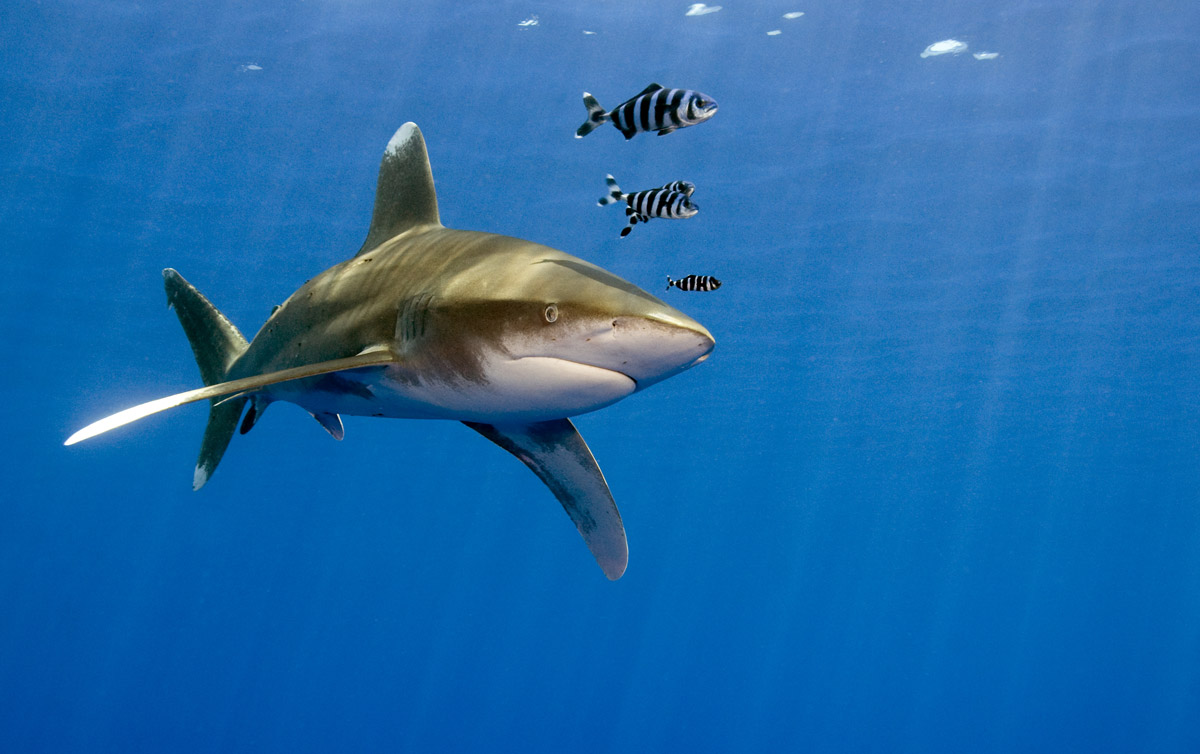
The Southern Red Sea is a paradise for divers. Not only are the dive sites less crowded than in the north, but a thrilling range of ‘big fish’ species await you. With fewer divers here, the diving experience remains pristine. If you travel in spring you should strike a good balance between sea and land conditions, with relatively calm seas, plenty of sunshine and pleasantly hot air temperatures (averaging 31°C).
Marsa Alam, the well-established gateway to the Southern Red Sea, is now easily accessible again via direct flights from the UK. If you prefer resort-based diving, we recommend Wadi Sabarah, in Port Ghalib, which is ideally located for boat trips to popular dive sites, like Dolphin House, and has an on-site Emperor Divers dive centre. In the evenings, you can enjoy captivating marine biology presentations.
Liveaboards give you access to the most remote and sought-after dive sites, such as Elba Reef, St. John's Reef, the Brothers, Daedalus and Fury Shoals. Depending on your chosen itinerary, you may encounter hammerhead or oceanic whitetip sharks, bumphead parrot fish, tuna, turtles, dolphins, or various rays. You can also explore sunken ships, marine parks and coral-encrusted walls.
May: Shore Diving in Bonaire
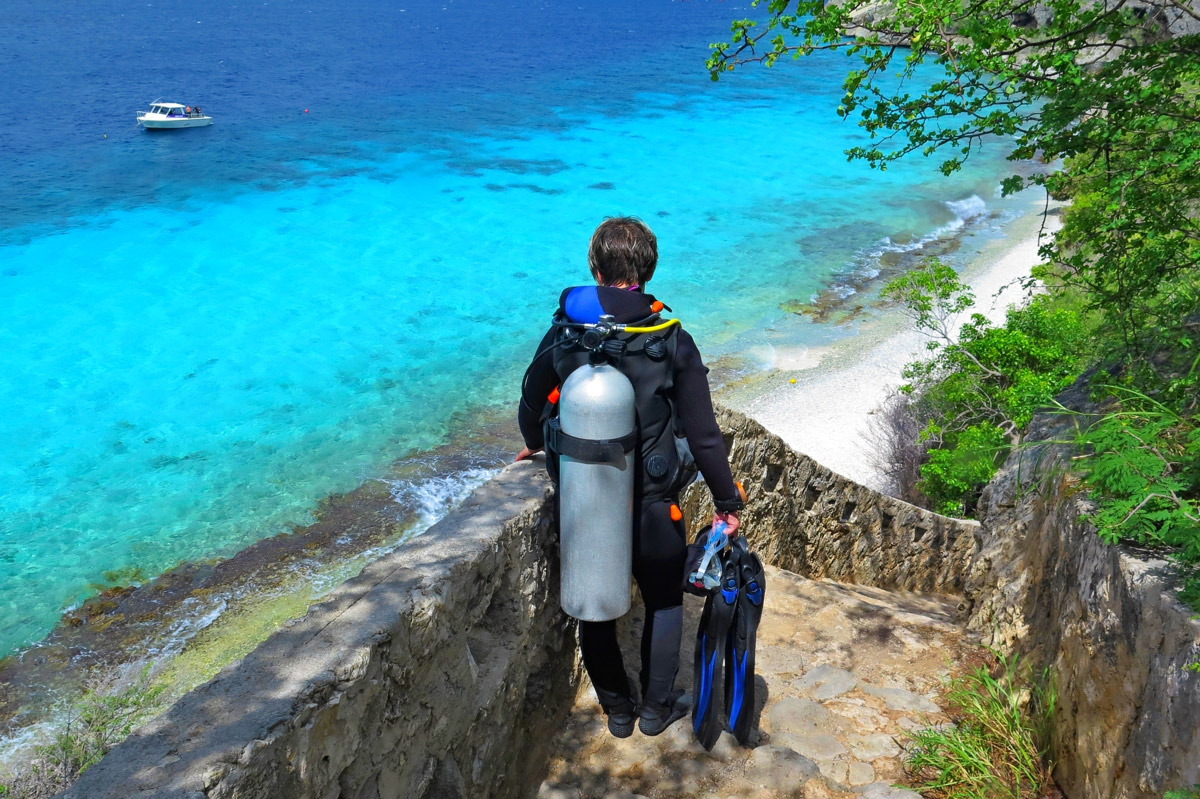
Bonaire, in the Caribbean, is yet another destination which offers exceptional diving all year round. Easy shore diving is the real draw here, but this destination also features pristine reefs, a protected marine park, fascinating shipwrecks, and abundant marine life - it’s no wonder divers love this place. Although there’s really no bad time to dive in Bonaire, we’ve recommended May because it’s such great value for money. In May you can enjoy amazing diving and consistent sunshine but with fewer crowds and at cheaper rates.
The multi-award-winning Buddy Dive Resort is one of Regaldive’s most popular hotels, with welcoming staff and oceanfront apartments and studios. Check out their special offers to save even more money!
June: Explore the Indonesian Archipelago
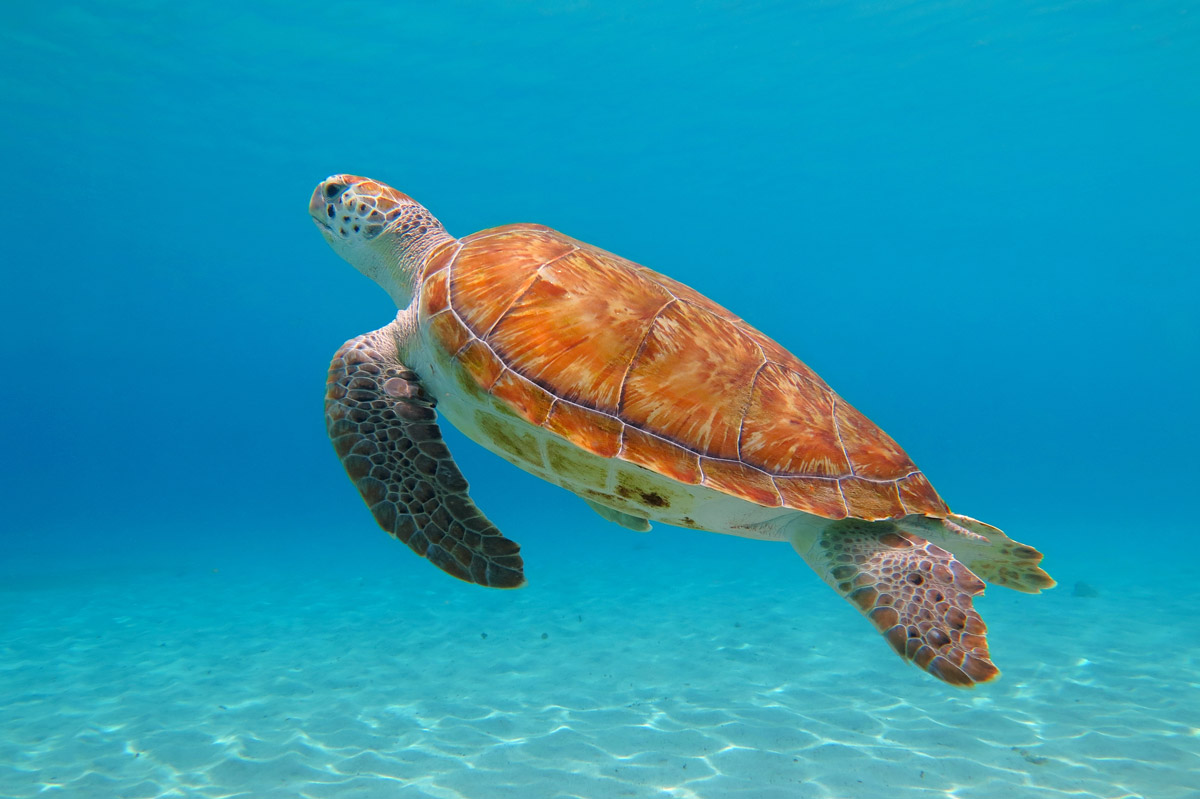
This is a fantastic time to visit many of Indonesia’s diving hotspots, such as Kalimantan, Raja Ampat, and Alor, but Bunaken is a particular favourite of ours. In June, you can enjoy ideal weather conditions and excellent visibility of the volcanic topography and healthy reefs fringing Bunaken Island, not to mention turtles galore!
The Bunaken National Marine Park is loved by underwater photographers and is an exceptional location for wall and drift diving, with steep coral walls and sightings ranging from barracuda, jacks, Napoleon wrasse, reef sharks and sea snakes.
For a really fun trip, why not combine Bunaken with the Lembeh Strait or Banka? The Lembeh Strait is one of the world’s best muck diving destinations, while Bangka has stunning pinnacles, healthy coral reefs, exciting drift dives and fascinating marine life.
Favourite resorts amongst Regaldivers are Siladen Resort & Spa and Murex Manado, both offering daily dives to the Bunaken marine park, while Dive into Lembeh and White Sands Beach Resort are popular options in Lembeh.
July: Ocean Giants in the Azores
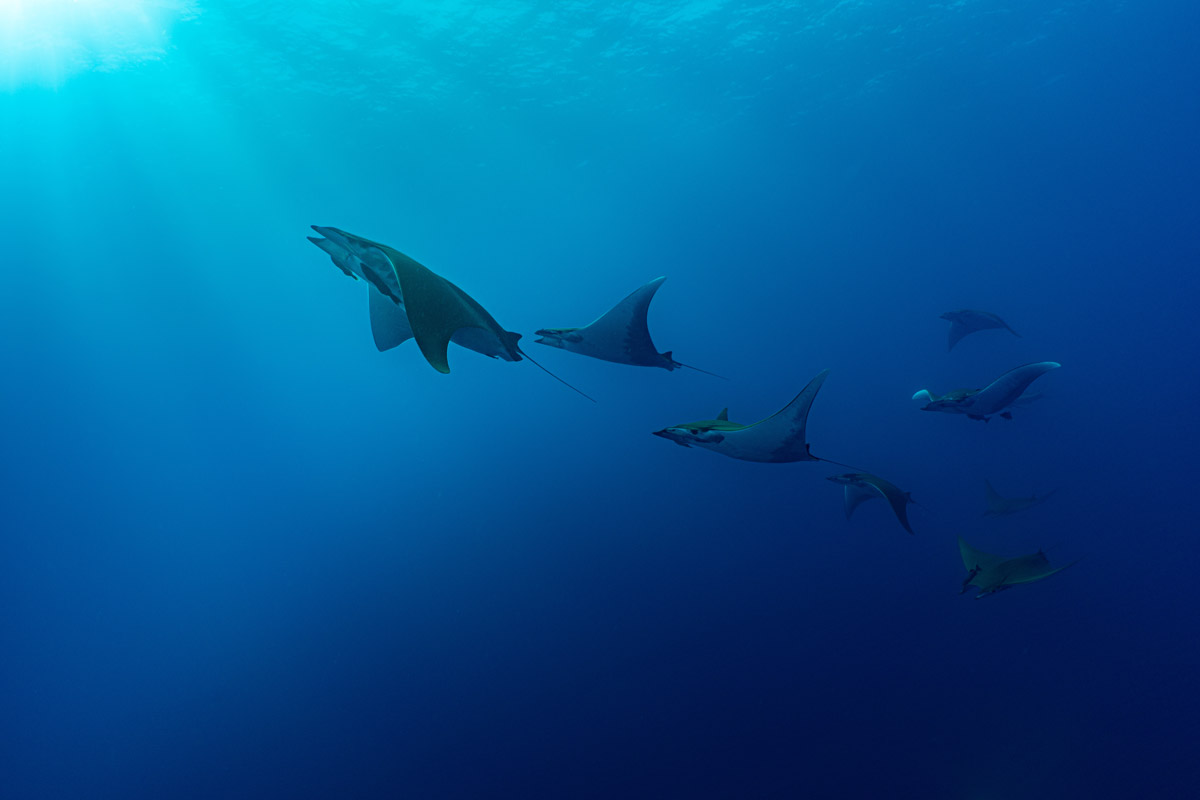
There's only a short window in the year when you can enjoy the fabulous diving opportunities in the Azores. Due to the archipelago’s position in the mid-Atlantic, the core diving season runs from June to mid-September, when sea conditions allow. July to October is also the best time for marine encounters with seasonal visitors.
The diving experience offers plenty, especially for divers with a little more experience - from encountering playful dolphins to diving with large whale sharks. If you’re lucky, you may also hear the calls of humpback and sperm whales while diving. One of the best dive sites is Princess Alice Bank, an underwater sea mount which is famous for encounters with mobula rays, makos and blue sharks during the summer months. For experienced divers, the Formigas islets are highly recommended. The marine reserve offers amazing visibility, big fish action and fascinating underwater caves. This is often combined with the stunning site of Dollabarat, a beautiful submerged mountain which attracts rays and sharks.
August: Galapagos Whale Shark Encounters
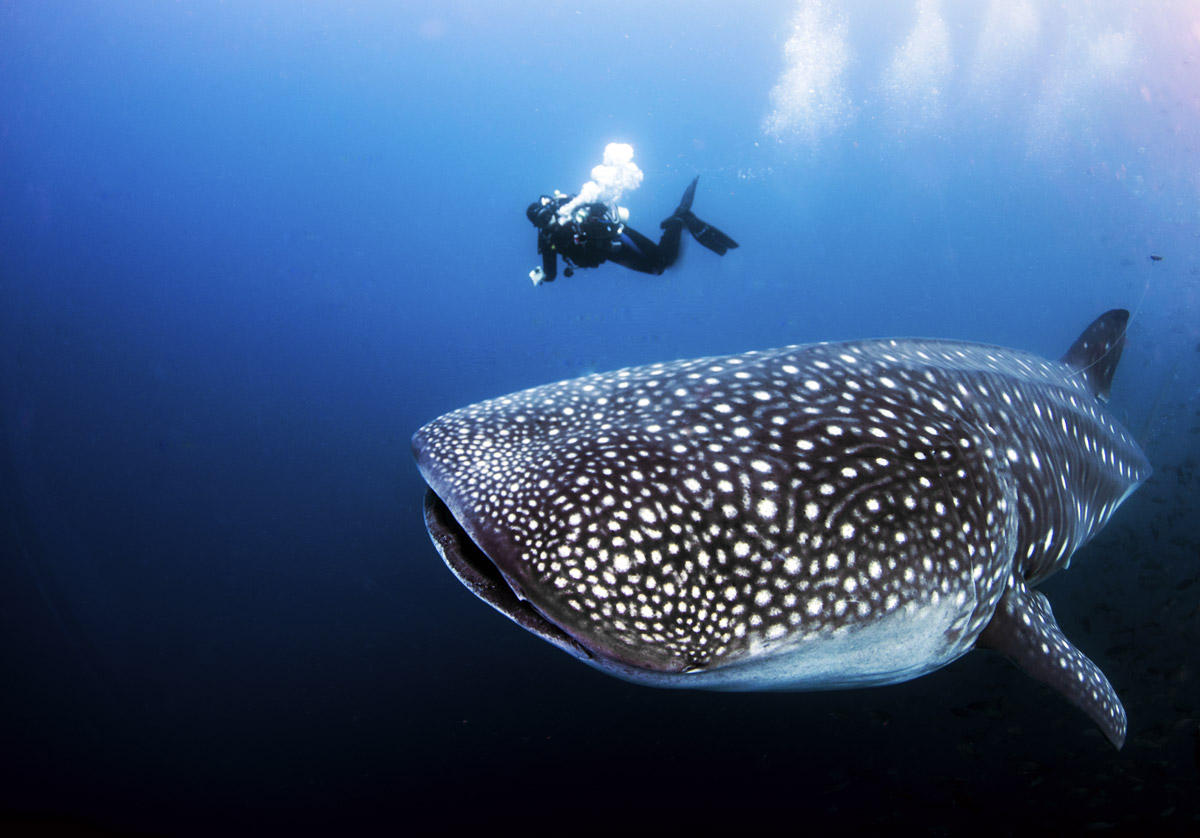
A Galapagos liveaboard adventure is perfect for summer or autumn. One of the best reasons to visit in August is the presence of numerous, huge, and often pregnant whale sharks at Wolf and Darwin. Between July and October, nutrient-rich currents attract whale sharks and other plankton feeders, such as migratory melon-headed and humpback whales. Your thrilling encounters could also include rays, dolphins, mola mola, hammerhead sharks and Galapagos specialities such as fur seals and penguins!
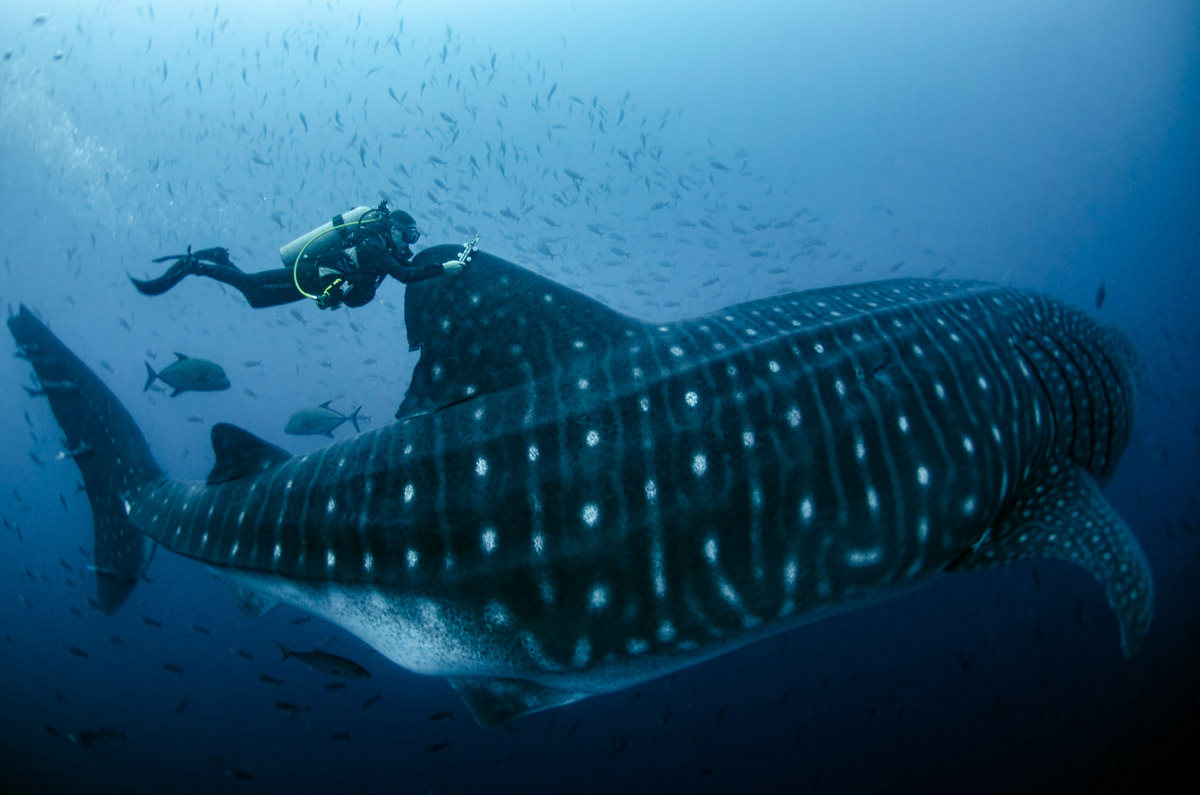
Image by Jenny Waack
If September works better for you, you can join our exclusive, expert-led Galapagos Whale Shark Expedition with renowned whale shark researcher Sofía Green Iturralde (departs 23 Sep 2024).
September: Maldives Manta Ray Extravaganza
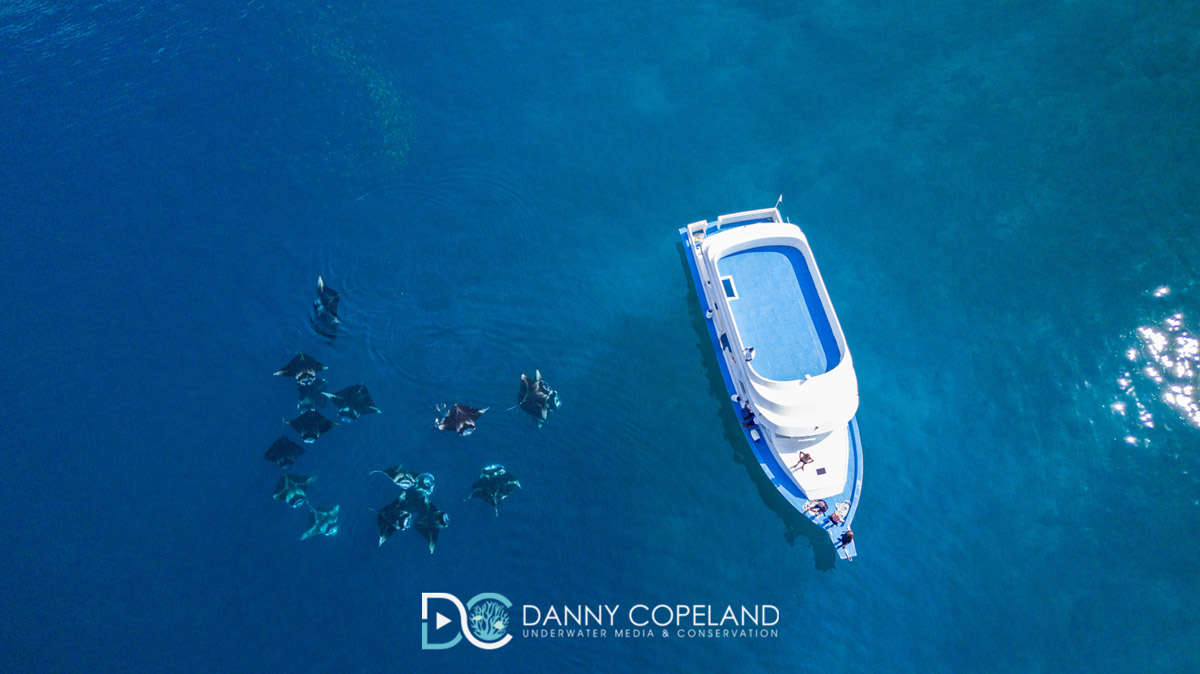
Hanifaru Bay’s annual manta ray aggregation peaks around the September full moon. It's the largest known gathering of reef manta rays on the planet and this phenomenon occurs when plankton-rich waters from the Indian Ocean are drawn into the reef (a UNESCO Biosphere Reserve). The ethereal manta rays arrive in vast numbers, gliding gracefully through the water as a plankton feeding frenzy ensues.
Marine media specialist and conservationist, Danny Copeland, leads an exclusive group tour in the northern atolls of the Maldives, where, along with the manta rays, you could encounter whale sharks, reef sharks, turtles, and Napolean wrasse.
11 Sep 2024: Maldives Manta Ray Extravaganza
October: Wrecks and Reefs in the North Red Sea
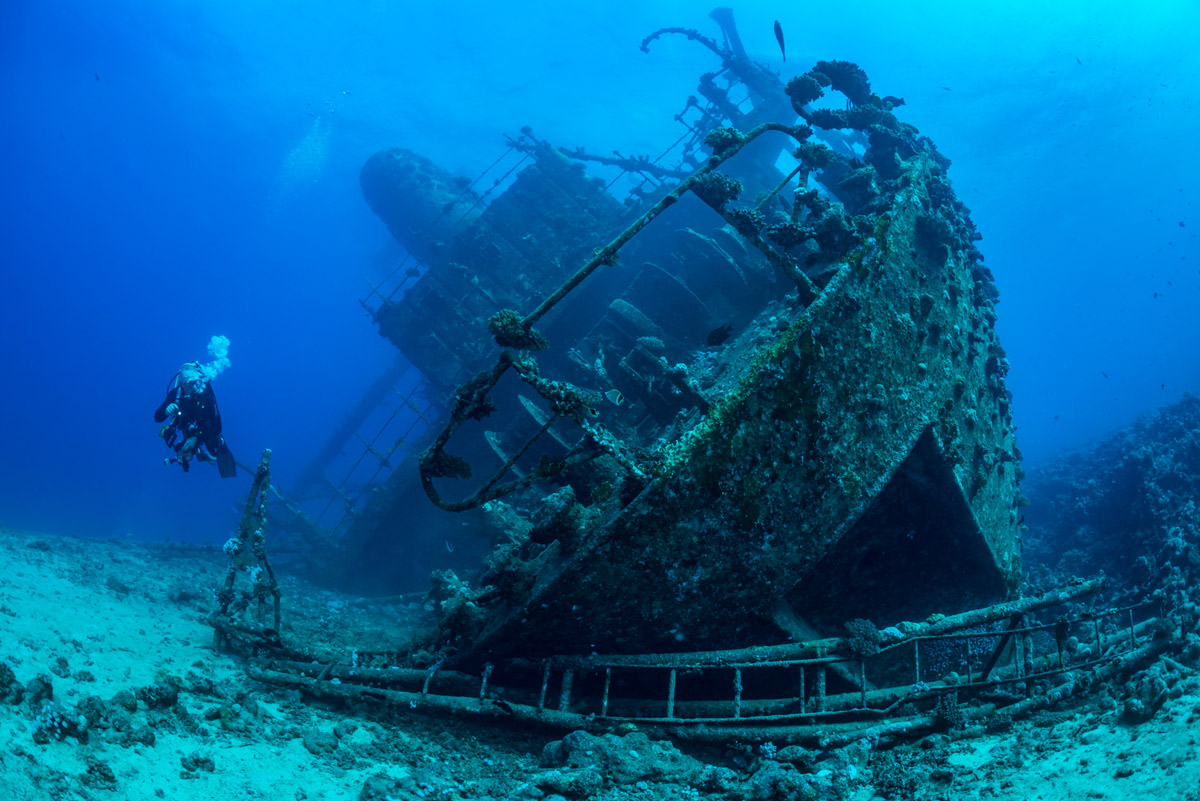
The North Red Sea is known for spectacular reefs and famous wrecks, especially near popular Sharm El-Sheikh. You can dive here any time, but for the best all-around experience, choose spring (March to May) or autumn (September to November). You’ll have plenty of sunshine and good diving conditions but avoid the peak temperatures of Egyptian summer.
Shark and Yolanda Reef, in the Ras Mohammed National Park, is one of the top 10 dives in the world. Beginning at Anemone City, currents take you on an exciting drift dive to Shark Reef’s sheer drop-off, from where you’re immersed in a ‘fish soup’ as you pass as you pass Yolanda Reef’s impressive pinnacles, before discovering a sunken Greek merchant ship. SS Thistlegorm - a 128-metre British cargo ship which was sunk in a German air attack during World War Two - is another world-leading dive site, found in the Strait of Gubal.
November: Spectacular Sightings in Socorro
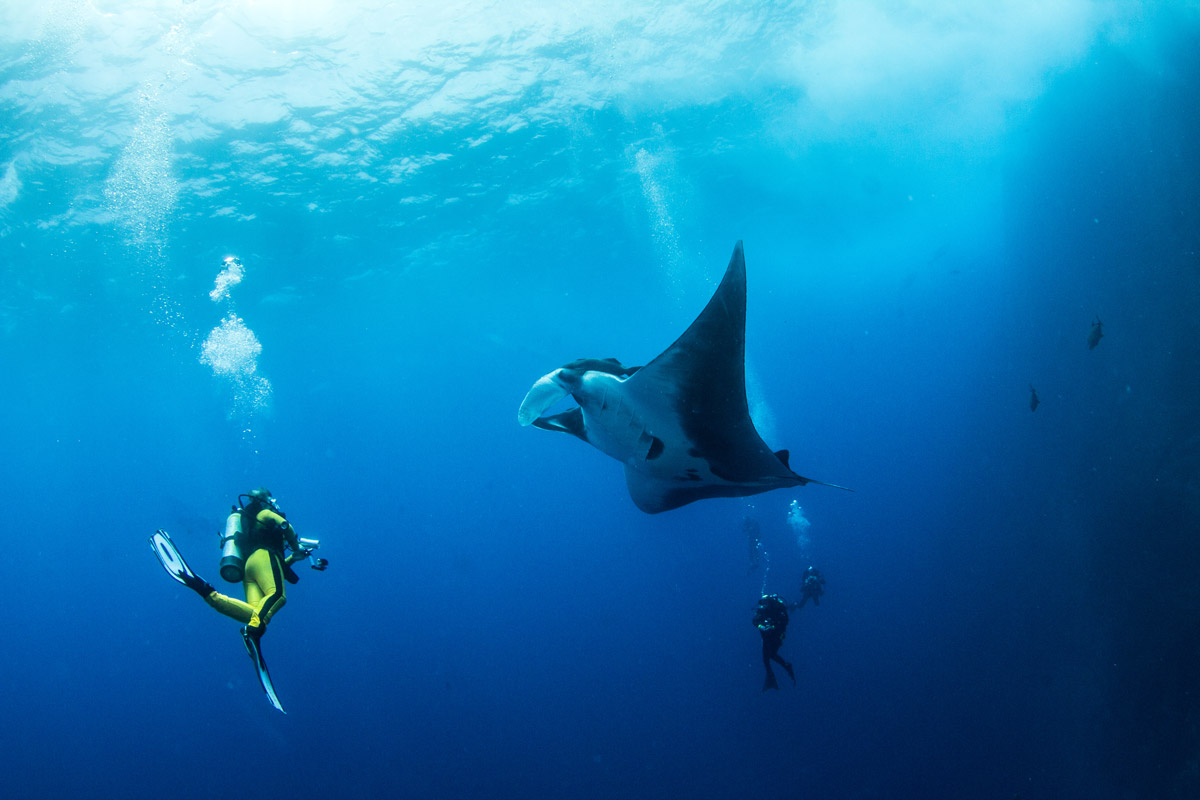
November marks the start of Socorro’s diving season in Mexico, which runs through to June. Liveaboards will be visiting the exhilarating Revillagigedo Islands (Socorro), which are known for sightings of large pelagic life and endemic tropical fish.
The most famous residents are friendly giant Pacific manta rays, with wingspans as wide as 7 metres! However, these waters are also frequented by dolphins, humpback whales, 7 species of shark, and predatory fish such as wahoo and Yellowfin tuna.
December: Christmas in the Coral Triangle
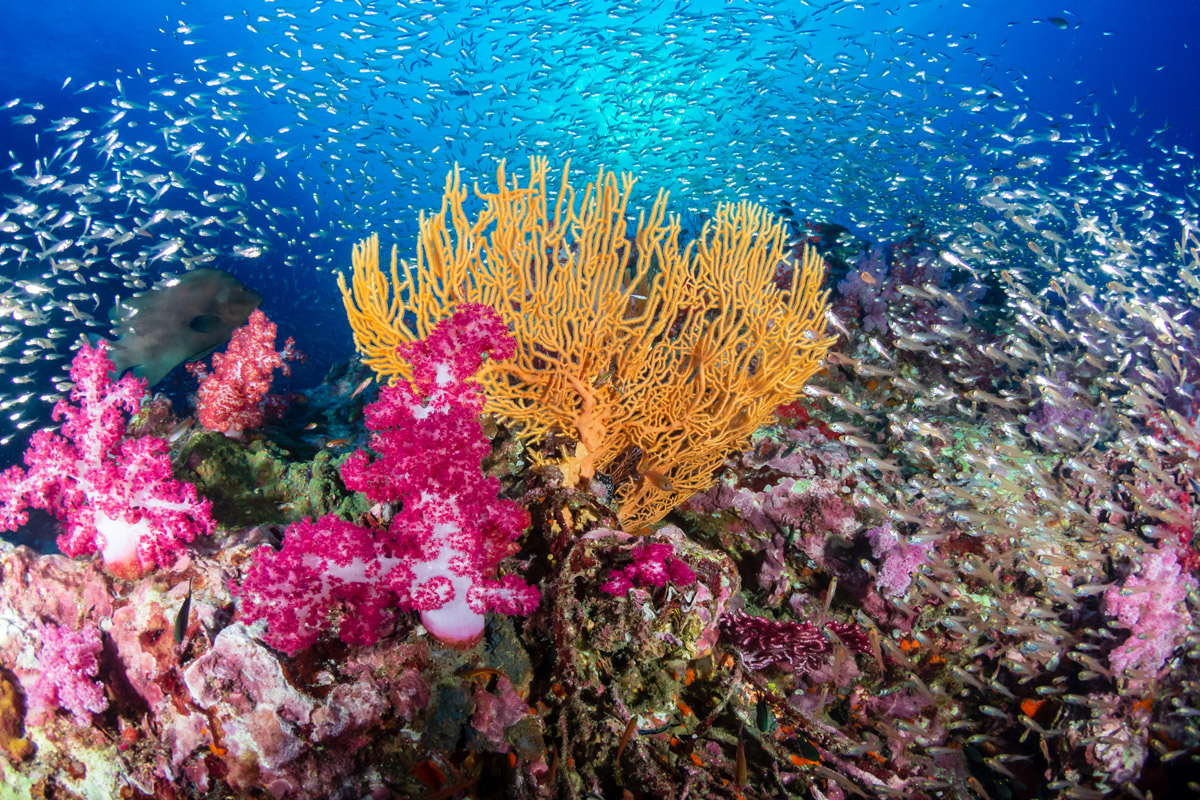
The Philippines is the perfect destination for December, with thriving coral reefs and some of the richest marine biodiversity on the planet. December to April is the dry season, so you can expect warm weather, low rainfall, calm waters and good visibility.
At Malapascua, you can experience daily encounters with intriguing thresher sharks. Evolution Dive Resort is a fantastic base from which to explore some of the best diving the Philippines has to offer. From its beachfront location in Malapascua, you can reach Monad Shoal’s Shark Point, The Tapilon wreck, and an enthralling mix of big fish, swim-throughs, and great macro sites.
Other places of interest are Moalboal, which attracts mesmerising sardine baitballs, the WWII wrecks of Coron Bay, and Dauin which is one of the best spots in the world for macro and muck diving. And that’s just the start!
To find out more about any of our diving holidays, contact our friendly Regaldive Team. You can also use our trip search to browse all our liveaboard departures or resorts that we feature and browse our latest special offers.
Find a trip
- Resort
- Liveaboard
What to Expect on a Diving Holiday to Riviera Maya
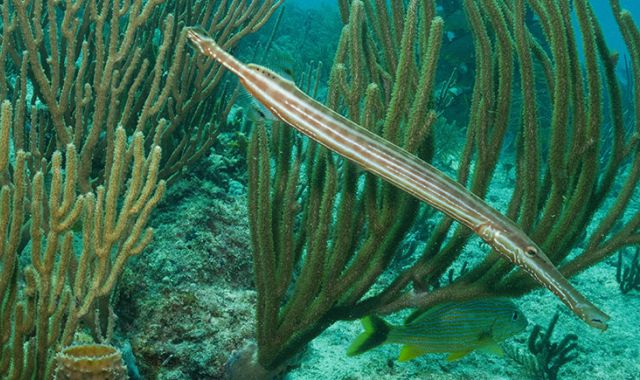
6 Jul 2023
From the mainland, divers can explore the ocean reefs along the Riviera Maya coastline. The reefs have a colourful mix of classic Caribbean corals and are populated by large shoals of grey snapper and porkfish, which form highways along the overhangs. I also saw spider crabs, nurse sharks, flounders, flamingo tongue snail, and plenty more marine life.
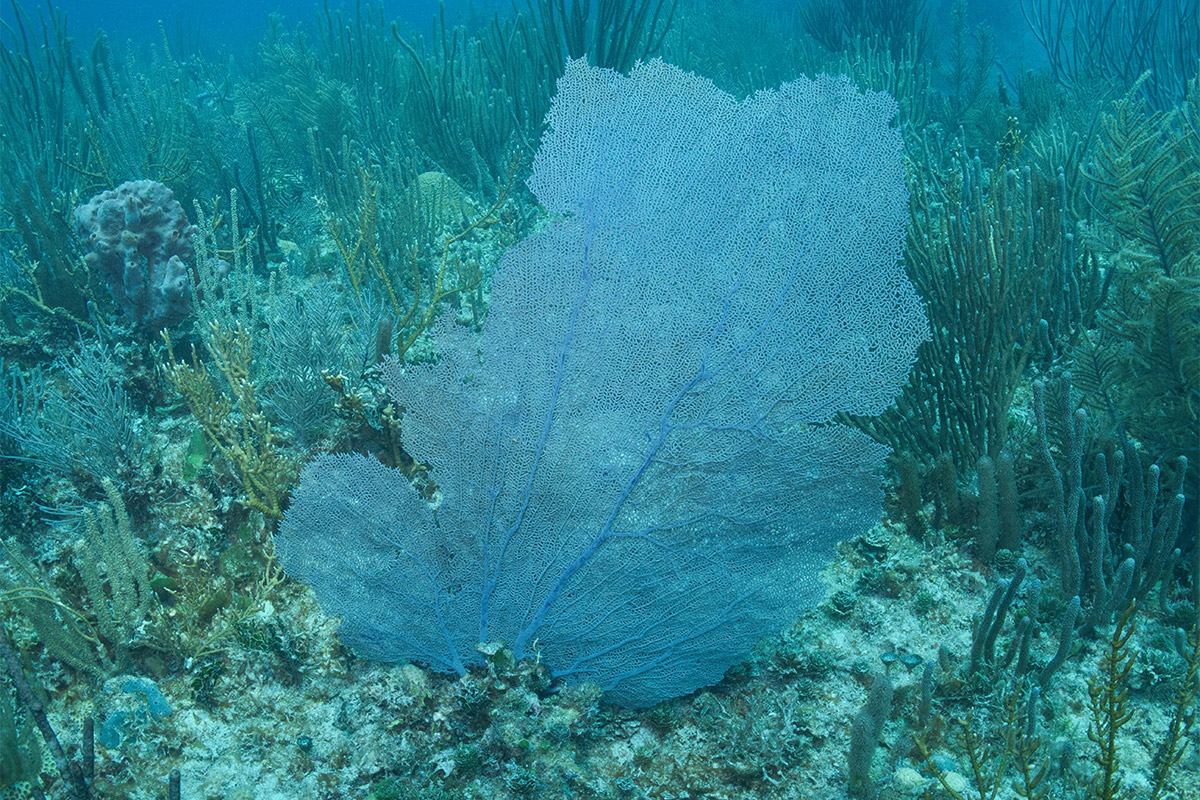
There are wrecks to explore too, many of which were purposefully scuttled to create artificial reefs, so they have good access routes inside. Barracuda and rays circle the wrecks, making for excellent sightings during your time on the line.
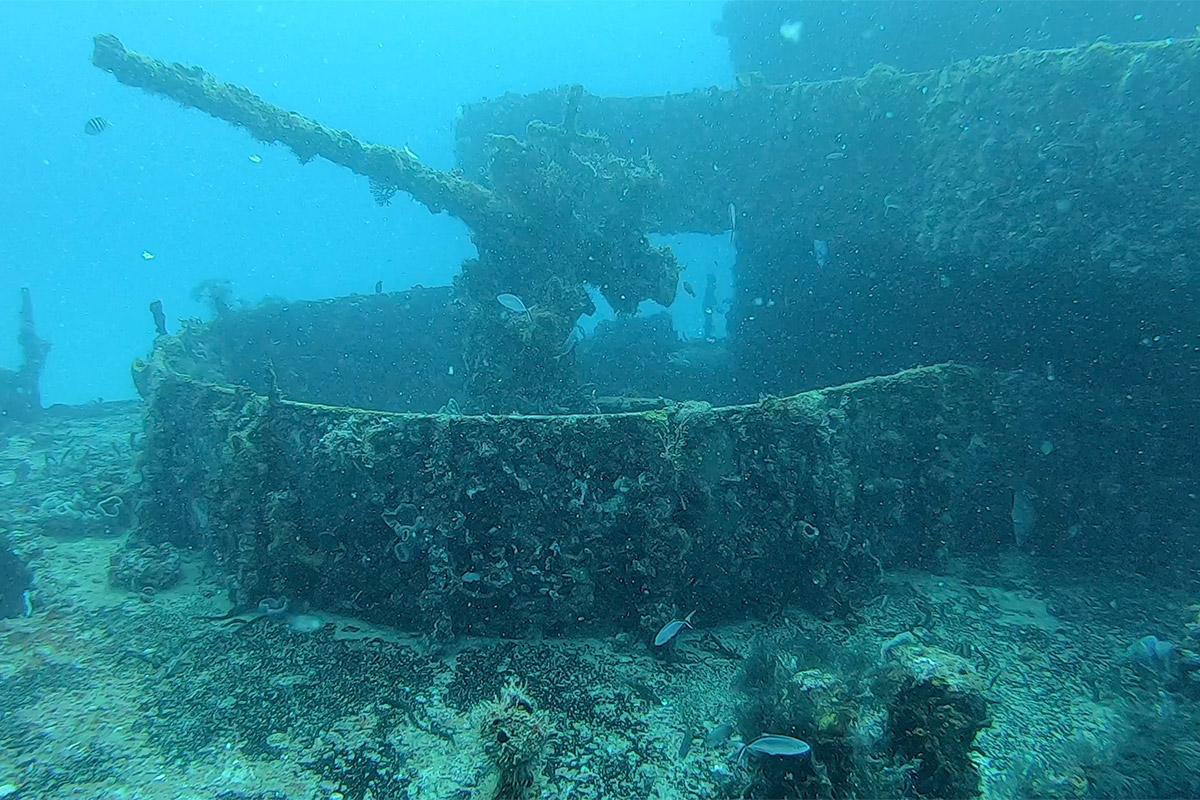
If sharks are your thing, then during the winter months (November to March) it is possible to see bull sharks during feeding dives along the Rivera Maya coastline.
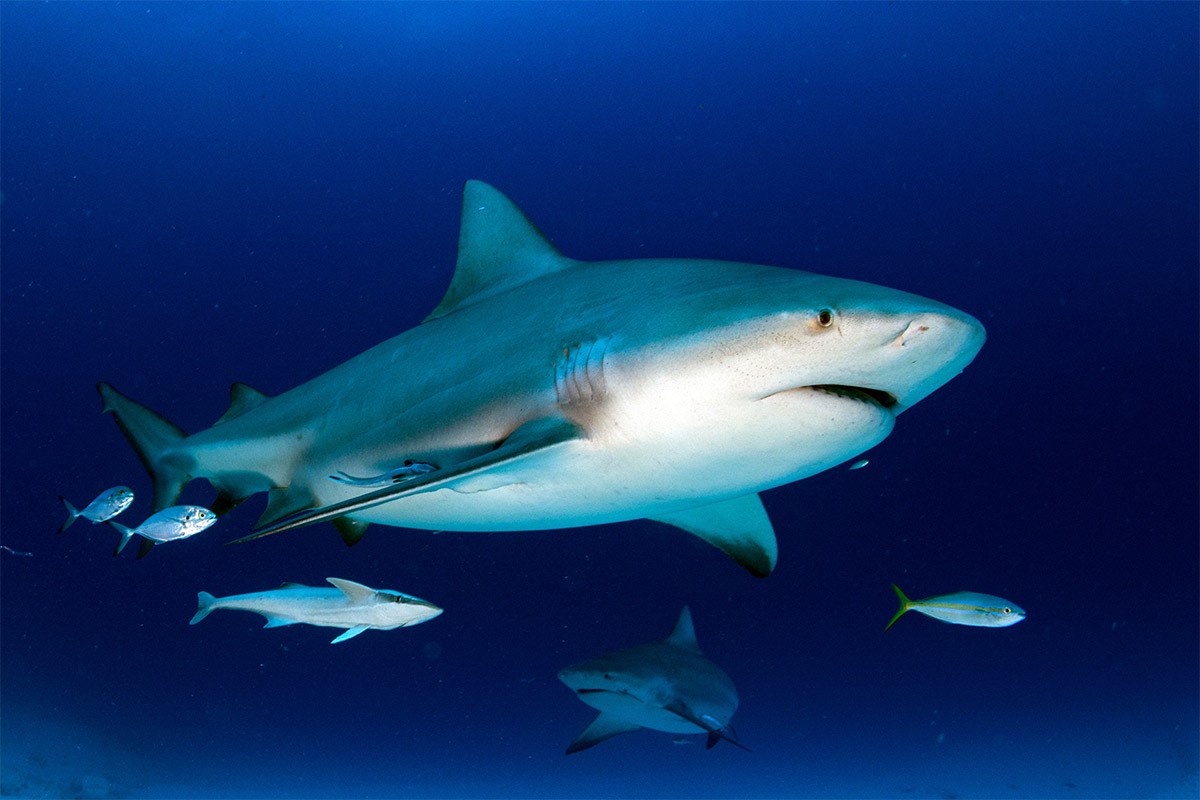
Mainland-based divers also have the option to take a day trip over to Cozumel, a more peaceful island with azure waters, swim-throughs, and an abundance of marine life. Drift diving is a popular option there as the water pushes between the island and the mainland, the currents bring with them rich waters, creating the giant sponges and attracting large schools of Bluefin trevally, eagle rays, and turtles. The architecture of the corals here is much more interesting than the mainland, and they are more vibrant. There are accommodation options on Cozumel island, for those looking for a more tranquil holiday. Cozumel is also ideal if you have more time and want to split it between two locations.
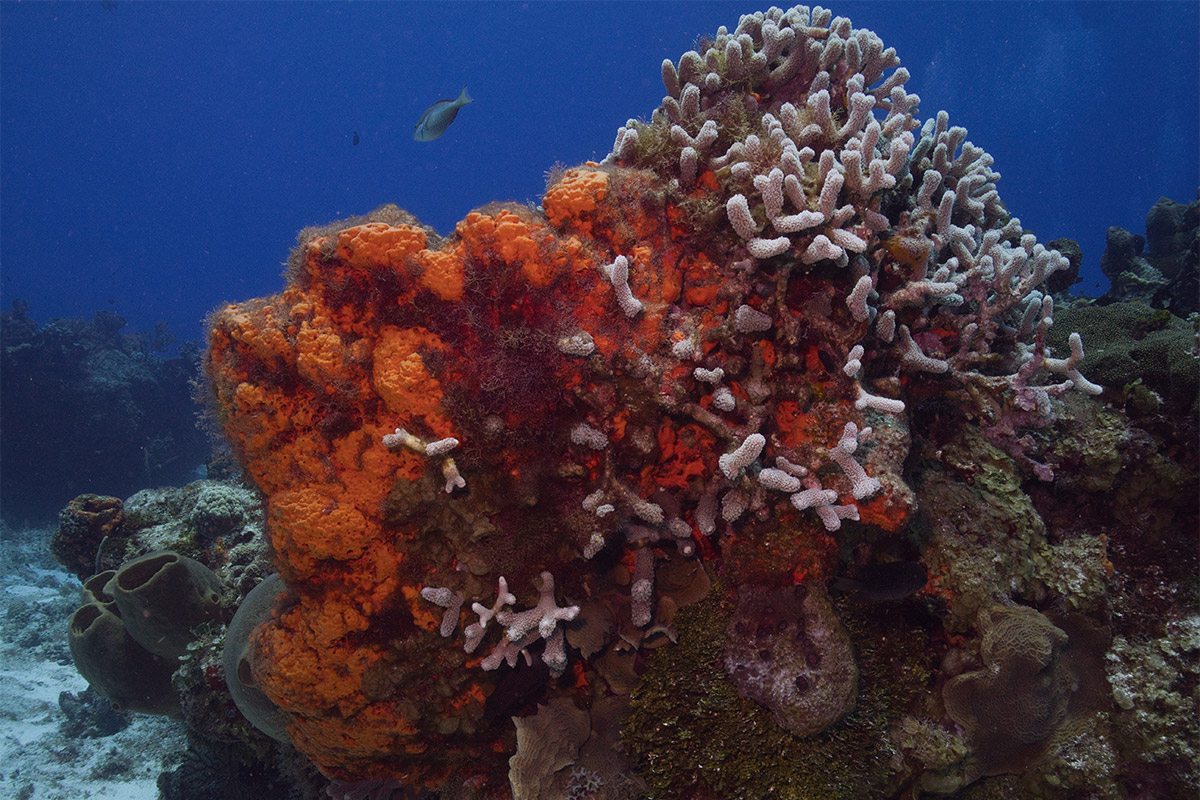
Mexico's Cenotes are a real must-see. These are a collection of chambers, caverns and cave systems on the Yucatán Peninsula, created in the limestone by underground waterways and sinkholes. The sun shines down through the breaks in the tropical canopy and enters the crystal-clear water, creating iconic sunbeams. Further inside, you’ll discover stunning geological formations which were created before the space was flooded, freezing that moment in time as a living museum for divers to explore. There are a variety of cenotes in the area, from shallow and relatively open spaces, to deeper and darker structures. These dives were by far my favourite experience during my time away.
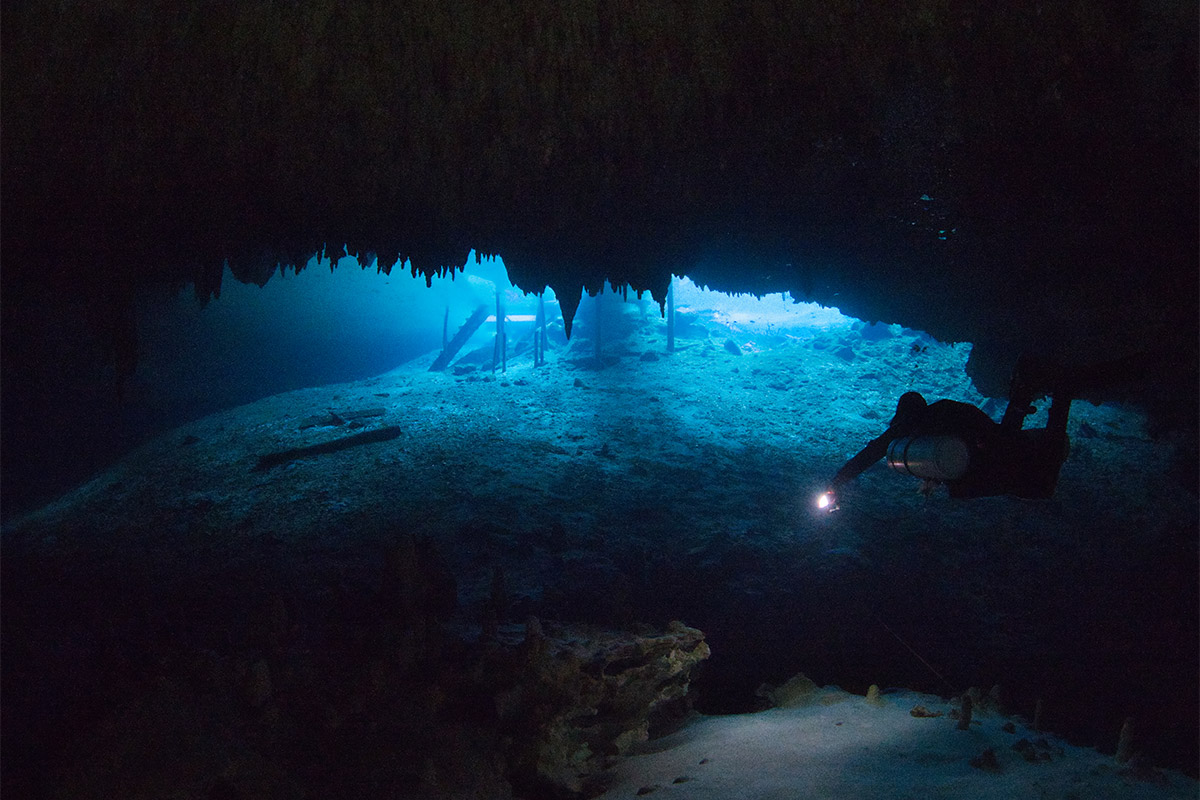
From Playa del Carmen, you can enjoy a snorkelling excursion to see Mexico’s iconic gentle giants: whale sharks. Between June and September, these large pelagics congregate in giant numbers around Isla Mujeres and Isla Holbox, along with the occasional manta ray, dolphin pod, and a turtle or two for good company! We were lucky enough to have interactions with three individuals ranging from five to eight metres in length.
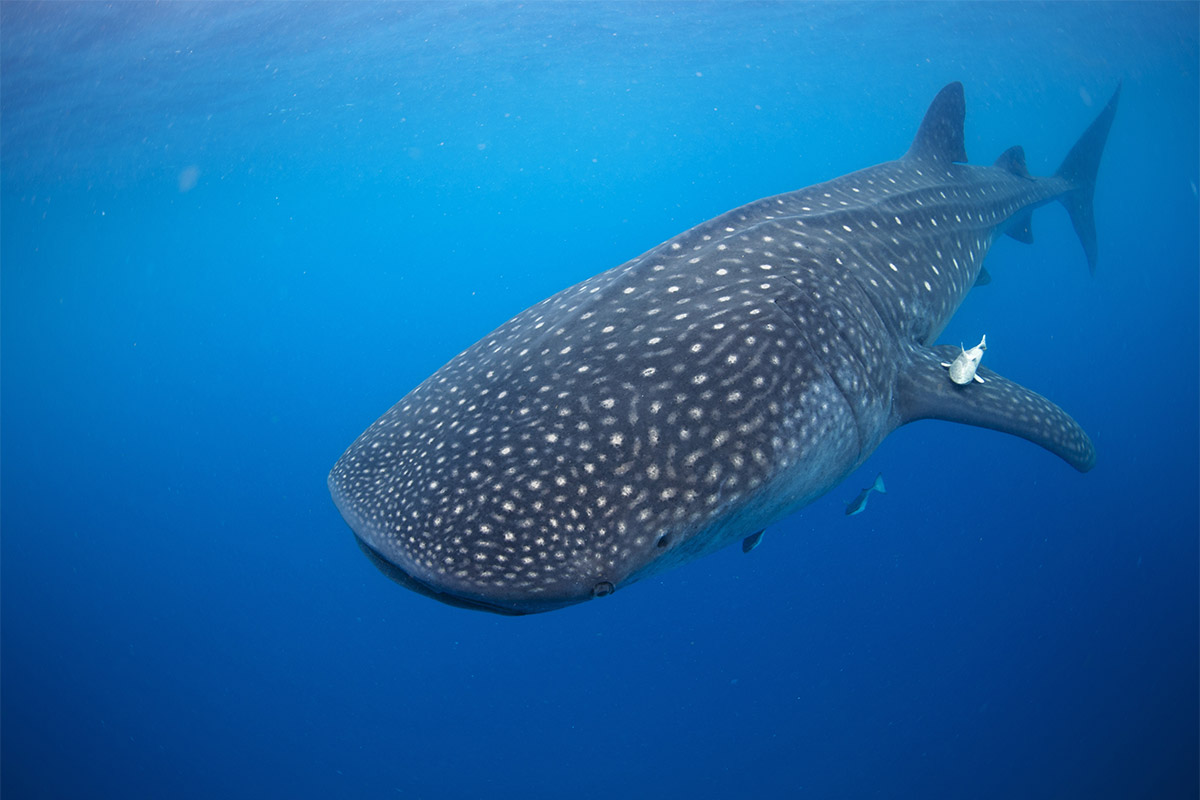
On a good day, there can be over 100 whale sharks in the area. This trip does come with fair warning, it can be bumpy and rocky when you’re in the open ocean. Sea sickness tablets are advised for those who need them (myself included!).
The ocean diving along the mainland and Cozumel is suitable for all levels: learn-to-dive and upwards, and snorkellers too. To get the most out of the Cenotes diving, I recommended logging at least 30 dives and completing the Advanced Open Water qualification (or equivalent), with a focus on developing excellent buoyancy skills. However, there are options for less qualified divers if it’s a must for you. Speak to one of our team to work out the best option for you.
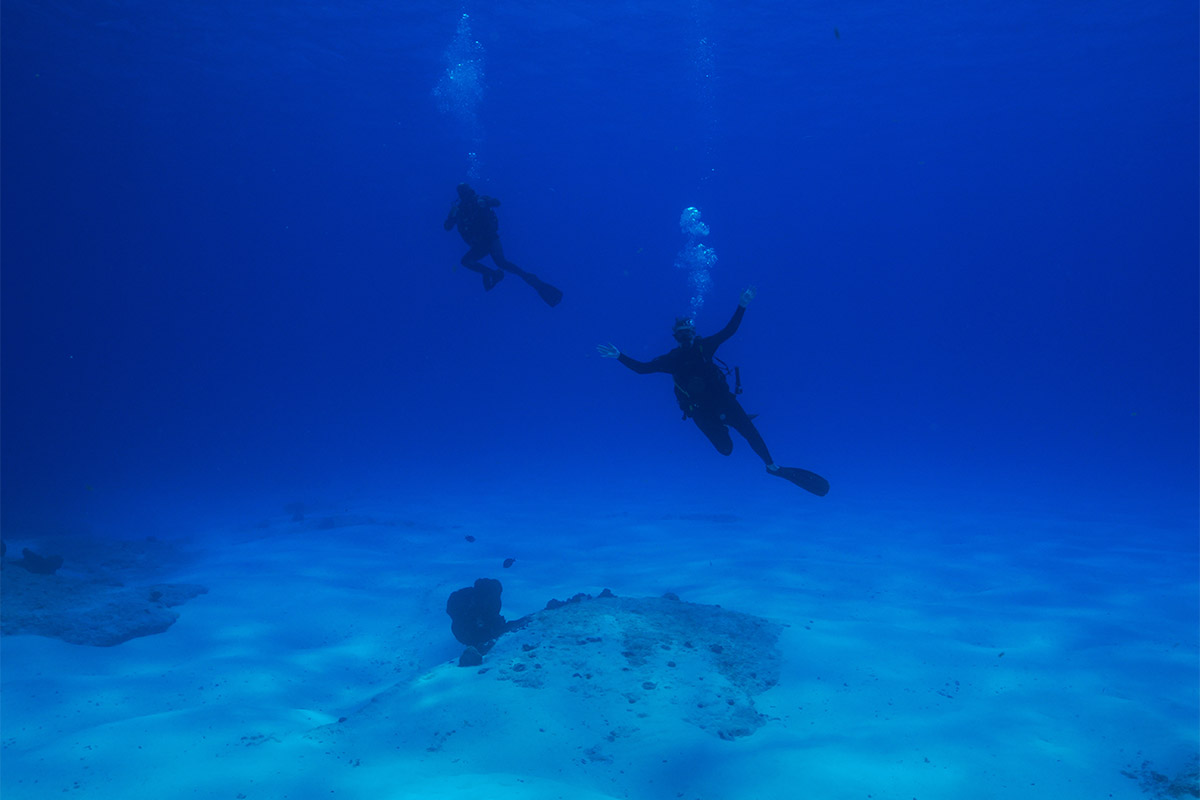
I’ve only covered the scuba and snorkelling activities in the Riviera Maya area, we haven’t even scratched the surface of the top side activities - Mayan ruins, temples and jungle tours to name a few! Mexico really does have something for everyone, and I thoroughly enjoyed exploring. Cenotes, I’ll see you again!
To find out more about diving holidays to Riviera Maya, you can contact our expert team of divers.
Find a trip
- Resort
- Liveaboard
Book with Confidence
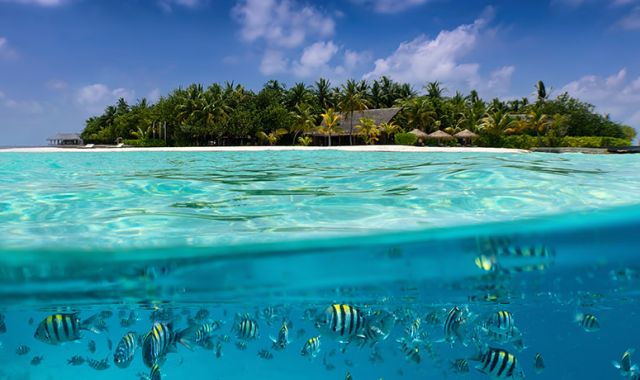
23 Aug 2022
Our expertise
With 30 years’ experience of operating diving holidays, you are in safe hands. We specialise in Red Sea diving and have an extensive knowledge of operating diving holidays around the world, so you can feel rest assured.
Knowledgeable team
We’re a team of divers and have logged thousands of dives between us! We’ve spent years working in the industry and know all the details that go into a successful dive holiday. We hand-pick our destinations, resorts, liveaboards and dive centres to put you in the right place for the best diving and ensure you’re taken care of.
Quality & value
We work hard to ensure our holidays are excellent value, and our price match promise allows you to book your holiday at the best available price.
COMPLETE FINANCIAL PROTECTION
We are a fully bonded ATOL & ABTOT UK tour operator giving you all-important financial protection.
REASSURANCE
With 30 years’ experience of operating diving holidays, our expert team are on hand to talk through your booking every step of the way and provide advice on the latest requirements for travel. We provide 24/7 support in the event of an emergency when you are overseas.
Safety & Security
We operate all our holidays in accordance with Foreign, Commonwealth & Development Office (FCDO) advice. If you are unable to travel as a result of FCDO advice, we'll offer you the options to change your departure date, travel to a different destination or cancel and receive a full refund.
Our Partners
Over three decades, we’ve established excellent relationships with numerous airlines, suppliers, hotels and liveaboards, and working together, we create memorable holidays for our valuable clients.
Contact our expert team of divers to start planning your perfect diving holiday, view our current liveaboard and resort offers, or find inspiration for your next trip away.
Find a trip
- Resort
- Liveaboard
Scouting out Sharm
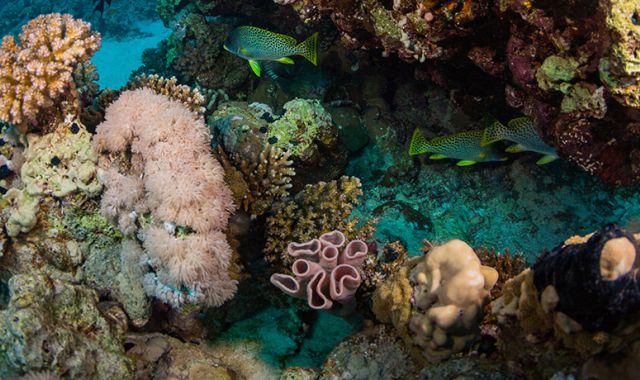
11 May 2020
Having never been to Sharm el Sheikh, the Red Sea or even Egypt before, visiting this part of the world seemed like a wonderful opportunity to provide a first hand experience of the area as well as visit some of our partners. With this insight I would then be able to pass on key information to those who have never been to these resorts or Sharm el Sheikh like myself.
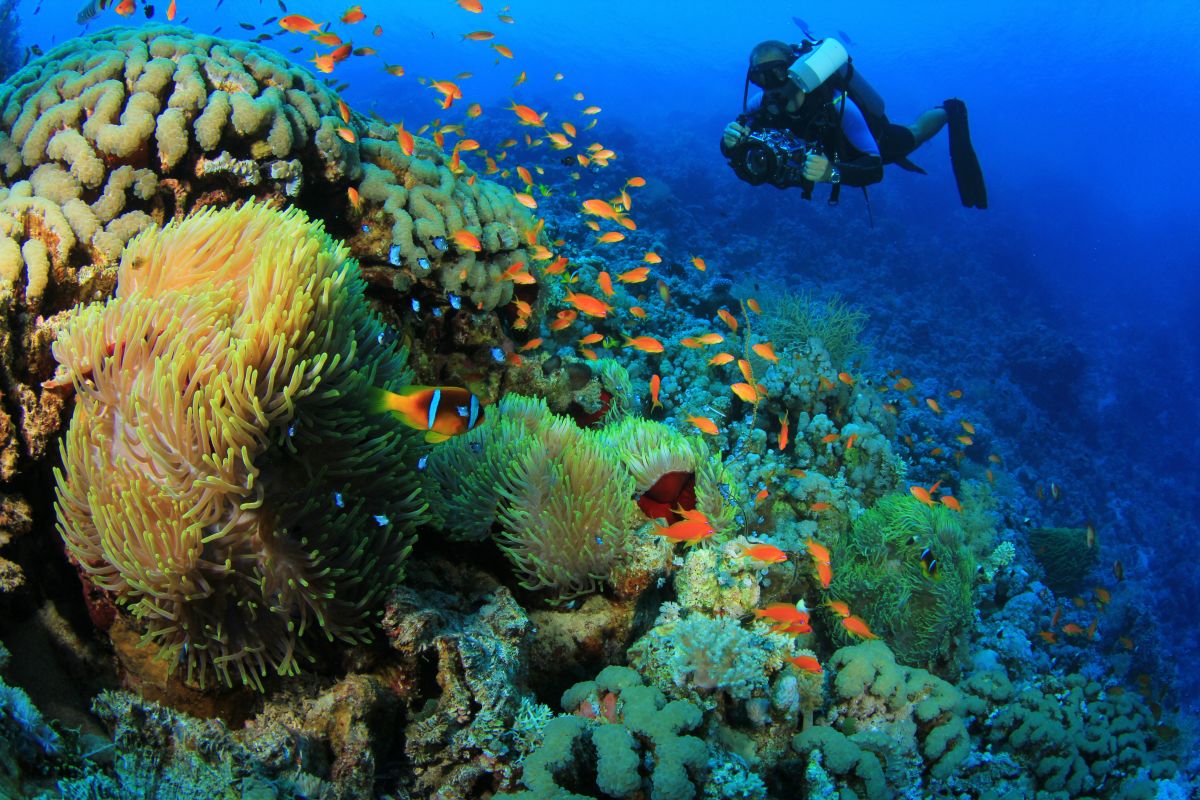
I spent time with two of our partners out there, one fantastic new addition and one long time favourite. The first was Shark’s Bay Umbi Village, a veteran in Sharm el Sheikh but a newcomer to the Regaldive fold. This diamond in the rough provides a unique experience unlike anything you would find in Sharm El Sheikh. I was picked up from the airport by their minivan airport transfer, no more than 10 minutes later I had arrived into a Bedouin ‘snow globe’, the first sight, carved into the cliffs face are their mainstay rooms that stay true to their culture. Weaving through the passageways of doors either side appearing as if from nowhere, felt like I had fallen into the pages of a children’s book.
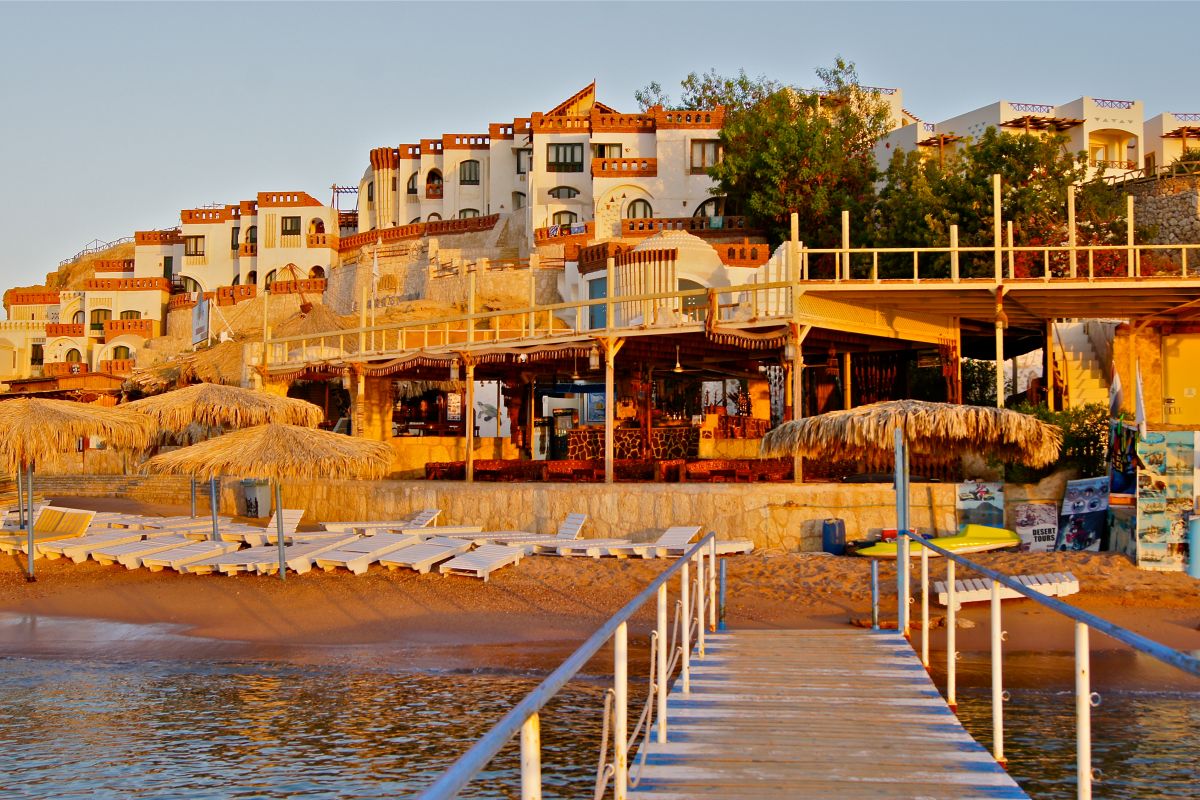
The local staff all live on site in true Bedouin fashion like one big family. At the head of this family is the founder and namesake of this diving ‘village’, a man called Umbi, if you take a moment and ask anyone who works here about him they will tell you amazing stories of his life and true testaments of his character.
The saying “…you come as a guest but leave as a friend” is thrown around so much but never has it felt truer than when you stay at Umbi Village. The staff here sit and chat, they take care of you and would bend over backwards for you, until you realise that they’ve become more than just a friend - they begin to feel like family too.
You’ve woken up, walked out onto your balcony and took in the stunning scenery with a clear view of the island of Tiran across the water. Your tummy grumbles, reminding you that you need breakfast, after taking a brief stroll passed the Bedouin tent you reach the restaurant where a buffet is waiting for you complete with a cook ready to make your omelette whichever way you like. The perfect way to start the day.
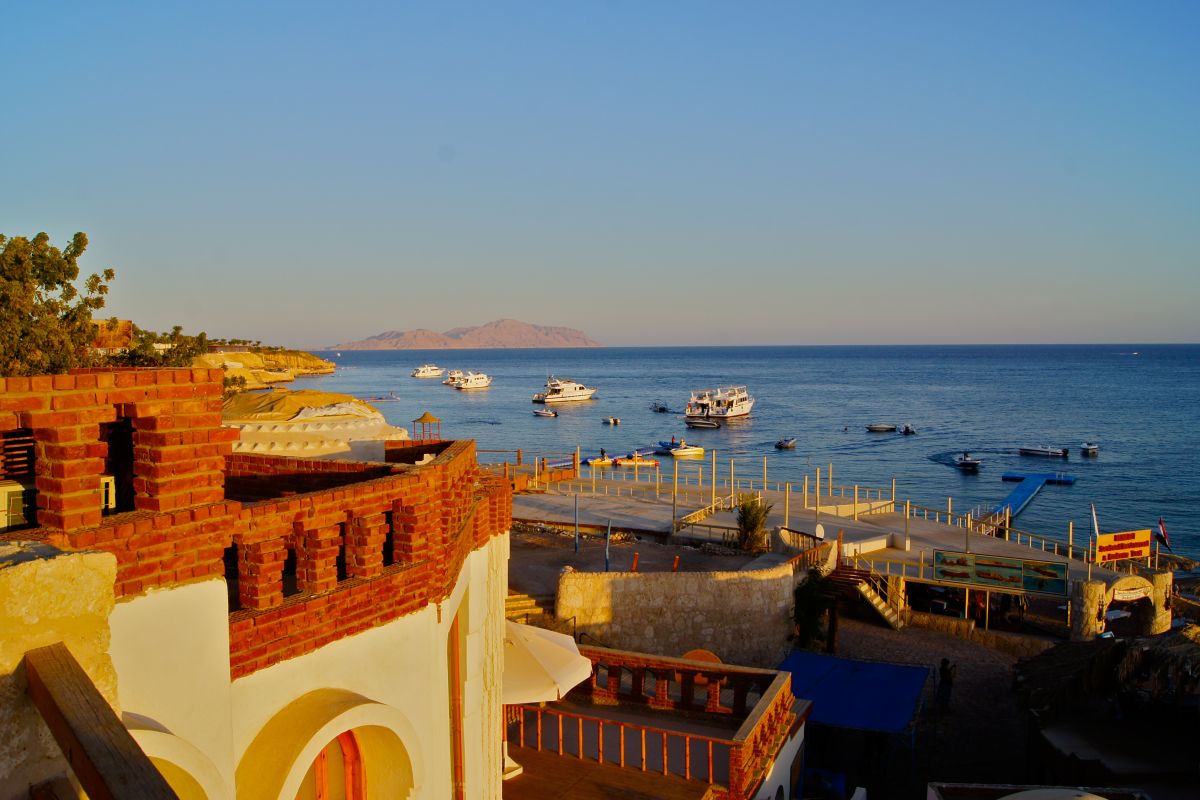
What is to be said for the experience on land remains true for the sea, a short walk down their own jetty and you’re on one of their magnificent vessels that are capable of not only providing a gateway for day diving but also a liveaboard experience from mini 3-5 day safaris up to a full week.
The pristine Reefs of the Tiran Strait are just 25 minutes away by boat (or 10 by speedboat). Gordon Reef can be seen first as the wreck of the Louvila sits on top of her. On a gentle drift dive I enjoyed a large plateau of porites coral that was teeming with schools of yellow goatfish. At the drop off you might be lucky enough to see a white tip reef shark cruising below or huge tuna in the blue water. Barrels that fell off a cargo ship in the 80s have formed an artificial reef on the sand, housing territorial anemone fish and wrasse. I witnessed blue-spotted stingrays sheltering underneath the many table corals here and a hawksbill turtle fed on the abundant broccoli coral. This area enjoys currents from very deep water funnelling over the shallower saddles of the Tiran reefs – one of the reasons it is so rich.
The dive crew are on hand to make every part of your dive trip effortless then in between or after your dives there is plenty of space to relax on the upper sun deck whilst indulging in a delicious catered lunch.
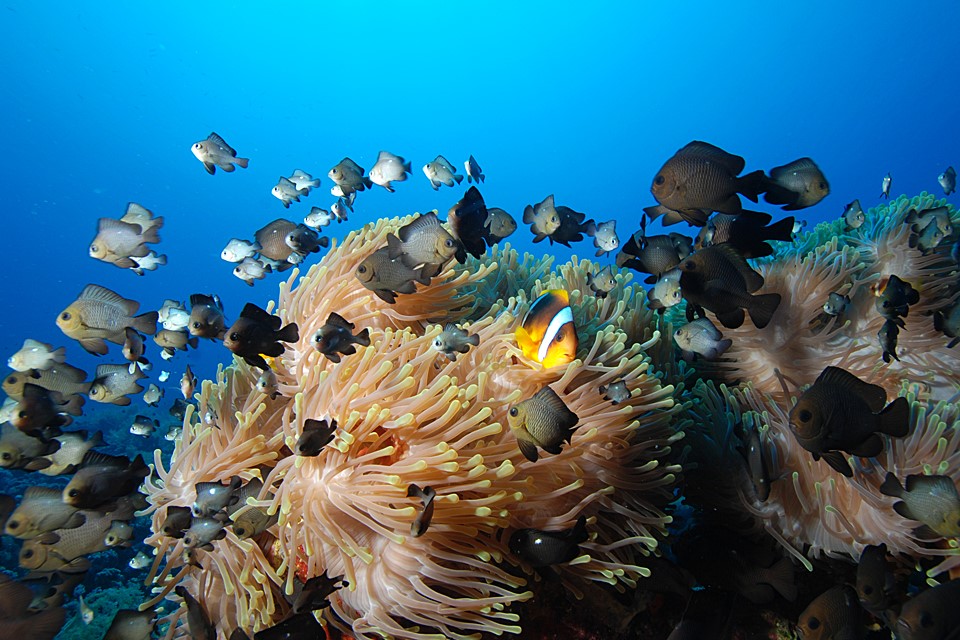
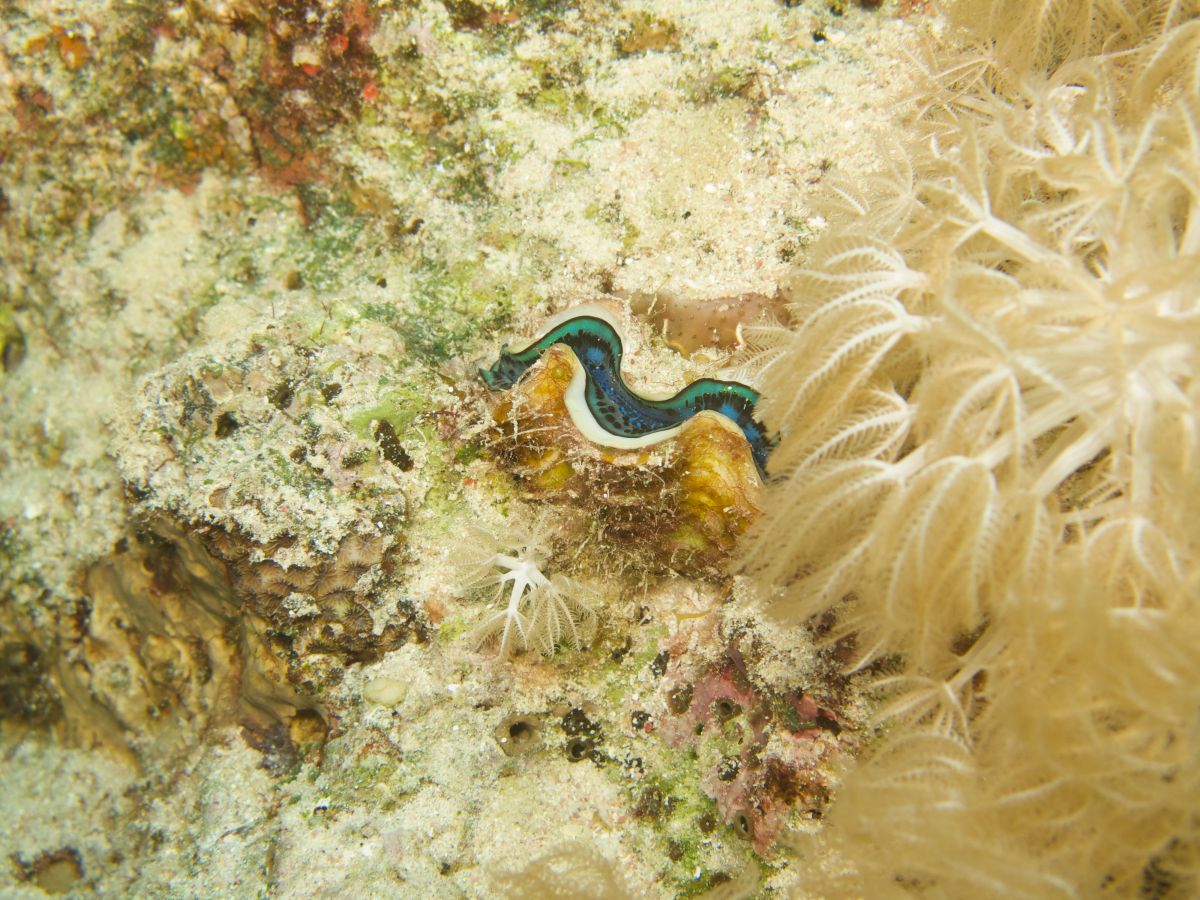
Back on land you’ve rinsed off and got comfortable again and are ready for your dinner, arriving in the Bedouin tent is a glimpse into their pure way of life. The seating areas with cushions on the ground to sit or lie on is a comfort like no other. Once settled, you can order from their a la carté menu with features a wide variety of choices such as wraps, pizzas, pasta dishes to name a few. The chicken bedouin roll is my personal favourite. Finishing off your day with a glass of your favourite drink and a bit of shisa should that take your fancy.
Before you’ve even left this haven you’ll be planning your next trip to come back and see your friends.
Camel Dive Club is a resort that’s reputation is renowned. Situated in the centre of Sharm El Sheikh a short 200m walk to the beach, this is a complex comprised of a hotel, dive centre and restaurant, with each section requiring its own personal mention without ever feeling like they are separate in any way. This is a place that was intentionally and perfectly designed for the needs of a diver.
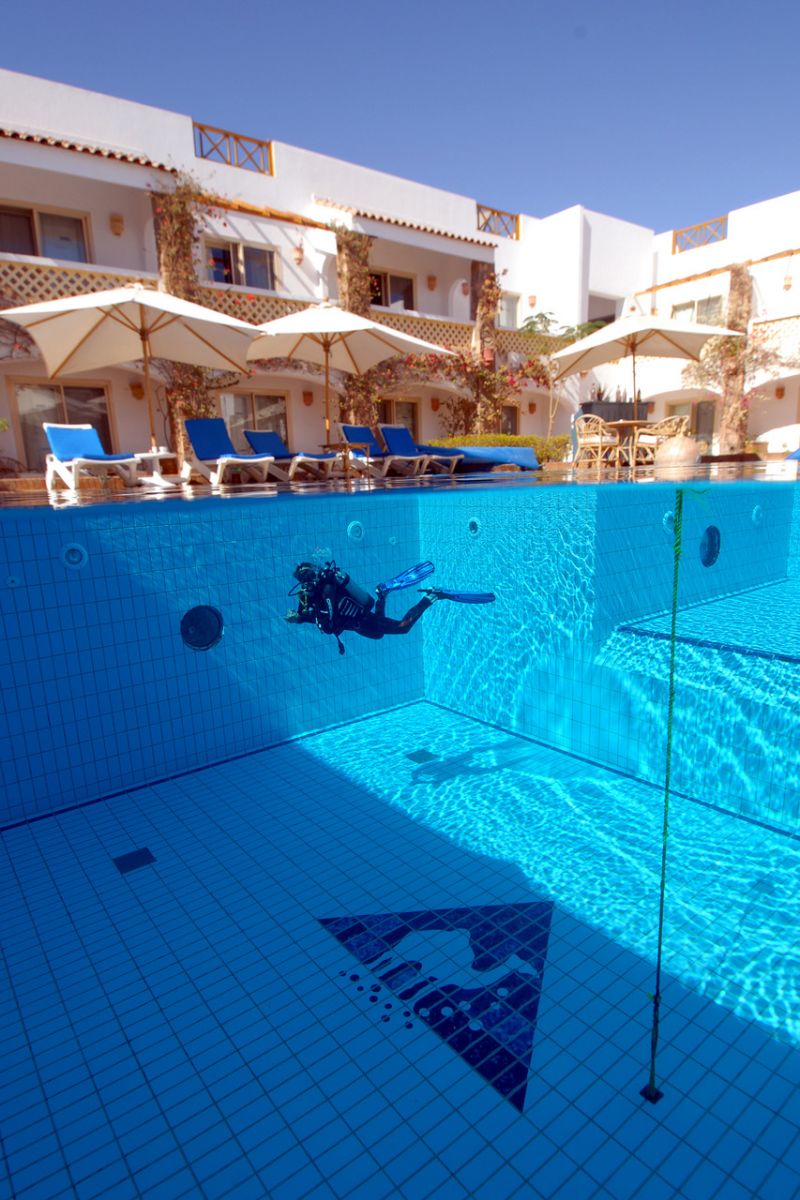
The hotel rooms surround the training pool, these spacious rooms complete with large comfortable beds and an en suite shower room is the luxury you will look forward to after your diving when you’re sat on your balcony enjoying the evening sun.
The dive centre is the social hub, whether or not you’ve been diving that day they're always wanting to talk about all things diving. State of the art classrooms for courses and any tec requirement you may desire, they can accommodate.
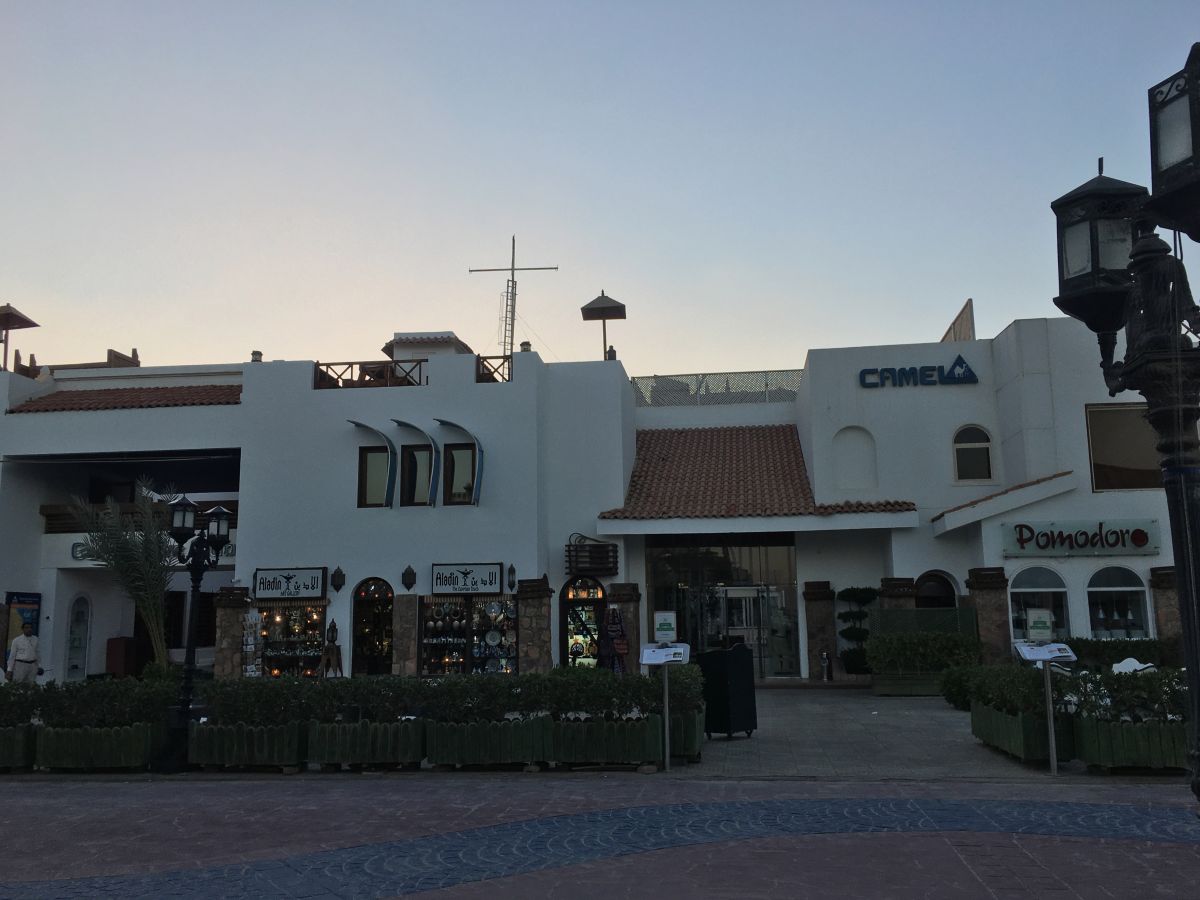
Lastly the restaurant, Pomodoro, a delicious breakfast buffet to kick off your day or a classy evening meal to toast a fabulous day of diving, either way a food coma will be waiting for you at the end.
Camel Dive Club is more than just a resort, it is it’s own little world in Sharm El Sheikh, one that will be always be there waiting to take you on your next adventure.
Speak to a member of our team to discuss Sharm el Sheikh diving holidays.
Find a trip
- Resort
- Liveaboard
Why I Love Whale Sharks
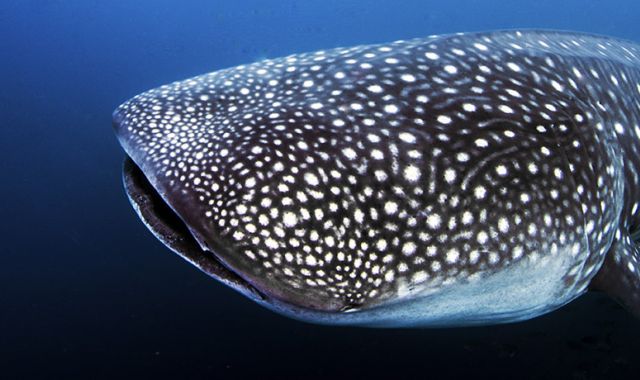
5 May 2020
At first, there were many near misses. We’ve all been there. You return to the boat from a dive to excited chatter from your fellow divers about their thrilling marine life encounter; and endeavour to share in their delight as they recount their tale while querying how on earth you managed to miss it. Or maybe you pick up on the buzz of excitement on a dive, or hear the frantic attention grabbing exploits of a dive guide only to miss the reason for all the excitement.
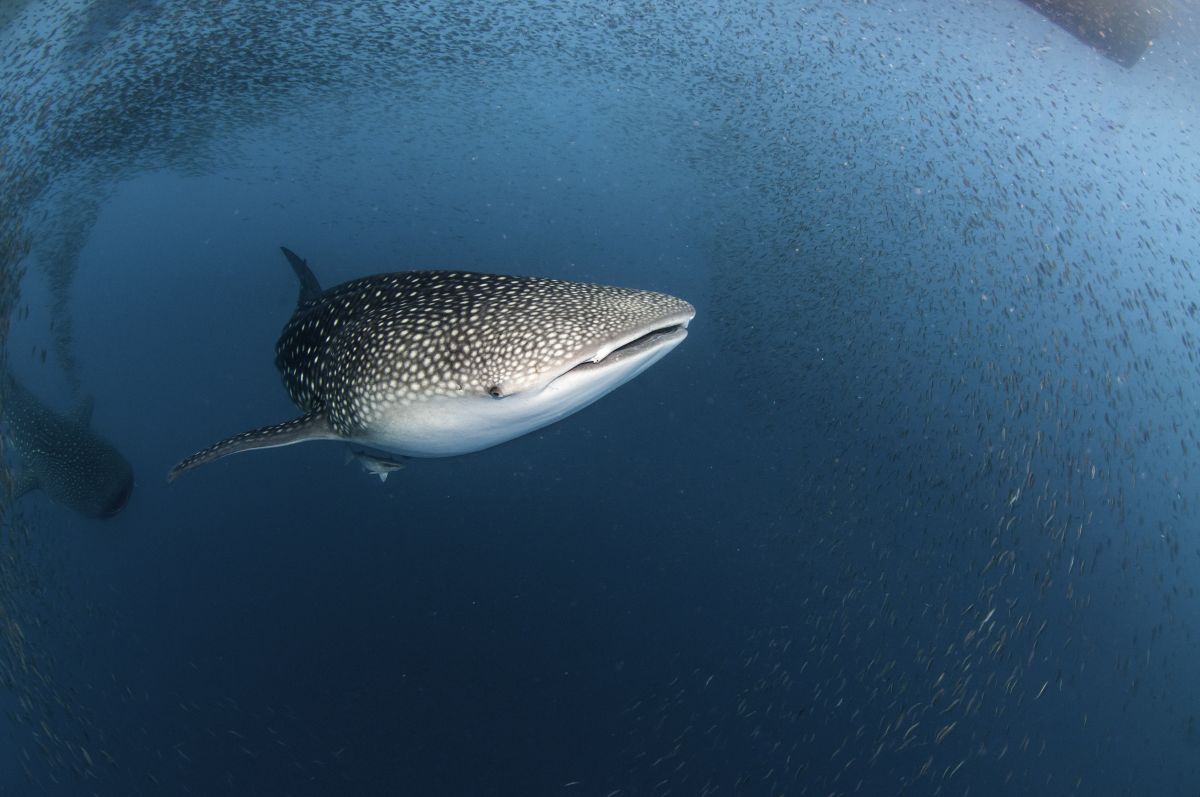
In truth, these moments just add to the joy when you finally enjoy that thrilling encounter you’ve been longing for. That was very much the case with my first ever whale shark encounter, which I remember vividly to this day. I was working as a videographer on the Andaman Coast of Thailand. Having got the required shots of divers swimming through a photogenic underwater cavern, I exited into the blue to hear that distant but slightly frantic tinging on a tank. Here we go again, I thought. But wait, what’s that. Oh my. A shape was emerging in the distance. Or was it? Yes, it was. Definitely, and it was getting closer! As the scene unfolded, the whale shark made a beeline right for me. The Andaman coast of Thailand is thought to be a nursery area, and this young whale shark was without doubt curious by nature. We shared a magical encounter, and my love affair with whale sharks was born.
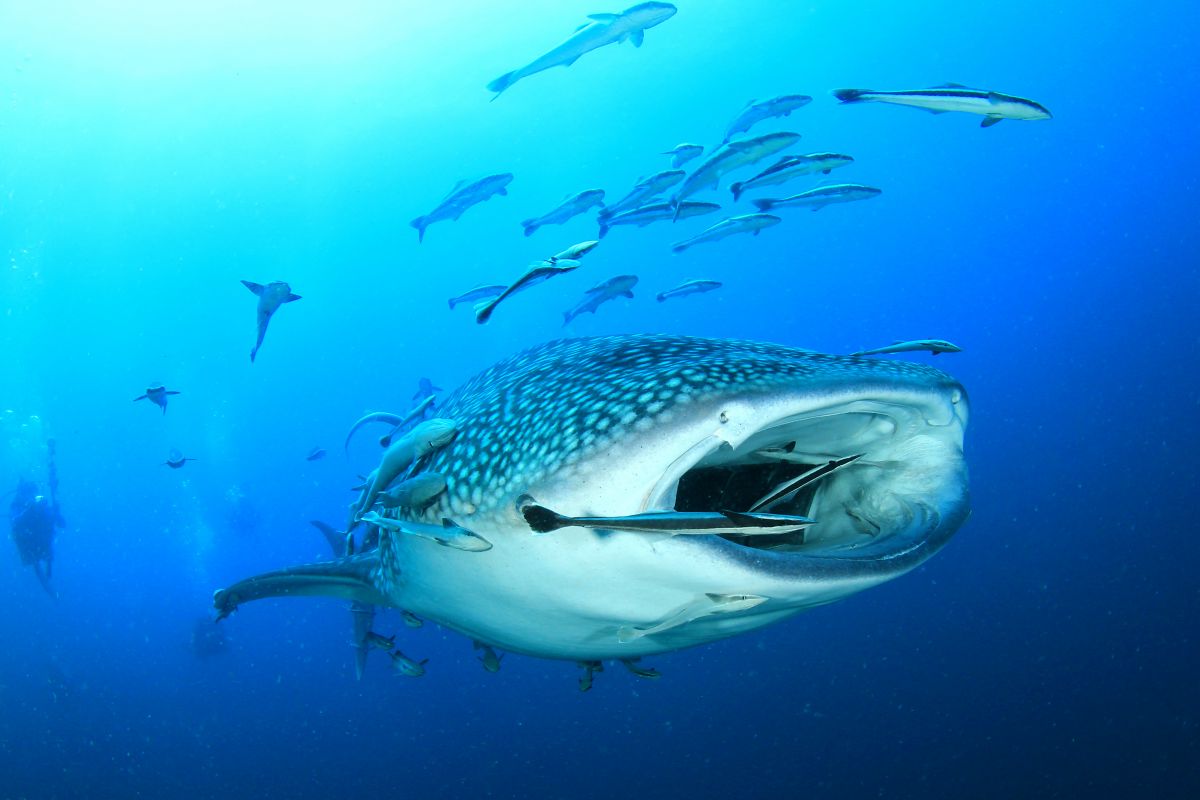
These gentle giants are a much sought after animal for many divers and snorkellers, and for good reason. Growing up to 18 metres (albeit most likely closer to 10), they seem to emanate a friendly and curious nature, and are thought to be so ancient that they may even pre-date the dinosaurs! While they are found in tropical waters all around the globe, and can often be encountered by lucky scuba divers, they continue to have an air of mystery around them. Their breeding and birthing grounds are not yet known, although the presence of large pregnant females in the Galapagos Islands suggest this is a hotspot. St Helena in the mid-Atlantic has also become known recently as a place where both adult males and females intermingle, giving rise to the idea that this is also a crucial habitat. In many places where they are found, such as the Maldives or Mafia Island in Tanzania, it is thought to be adolescent males that tend to gather together.
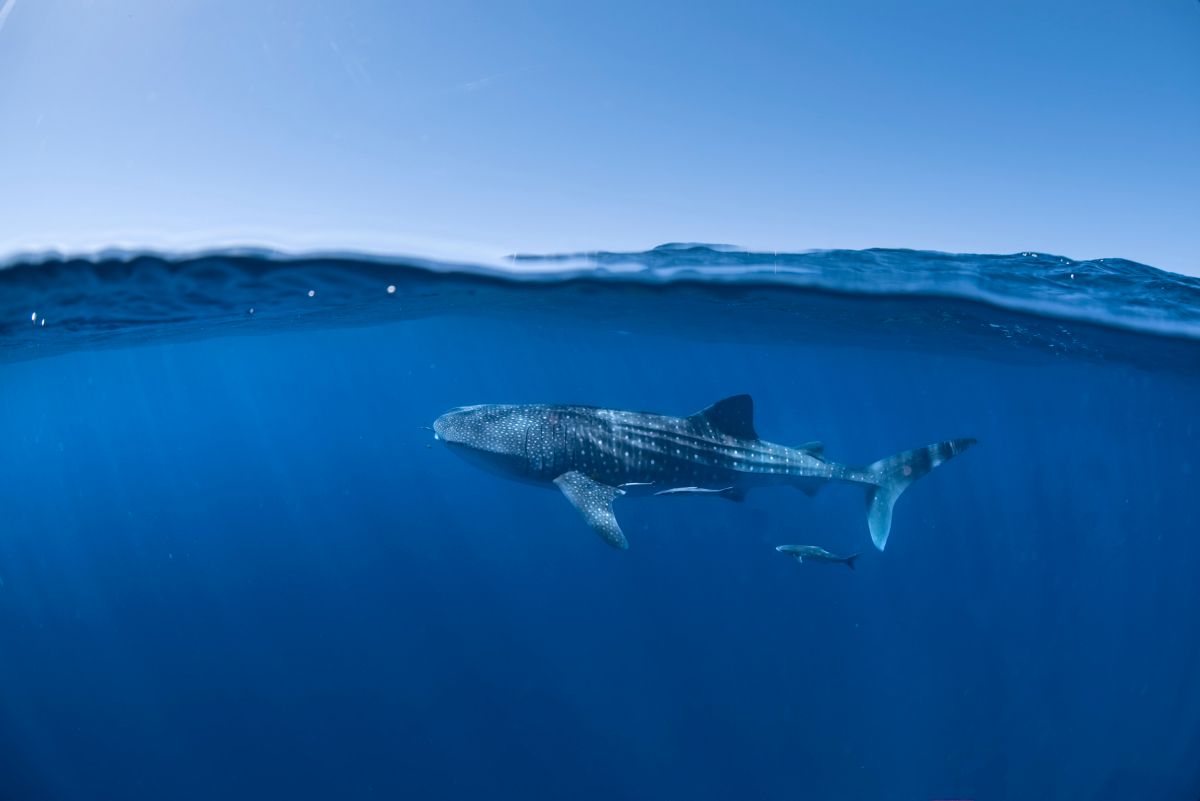
No matter where in the world or how fleeting, any whale shark encounter is likely to stay with you forever, and like me, you will begin a lifelong love affair.
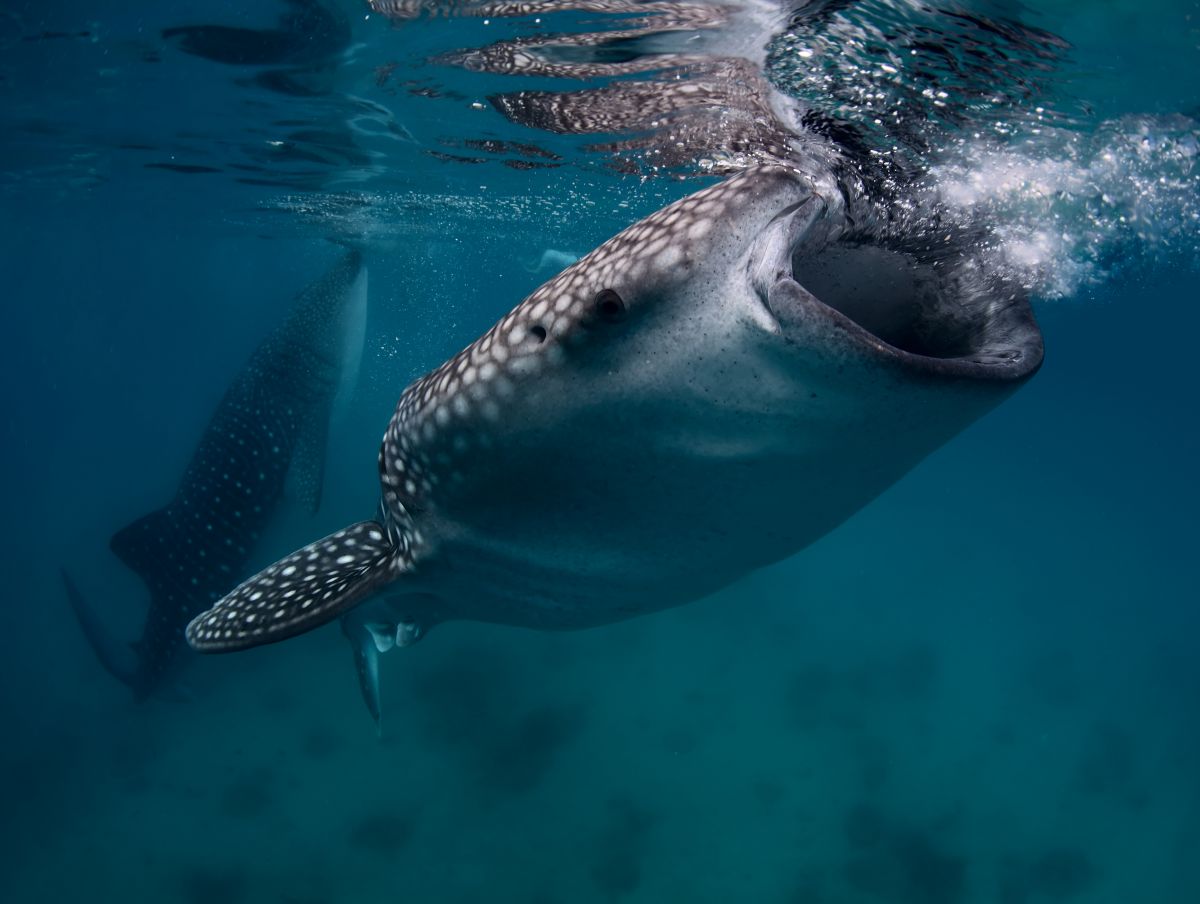
If you would like to have the chance to encounter one of the most impressive animals to grace our oceans, speak to one of our friendly Regaldive team today!
Find a trip
- Resort
- Liveaboard
The wonderful octopus
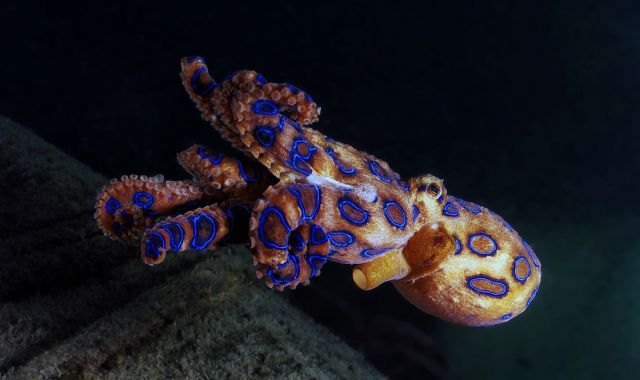
1 Apr 2020
There are a few hot spots where sightings of octopus could almost be considered common place and these tend to be the muck diving capitals of the diving world. A number of locations within the coral triangle are famed for providing the perfect habitat for our eight armed friends- that’s right; arms not legs or tentacles.
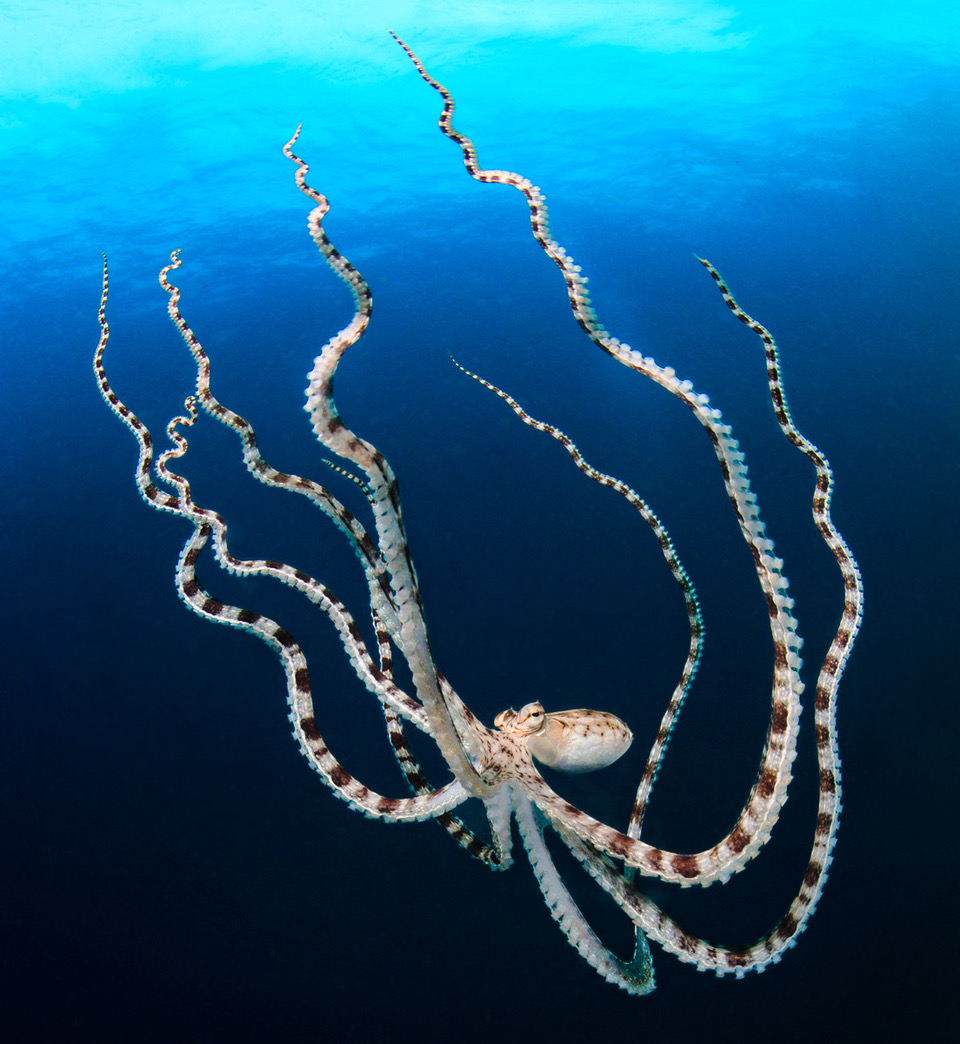
Image by Bernard Ravener
Lembeh Strait in Indonesia is often thought of as the premier muck diving destination and if luck is on your side it’s here where you can expect to have encounters with the enigmatic mimic octopus. Their uncanny ability to imitate more than ten different animals including lionfish and flatfish is unique to this most bizarre and advanced mollusc.
In Bali and North Sulawesi the octopus opportunist has the chance to spot all manner of critters including the fascinating coconut octopus, named for the behaviour it exhibits when using coconut shells to conceal itself from would be predators. When they’re not displaying this clever trick they’re often buried in the sand exposing only their eyes.
A visit to the Philippines to Anilao or Bohol should also be on the bucket list if like me, the octopus ranks highly on your favourite species list. It’s possible to see the tiny but highly venomous blue ringed octopus which technically has enough venom to kill upwards of ten grown men! All octopodes have venom but the recorded number of total deaths worldwide from the blue ringed (the most venomous) is thought to be no more than a dozen or so. When approached sensibly and with caution they do not pose a significant threat to a diver.
The octopuses (not octopi) ability to solve problems and puzzles is the subject of scientific research and ongoing questions about their intelligence. Their lifespan can be less than 6 months, with the largest of species - the giant pacific octopus - living the longest at just 3-5 years in the wild. They are also the most devoted mothers on earth, with mother’s starving themselves and sacrificing their own lives to protect and nurture their eggs. Males are rather less impressive, and are thought by some to lose much of their memory after mating.
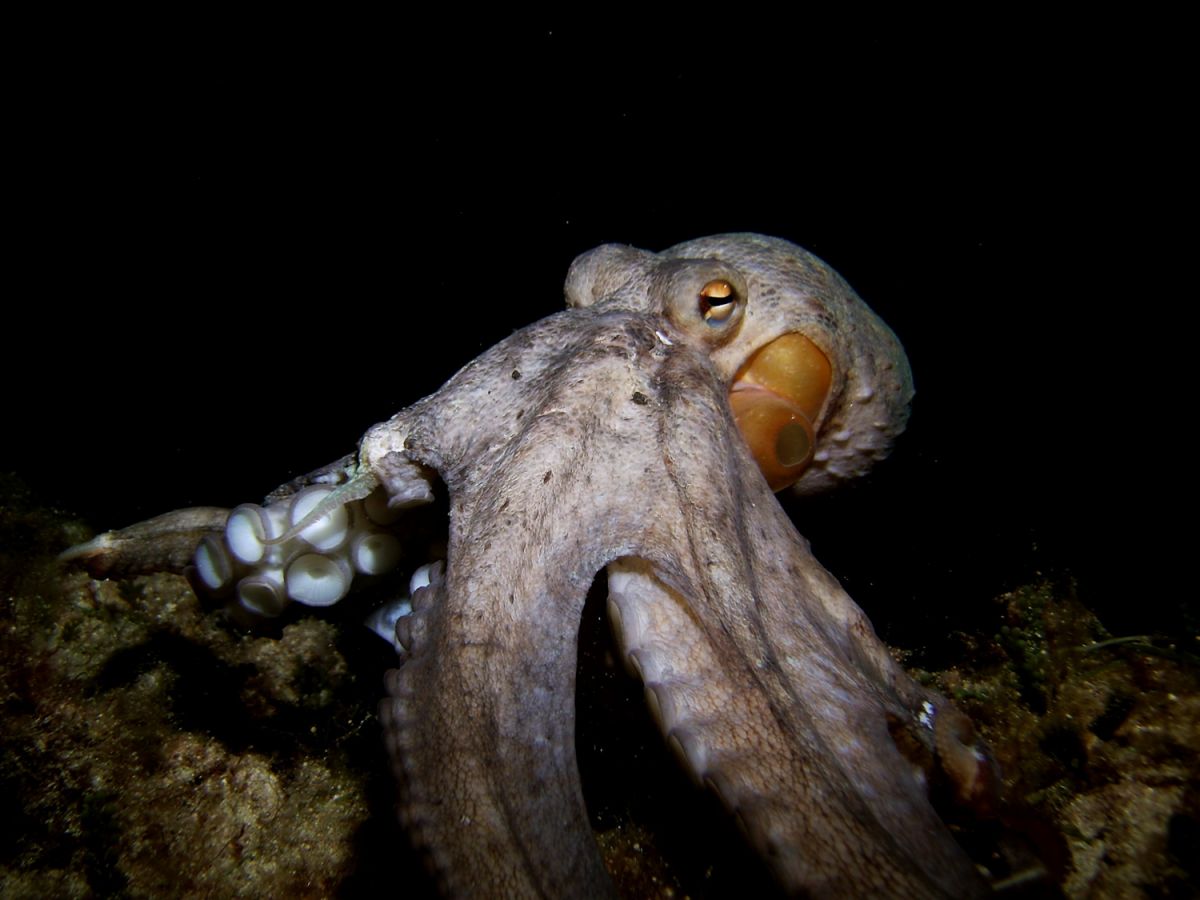
With a central brain and large numbers of neurons within the skin acting as ‘mini brains’; controlling each arm independently, three hearts, blue blood and the ability to camouflage by changing both colour and texture it’s easy to see how this seemingly alien creature captures the imagination. As a recreational diver and general enthusiast, I always keep my eyes peeled whenever I’m in octopus territory. A sighting no matter how fleeting it may be always makes me smile.
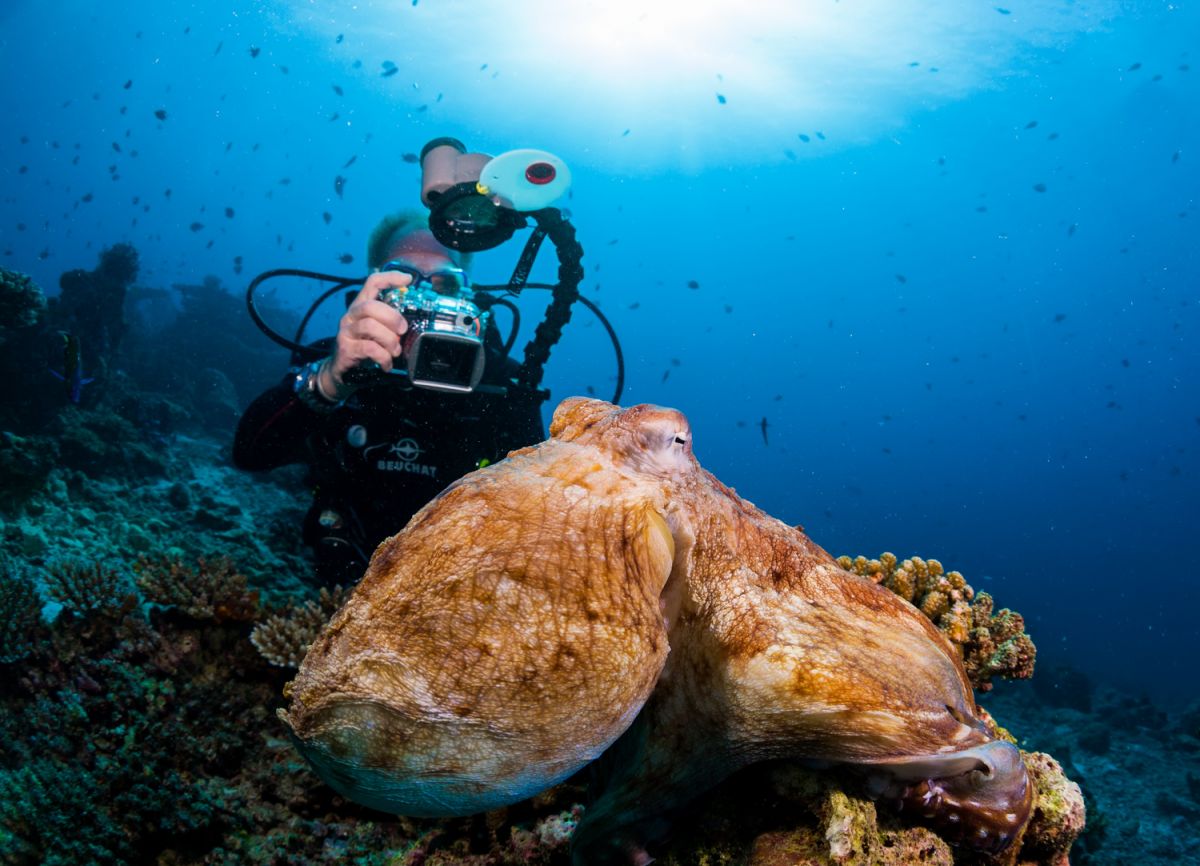
What’s your favourite marine creature?



